
- Start: Les Saisies
- Finish: Les Saisies
- 330 km - 8300 m/d+
- Start 1 : Les Saisies Start 2 : Gd-St-Bernard
- Finish 1 : Gd-St-Bernard Finish 2 : Les Saisies
- Leg 1 : 155 km - 4300 m/d+ Leg 2 : 175 - 4000 m/d+

LE TOUR DU MONT BLANC
You are at the starting line, in the heart of the beautiful ski resort of Les Saisies, it is 4:55 in the morning and you turn on your front light. You listen to the latest safety instructions from the speaker. 4:58 , the departure music starts, a lot of thoughts jump inside your head: “What am I doing here? “Why do I hurt myself like that? “Am I really ready for this huge challenge?” “Why do I do that?”
But you know the answer: To become a Hero! “Hero: person who shows great courage.”
Reference among the ultra events, the Tour du Mont-Blanc Cyclo will require you a flawless preparation, extraordinary courage and push you to exceed your limits to become a hero. Because yes, becoming a hero is the goal of every participant of the Tour du Mont-Blanc. “ The world’s toughest one day bike race ”. This is how the cycling press describes the Tour du Mont-Blanc Cyclo. Indeed, riding 330km and face the 8300m of elevation gain that we offer you, in one day, is not an easy task!
On the program again for the twelfth edition, the crossing of 3 countries, France , Switzerland and Italy . You will once again be confronted with a demanding and ruthless route that will await you with constant strength. A unique experience to be sure.
Epic images

SORT CONTENT BY LOCATION
CLICK TO DRILL DOWN BY COUNTRY/PROVINCE
Your browser is ancient! Upgrade to a different browser or install Google Chrome Frame to experience this site.
Inspiration
- Bikepacking 101
- Join/Support

- View Latest/All
- Bikepacking Videos
- Your Stories
- Rider's Lens
- Field Trips
Popular Tags
- #bikerafting
- #Tour-Divide
- #family-bikepacking
- #winter-bikepacking
- #1Q5V (1 Question 5 Voices)
Gear/Reviews
- Bikepacking Bags
- Camping Gear
- Accessories
- #Editors-Dozen (Our Favorite Gear)
- #Gear-of-the-Year
- #MYOBG (DIY)
- #Decade-in-Review (Best of All Time)
The Gear Index
Latest indexes.
- Mini Panniers
- Saddlebags & Top Openers
- Cargo Cages & Anything Bags
- Gravel Bars
- Drop Bar 29ers
Bikepacking Bikes
- Rigid & Plus Bikes
- Drop-bar & Gravel
- Full Suspension
Rigs & Roundups
- Rider & Rig
- Race/Event Rig Roundups
- Worthy Builds
- Handbuilt Bikes
- #29+ (29-plus)
- #vintage-mountain-bikes
- #cargo-bikes
- Readers' Rigs (Dispatch)
- New Bikes (Dispatch)
Plan Your Trip
- Bikepacking Guides
- Bikepacking Food
- Gear & Pack Lists
- Bike Photography
Essential Reading
- Leave No Trace (for Bikepackers)
- Guide To Bikepacking Bags
- Bikepacking Gear That Lasts
- #Bikepacking-Awards
- Power Of An Overnighter
- Advice For New Bikepackers
- Our Favorite Bikepacking Routes
-
Where to Begin
We have over 300 original and curated bikepacking routes in our global network spanning nearly 50 countries.

Start at our worldwide routes map to dig into our detailed guides with GPS maps and inspiring photography.
By Location
- The United States
- Latin America
- Middle East
By Length (days)
- Overnighters & S24O
- Weekend Routes (2-4)
- Week-long Routes (5-10)
- Odyssey Routes (11-30)
- "Freakouts" (31+)
Local Overnighters
The Local Overnighters Project is a unified effort to document and map one-night bikepacking routes all over the world—by locals, in their own backyards.
The Bikepacking Journal is our biannual printed publication. Each issue features a collection of inspiring writing and beautiful photography. Find details on the three most recent issues below, join the Bikepacking Collective to get it in the mail (anywhere in the world), or click here to find a collection of selected stories in digital format.

The special edition 10th issue of The Bikepacking Journal is one you won’t want to miss! It features 25% more pages with extra stories, bonus art and maps, and much more...

Issue 09 takes readers on trips through time—one to the early days of bicycles—and offers several reminders to be grateful for supportive friends and family, and strangers we meet along the way...

For Issue 08, we invited several contributors to return and pick up where earlier trips and ideas left off and also feature a handful of first-timers whose perspectives we’ve long been eager to share...

Tour du Mont Blanc
% singletrack, % rideable (time), total ascent, difficulty (1-10).
- 10 Climbing Scale Very Strenuous 244 FT/MI (46 M/KM)
- - Technical Difficulty
- - Physical Demand
- - Resupply & Logistics

Contributed By

The Wild Side
The mountains before the 18th century were considered arcane places, full of dangers, inhabited by monstrous creatures, where huge white dragons (i.e. glaciers) descended from the heights to haul away and devour those who wished to violate their territory. The conquest of Mont Blanc in 1786 marks the beginning of a different approach to the mountains, still an unknown place yet to be explored — the birth of Alpinism.
A different approach is also necessary when bikepacking the Tour du Mont Blanc (TMB), one of the most popular long-distance circular treks in Europe. The urge to pedal must meld with the attitude of the mountains and to all that it involves. The Tour du Mont Blanc is an alpine voyage that fills the heart and empties the lungs. For a detailed description of the route, click the Trail Notes tab below.
Photo Gallery
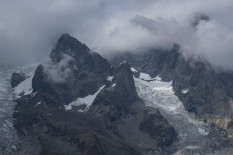
Map & GPS
Submit route alert.
As the leading creator and publisher of bikepacking routes, BIKEPACKING.com endeavors to maintain, improve, and advocate for our growing network of bikepacking routes all over the world. As such, our editorial team, route creators, and Route Stewards serve as mediators for route improvements and opportunities for connectivity, conservation, and community growth around these routes. To facilitate these efforts, we rely on our Bikepacking Collective and the greater bikepacking community to call attention to critical issues and opportunities that are discovered while riding these routes. If you have a vital issue or opportunity regarding this route that pertains to one of the subjects below, please let us know:
- Name * First Last
- Subject * SELECT SUBJECT* Road or trail closure Land access issue Advocacy opportunity** New essential amenity Other reroute or access issue
**Advocacy opportunities may include bringing awareness to a new trail project, conservation initiative, access potential, or local effort that we might help with or bring awareness to via our broad-reaching platform.
- Description *
*By clicking submit, you're also subscribing to our email list. You'll receive an opt-in email before being added.
- Comments This field is for validation purposes and should be left unchanged.
Trail Notes
- Amazing views on Val Veny and Val Ferret, two beautiful glacial valleys that run along the entire italian side of the Mont Blanc Massif.
- The monuments of the conquest of Mont Blanc (1786) in the Chamonix square. The first of 1887 is dedicated to Balmat De Saussure and the second was opened 100 years later to return M.G.Paccard about who was the real soul of the undertaking.
- The bearded vulture (Gypaetus barbatus) it’s one of the biggest vulture which nesting in the old continent. It’s possible to spot this rare bird of prey, recently reintroduced on the Alps, in the most mountainous areas of the route.
- The Marmot (Marmota) a sort of large squirrel, will accompany you along most of the route with its typical whistle. It’s a warning signal used to communicate your presence to the others marmots. It’s indeed the cutest animal of the TMB.
- Weird wooden sculptures along the trail in the wood after Champex-Lac, in Switzerland.
- This route of TMB deviates from the classic route and requires good physical preparation. However, there are several paths to reduce the total ascent and bypass some of the toughest climbs.
- The best time to face the TMB is from mid-June until mid-September. In June the higher mountain passes may still be snow-covered. During July and August the trails are crowded with hikers, while in later September you can experience the TMB in amore intimate way.
- The TMB can be ridden clockwise or counterclockwise. Many people choose to start from Chamonix or Les Houches in France, others from Courmayeur in Italy, but you can choose any point along the route.
- Take high mountain clothes with you. Abrupt changes in weather can lead to sudden snowfalls even in the summer months.
- Don’t’ forget to wear sunscreen.
- The long, steep descents and the weight of the bike in bikepacking mode devour the brake pads. Take with you at least one spare pair.
- In the towns of Chamonix and Les Houches , there are some well-stocked bike shops.
- Wild camping is not generally encouraged , but is tolerated. Set up camp in responsible places. Be discreet. #leavenotrace
- For those who don’t want to have a self-supported adventure there are many shelters along the route where you can sleep and eat. In the summer months, given the turnout, it’s recommended to book, while from mid-September many of them are already closed.
- The massif of Mont Blanc with its glaciers and permanent snow ensures a steady supply of water along the route. (Rivers and creeks in the mountain/ fountains in the villages).
- You can resupply at the general stores in Courmayeur (Italy), Les Houches and Chamonix (France) and in the small village of Le Fouly (Switzerland).
Trail Description
The TMB starts in a clockwise direction from Courmayeur, a small italian town located at the foot of the southern side of Mont Blanc. It quickly reaches 2,000 meters in altitude and the majestic scenery offered by the Aiguille Noire de Peuterey and the mighty glacier of Brenva that flows down valley from the summit of Mont Blanc. By way of a hike-a-bike trail you reach the Mont Favre at 2400mt before falling back to the most spectacular area of the Val Veny, where Dora of Vény river, the incredible Miage glacier, lake Combal, Aiguille des Glaciers and the unmistakable silhouettes of Calcaires Pyramides on the horizon paint an ice-age setting of incomparable beauty.
A comfortable gravel road runs through the valley and after passing some dilapidated military barracks, reaches the high Val Veny, a vast isolated plateau that allows you to catch your breath before start to climb again along a trail that leads to the Col de la Seigne (2512mt) on the border between Italy and France. Arriving here just before sunset means you will enjoy the most beautiful descent of the whole Tour immersed in a surreal atmosphere: the sweet flowing singletrack, the Vallée des Glaciers and peaks on the horizon, all is dyed of gold. After losing about 1000 mt in altitude and passed the small village of Les Chapieux, it rises again to face one of the toughest stretches of the TMB, the climb to the Col du Bonhomme (2,483mt) where the narrow, steep and often rough track will make you curse every the added grams loaded on your bike. However, the Alpine environment and the scenic views offered by the surrounding valleys will reward the effort.
The singletrack descent, initially tight and technical, becomes smoother and comfortable as you get closer to the valley where a gravel road leading into the town of Les Contamines. From here you’ll climb a steep fire road to reach Col de Voza, then cross the tracks of the Tramway du Mont Blanc to go down to the village of Les Houches, along an old school crumbly downhill track. The route continues on singletrack through the forest, running along the north side of the Arve valley, where through the branches of the pine trees, you see the majestic Glacier du Bossom and overhanging peaks of the Aiguille du Midi and the Aiguille du Dru.
After the traditional alpine village of Chamonix, you will reach the town of Le Tour where a jeep road reaches the Col de Balme at 2195mt on the border of France and Switzerland. From here a long, scenic singletrack runs the west side of the Croix de Fer and then enters the forest, where it becomes rocky and very technical. From the valley of Trient you’ll climb to the amphitheater of the namesake glacier to overcome the glacial river through a wooden bridge and reach the pass of the Col de la Forclaz. A steep narrow path climbs to the Alp Bovine becoming increasingly challenging in the final stretch where boulders along the trail force you to lift the front wheel.
The route continues between alpine pasture and forest to reach the valley bottom through a steep descent on loose rock that winds between boulders and ancient trees uprooted by winter avalanches. Back in the valley you’ll climb the swiss side of Val Ferret, cross the village of Le Fouly and with a succession of trails and fire roads you reach the Col du Grand Ferret at 2,537 mt altitude, on the Swiss-Italian border. From here the view of the Italian Val Ferret is breathtaking. The return to Chamonix is done by traversing the mountain side, a panoramic balcony on the northeastern side of the Mont Blanc massif: from Mont Dolent to the Aiguille de Triolet, from the Grandes Jorasses to the Giant’s Tooth, until the 4810mt summit of Mont Blanc.
With Thanks
Thanks to Adidas Eyewear, CamelBak, EVOC, FiveTen, Genesis Bikes, Madison Clothing, Miss Grape, MSR, Therm-a-Rest, TitanStraps and Vittoria for supporting this trip.
Additional Resources
- autourdumontblanc.com is a site plenty of useful info about the TMB route.
- Visit MontanusWild.com – For the full set of photos from this trip.

Terms of Use: As with each bikepacking route guide published on BIKEPACKING.com, should you choose to cycle this route, do so at your own risk. Prior to setting out check current local weather, conditions, and land/road closures. While riding, obey all public and private land use restrictions and rules, carry proper safety and navigational equipment, and of course, follow the #leavenotrace guidelines . The information found herein is simply a planning resource to be used as a point of inspiration in conjunction with your own due-diligence. In spite of the fact that this route, associated GPS track (GPX and maps), and all route guidelines were prepared under diligent research by the specified contributor and/or contributors, the accuracy of such and judgement of the author is not guaranteed. BIKEPACKING.com LLC, its partners, associates, and contributors are in no way liable for personal injury, damage to personal property, or any other such situation that might happen to individual riders cycling or following this route.
FILED IN (CATEGORIES & TAGS)
Switzerland.
Please keep the conversation civil, constructive, and inclusive, or your comment will be removed.
Rad Companies that Support Bikepacking

You need to be logged in to use these features. Click here to login , or start an account if you’re not yet a member of the Bikepacking Collective…

The Ultimate Guide to the Tour du Mont Blanc
The Tour du Mont Blanc is one of the world’s most iconic treks. Frequently referred to as the ‘TMB’ for short, the Tour du Mont Blanc circumnavigates the Mont Blanc massif and takes trekkers through France, Italy, and Switzerland over the course of 11 stages. Along the way you’ll experience stunning valleys, high-mountain passes, incredible cuisine, and some of the best hiking in the world.
This guide is designed to be the perfect planning companion for your own Tour du Mont Blanc adventure. We’ve included everything you need to know to have a spectacular trip in one place, so you can be sure you’ve thought of everything. Read it through in a single go or jump to a specific section below, but rest assured knowing you’ve found the best resource on the internet for planning your Tour du Mont Blanc trek. Let’s get started!

In this Tour du Mont Blanc Guide
- How long is the Tour du Mont Blanc?
- How difficult is the Tour du Mont Blanc?
- Which direction should I hike?
- When should I hike the TMB?
- Designing your TMB Itinerary
- Shortcuts, detours, and rest days on the TMB
- Stage-by-stage Itinerary for the Tour du Mont Blanc
Tour du Mont Blanc Accommodation
- Getting to Les Houches from Geneva
- Getting to Champex from Geneva
- Luggage storage and transfer on the TMB
- Weather on the TMB
- Food and drink on the TMB
- Maps & Guidebooks
- Budgeting and money
- What to pack for the TMB
- How to train for the Tour du Mont Blanc
Everything you need to plan your TMB – all in one place.
Whether you prefer mountain huts or hotels, fastpacking or meandering, or something in between, we’ve got you covered. Our Guide to the Tour du Mont Blanc is the ultimate tool to help you plan your perfect trip.
When you purchase a guide, you’ll get instant access to all the information you need to plan your trip in our planning portal as well as in a downloadable PDF eGuide.
- Planning Portal Access: Get instant access to our online trip planning portal complete with 9-day, 11-day, and 12-day TMB itineraries.
- Accommodation Insights: You’ll get information on accommodation options for every stage, including where to book when popular huts are fully booked!
- GPS Maps: Every guide comes with custom GPS maps for three different itineraries. Download the maps for offline use so you’ll always be able to find your next campsite.
- Expert Advice: Find detailed maps for every stage, accommodation & booking information, packing lists, and much more.

We’re confident this is the best resource available for camping on the Tour du Mont Blanc. Pick up your guide below and if you’re not satisfied for any reason we’ll give you a full refund!
( 100% Money Back Guarantee )
About the Tour du Mont Blanc
The Tour du Mont Blanc (TMB) is a 170-km trek that circles the Mont Blanc massif. The route is traditionally walked in the anti-clockwise direction over 11-stages. The TMB starts and finishes in the French village of Les Houches , which sits adjacent to the popular mountain town of Chamonix . Along the way the trail passes through seven unique and beautiful valleys, where charming hamlets and regional delicacies abound. Between the valleys, the route traverses a rugged mountain landscape and stunning high alpine scenery.

The TMB is one of the most popular long-distance treks in Europe, with over 10,000 hikers per year embarking on their own walk around Mont Blanc. It is easy to understand why when considering the ease of access to the trek , plentiful accommodation options , and the fact that the route is achievable by most reasonably fit walkers . The closest major city to the TMB is Geneva, Switzerland, located just a few hours north by train or bus .
The route passes through seven mountain valleys (Val d’Arve, Val d’Montjoie, Vallee des Glaciers, Val Veny, Italian Val Ferret, Swiss Val Ferret, and Vallee du Trient) and visits charming alpine hamlets as it winds its way around Mont Blanc. Contrary to what many believe, the TMB does not go through the iconic French mountain town of Chamonix, instead taking a trail high-above this famed destination.

Want to see the entire TMB in three minutes? The fly through video below will take you along the entire circuit, providing a helpful overview of the trek.
How Long is the Tour du Mont Blanc?
The short answer: it depends! The Tour du Mont Blanc has many variations and route options as it makes its way around Mont Blanc. These variations include options to tackle challenging mountain passes (see the Fenetre d’Arpette ), visit crystal clear mountain lakes (such as Lac Blanc ), or to simply avoid some of the more challenging sections of the hike. However, the classic TMB route is approximately 170-kilometers long. Taking alternate routes may lengthen or shorten your total distance, depending on the routes chosen. Throughout the trek, you’ll have options to walk less or more depending on the weather, your preferences, and the conditions encountered on the trail.

How Difficult is the Tour du Mont Blanc?
If you are reasonably fit and have some trekking experience , you should be well-suited to the physical challenges of the TMB. It is a tough trek that involves long, steep ascents and descents on nearly every stage , but it isn’t too technically demanding. Remember, the Tour du Mont Blanc is a hike not a climb! Trekkers should be prepared for long days of hiking with plenty of elevation change, but frequent services along the route make it more approachable. Weather can add to the challenge , and hikers should be prepared to encounter rain and even snow at any time.
Many of the stages of the TMB are structured such that you’ll begin your hike from the valley floor, trek up and over a mountain pass, and then descend into the next valley to finish the day. This provides a nice rhythm to the Tour du Mont Blanc but can also make for some difficult days. Make sure you have healthy knees, as the downhill sections can take their toll! All that being said we truly believe that most walkers who invest a bit of time in training and preparation can complete the Tour du Mont Blanc with no problems and have a great time doing it! Our best advice is to be sure you are in good physical condition and also make sound decisions when you encounter bad weather or snow.
Get The FREE TMB Essentials Handbook

Our free PDF guide covers all the basics – when to hike, accommodation, typical costs, and more!
Your TMB Essentials Booklet will be emailed to you shortly.

Planning Your Perfect Tour du Mont Blanc
Now that you have a bit of background on the TMB let’s get to the heart of this guide: helping you plan your perfect Tour du Mont Blanc! First, we’ll start with some basics such as which direction you should hike in and what time of year will be best for you to tackle the TMB. Then we’ll dive into some more in-depth considerations such as designing your perfect itinerary and selecting your accommodation . Let’s get started!

Which Direction Should I Hike the TMB?

The TMB is traditionally hiked in an anti-clockwise direction beginning in the French town of Les Houches, adjacent to Chamonix. It is also possible to walk the route in a clockwise direction, and trekkers headed this way typically start in the Swiss town of Champex-Lac . Below we’ve outlined some pros and cons of hiking in each direction.
Anti-Clockwise (starting in Les Houches, France)
- Follows the classic route, good if you’re a sucker for tradition.
- Begins near Chamonix, which is easier to get to from the Geneva Airport than Champex.
- Rewards hikers with jaw-dropping views of Mont Blanc on the final stage.
- More people hike in this direction, so the trail could feel more crowded throughout the day.
Clockwise (starting in Champex, Switzerland)
- Fewer hikers walking in the same direction as you.
- The first few stages are a bit mellower, allowing you to get acclimated before tackling the tougher sections.
- You’ll meet different people at each stop along the way.
- You’ll pass a large wave of people walking in the opposite direction each day, which can get tight on narrow trails.
- Champex (your starting point) has fewer amenities and is less conveniently connected by public transport than Les Houches. If you want to start in Les Houches and hike clockwise, be warned that the first day involves a very challenging climb, which can be a tough way to begin your trek.
All things considered, you will be sure to have a great time on the TMB regardless of which direction you choose to hike in. Think through your options and make the best decision for yourself!

When Should I Hike the Tour du Mont Blanc?
The hiking season for the TMB generally lasts from late June through mid-September. July and August are the busiest months, and accommodation (with the exception of camping) must be booked in advance. There’s a chance you could get away without advance bookings in June and September, but we still wouldn’t recommend it.

June : Early in the season, you are likely to encounter snow on the trail. Depending on the snow levels, there could be sections that will be impassible and you may need to reroute. Otherwise, expect cool evenings, bright sunny days, and less crowded trails. Keep in mind that most mountain refuges don’t open until late June.
July : Hikers could still encounter some snow along the trail, but chances of significant snow will diminish as the month wears on. Expect beautiful warm days and abundant wildflowers. This is a popular month to hike.
August : Another busy month on the trail, hikers can expect snow-free paths and warm, sunny weather. The end of August brings the Ultra Tour du Mont Blanc trail race . Although the atmosphere during the race week is incredible, we recommend you try to avoid hiking during the UTMB to avoid crowds and logistical challenges.
September : Expect shorter days and increasingly chilly weather. This is a beautiful time to be on the trail and less crowded, although some accommodation providers may be closed for the season.
The bottom line : The best (and safest) time to hike the TMB is from late-June through early September. You’ll need to make advance bookings if you plan to hike during this time frame.

Designing Your TMB Itinerary

Now that you have a sense of which direction you’ll plan to hike in as well as which month you’ll embark of your trip it’s time to start thinking about your specific itinerary! As we’ve mentioned, the Tour du Mont Blanc in traditionally hiked over the course of 11 days, which will be a great pace for many hikers. However, there are certainly those who will want to tackle the trail in fewer days or savor their time in the Alps and extend their hike over the course of two weeks or more!
Whatever you choose be sure to consider your personal abilities, how much time you’ll have, and what you want your typical days on the TMB to look like. Given the amount of accommodation options on the TMB your itinerary possibilities are nearly endless! Checkout our general guidelines below as well as our stage-by-stage itinerary for the traditional 11-day Tour du Mont Blanc circuit to get some ideas of your own. Here are our general guidelines for thinking about how many days you’ll need to complete the TMB:
- 8-10 days : Fast pace (8 – 10 hours of hiking each day)
- 10-11 days : Average pace (without a rest day) (6-8 hours of hiking each day)
- 11-12 days : Average pace (with a rest day) (6 – 8 hours of hiking each day)
- 12-14 days : Leisurely pace (6 – 7 hours of hiking each day)
Shortcuts, Detours, and Rest Days on the TMB
One of the great things about trekking the Tour du Mont Blanc is the ability to alter your route based on the conditions encountered. Bad weather, injuries, fatigue, burnout, limited time; there are countless reasons why you may need to use alternative means of transportation to get from one point of the TMB to another. Fortunately, the trail rarely strays too far from civilization, meaning you have tons of options along the way for when you need them. Below, we’ve listed some of the most common detours and shortcuts used on the TMB, as well as a few great resources for problem-solving your unique situation.
Bellvue Cable Car: This option allows you to eliminate the lion’s share of the climb out of Les Houches on the traditional (anti-clockwise) first stage of the trek . Once you get to the top, follow the signs a short way to rejoin the main trail.
La Maison Vielle Cable Car (and chairlift): If you’d like to avoid the knee-wrenching descent into Courmayeur ( Stage 4 ), you can take a chairlift from La Maison Vieille down to Plan Chécrouit, where there’s a cable car that terminates in the town of Dolonne, across the river from Courmayeur. You can take a bus from Dolonne to Courmayeur if needed, otherwise it’s just a short walk.
La Flégère Cable Car: This gondola departs directly next to Refuge la Flégère and ends in the village of Les Praz. From there, it’s possible to take a bus or taxi back to Chamonix. This is a good option if you need to cut out the final day of the TMB , or if you want to hike in reverse and avoid the long, long climb out of Les Houches. You could also take the cable car down into Les Praz for more accommodation and services at this stage, and then take it back up the next morning to continue your trek.

La Chapelle to Notre Dame de la Gorge Navette : This free shuttle bus, or “navette,” runs from La Chapelle (a short walk from the trail on the outskirts of Les Contamines) to Notre Dame de la Gorge (at the beginning of Stage 2 ). This means you can pick it up at the end of Stage 1 to cut out the last hour or so of walking before reaching Les Contamines, and you can also take it from Les Contamines to Notre Dame de la Gorge on the next day to get a bit of a head start (30-60 minutes, depending on where you stay in Les Contamines).
Les Chapieux to Refuge des Mottets Navette : This shuttle allows you to avoid about 2 hours of road walking at the beginning of Stage 3 . It only costs a few euros to ride, and you can pick it up at the tourist information office in Les Chapieux. Make sure to buy your tickets in advance (do so the previous day, at the tourist office), as the shuttle fills up quickly in the mornings!
Arriva Bus-In and around Courmayeur: This is the bus network you’ll use if you need to take any alternative transportation in Val Ferret or Val Veny (the two valleys in the surrounding area). You can take a bus from La Visaille to Courmayeur to cut out the final hour of walking on Stage 4 . This bus can also be used to reach campgrounds that are not located directly on the TMB route. Additionally, you can use the Savda bus to get to either La Fouly or Champex (although you will need to transfer in Orsières and take a Post Bus the remainder of the journey).
TMR/SBB Bus La Fouly to Champex: You can get from La Fouly to Champex (effectively cutting out all of Stage 7) by bus. You’ll need to take line 272 from La Fouly to Orsières, where you’ll transfer to the 271 that will take you to Champex. Service is relatively frequent and easy to navigate.

SBB Train from Champex to Trient: It’s relatively easy and straightforward to take the Swiss SBB train from Champex to Trient, effectively cutting out all of Stage 8. You need to utilize the local bus in Champex and may need to transfer a few times on the way, but Swiss trains really do live up to their reputation for being timely and efficient.
Keep in mind that there are many more transportation options along the TMB! We’ve simply listed a few of the most common and straightforward ones. If you need to find a specific detour, we recommend using Rome2Rio or Google Maps as a starting point. PostBus and SBB also have excellent apps that can be used to plan trips and buy tickets.
NOTE: Many of the buses and cable cars only run during the peak months of the hiking season (July and August). Make sure that you check the websites and timetables before planning to use any of the options listed above.
Stage-by-Stage Itinerary for the Tour du Mont Blanc
We recommend most hikers take between 10-12 days to hike the Tour du Mont Blanc, depending on their hiking ability, pace preferences, and weather conditions. The classic itinerary described below takes 11 days to complete and will be the best option for the majority of hikers. We’ve given you a brief overview of each of the classic eleven stages, as hiked in the anti-clockwise direction. While your specific itinerary may look different, it’s still helpful to look over these stage descriptions to get an idea of what you can expect on the trail.
Be sure to check out our interactive map and elevation profile to get a comprehensive understanding of all of your options!
Stage 1: Les Houches to Les Contamines
- Distance & Elevation: 17 km // +1,112 m, -902 m
- Estimated hiking time: 5 – 6 hours
- Where to stay: Chalet-Hôtel La Chemenaz
Description: This stage is a perfect introduction to the TMB. It’s not too technical or demanding, yet it still gives walkers a decent challenge. You’ll start by climbing fairly steeply up out of Les Houches and past a ski area before topping out at Col de Voza . From the Col, you’ll descend along dirt then paved roads while enjoying incredible views of the surrounding glaciers and aiguilles. Continue along the road through some very quaint hamlets, before veering off onto a trail (pay attention-this is easy to miss). You’ll end this stage by walking along a mellow riverside path all the way to Les Contamines.

Stage 2: Les Contamines to Les Chapieux
- Distance & Elevation: 19 km // +1,440 m, -1,024 m
- Estimated hiking time: 7 – 8 hours
- Where to stay: Auberge de la Nova
Description: Start this stage by passing by the Baroque chapel of Notre Dame de la Gorge . From there, you’ll follow an old Roman road steadily uphill before getting a break when the trail levels out and passes through open meadowland. After that, prepare for another steep climb, much of it on stony steps and scree, up first to the saddle of Col du Bonhomme, and then even higher to the Col de la Croix du Bonhomme. Here you’ll find the Refuge de la Croix du Bonhomme , which makes a great spot to enjoy a break and small meal. Early in the season, it’s common to encounter snow on this section.
Upon reaching the summit of Col de la Croix du Bonhomme, begin your descent towards Les Chapieux. The trail on the way down begins as a steep footpath, eases to join a jeep road for a bit, and then finishes with steep zigzags through a pasture above Les Chapieux.

Stage 3: Les Chapieux to Rifugio Elisabetta
- Distance & Elevation: 14 km // +1,079 m, -480 m
- Where to stay: Rifugio Elisabetta
Description: Choose to begin this stage with either a couple of miles of road walking, or by short-cutting it on a bus to Refuge des Mottets . From the refuge, you’ll begin a relatively short and easy climb to the Col de la Seigne. Reaching the Col is special for a few reasons. First it marks the first of three international borders that you’ll cross on your trek. Standing at the top of the Col, you can look back towards France while also gazing ahead into Italy. Additionally, the wide-open views here are downright marvelous. From Col de la Seigne, enjoy a mellow descent to Rifugio Elisabetta.

Stage 4: Rifugio Elisabetta to Courmayeur
- Distance & Elevation: 16 km // +603 m, -1,536 m
- Where to stay: Maison La Saxe
Description: As indicated by the elevation statistics, this stage is dominated by a very long and steep descent into Courmayeur. Before beginning that section, however, you’ll cross through the expansive Vallon de la Lee Blanche, where Lac Combal reflects the magnificent surrounding peaks. From there, you’ll climb for awhile on an undulating path to reach Col Chécrouit, where the path begins its long downhill trajectory.
After passing a few ski areas (options to take the cable car down may be available), you’ll complete numerous switchbacks through the woods until you reach the quaint town of Dolonne. Walk through the town of Dolonne and cross the river to enter Courmayeur. Enjoy a wide arrange of excellent food and luxurious accommodation in Courmayeur. This is also a great place to take a rest day.

Stage 5: Courmayeur to Rifugio Bonatti
- Distance & Elevation: 12 km // +1,225 m, -415 m
- Estimated hiking time: 5 hours
- Where to stay: Rifugio Bonatti
Description: The views along this stage are some of the most spectacular of the entire walk, but you have to earn them with a very steep climb at the outset. You’ll enjoy the satisfaction of watching Courmayeur grow ever smaller down below you as you zigzag your way up the hillside to Rifugio Bertone.
From the Rifugio, you’ll enjoy an undulating, mellow walk with unparalleled views of Col de la Seigne, Aiguille Noire, Mont Blanc and the Grandes Jorasses. It’s an incredible experience to look back and see Col de la Seigne far in the distance, knowing you’ve traversed such an expanse in just a few days with your own two feet. The beautiful views continue to abound all the way until you reach Rifugio Bonatti, an atmospheric and memorable place to spend the night.

Stage 6: Rifugio Bonatti to La Fouly
- Distance & Elevation: 19 km // +1,032 m, -1,456 m
- Estimated hiking time: 6 – 7 hours
- Where to stay: Hotel Edelweiss
Description: This stage rewards hikers with another border crossing and more tremendous views. The walk begins with a relatively flat path that crosses a lovely hillside. Eventually, you’ll descend into Val Ferret (the Ferret Valley) before beginning a steep climb past Rifugio Elena and up further until you finally reach the Grand Col Ferret. At the top of the pass, you’ll enjoy your first views of Switzerland as well as phenomenal views of majestic peaks in every direction. It’s all downhill from there, much of which is pretty manageable, save for a few steep sections. There’s a rather uninspiring stretch of road walking at the very end of the day, but the charming town of La Fouly makes it all worth it.

Stage 7: La Fouly to Champex
- Distance & Elevation: 15 km // +729 m, -860 m
- Estimated hiking time: 4 – 5 hours
- Where to stay: Au Vieux Champex
Description: All of the guidebooks will tell you that this is the easiest day of the TMB (which is technically true), but don’t expect this stage to be completely effortless. Sometimes the “easiest” days can end up feeling really tough if we go into them with too cavalier a mindset. The first two thirds of this stage are quite mellow indeed; you’ll wind your way gently downhill through a quintessential Swiss valley filled with small farms and picturesque hamlets.
A substantial climb to Champex waits for you at the end of the stage, however. Even though it really is much less strenuous than the ascents of previous stages, it can be a shock to the body at the end of the day. Fortunately, the trail stays in the shade of the trees for much of the way up, and you’ll also get to experience the many wooden sculptures that are interspersed throughout the woods.

Stage 8: Champex to Col de la Forclaz
- Distance & Elevation: 14 km // +1,125 m, -1,066 m
- Where to stay: Hotel de la Forclaz
Description: On stage 8, the main TMB route follows an undulating path up to the Alp Bovine and then descends to Col de la Forclaz, but there are quite a few options to consider here. The Fenêtre d’Arpette route is a popular variant for those seeking challenge and adventure. With either route, you’ll also have a few options to choose from when it comes to your stopping point. For a shorter day, you can stop at Hotel de la Forclaz or you can continue on further to either Le Puety or Trient. There isn’t a clear “best” choice for what to do on stage 8, but it is important to think about what is best for you in terms of challenge, distance, and accommodation.

Stage 9: Col de la Forclaz to Tré-le-Champ
- Distance & Elevation: 14 km // +1,112 m, -1,229 m
- Where to stay: Auberge la Boerne
Description: This stage isn’t without physical demands, gaining and losing quite a bit of elevation in a relatively short distance. While most of the climb maintains a grade that isn’t crazy steep, the descent is another story. Even if you don’t love the arduous nature of stage 9, you’ll almost certainly be smitten by the scenery. Not only does summiting Col de Balme mean you’ll celebrate your third and final border crossing (back into France), but you’ll also get incredible views of Mont Blanc, back in sight for the first time in several days. Seeing Mont Blanc again and being back on French soil will likely remind you that your trek is nearing its end. Make sure to savor the final two stages of this incredible experience!

Stage 10: Tré-le-Champ to La Flégère
- Distance & Elevation: 7 km // +892 m, -446 m
- Estimated hiking time: 4 hours
- Where to stay: Refuge de la Flégère
Description: Allow yourself to sleep in on this stage, as you’ll have just a short walk ahead of you. Better yet, get to Refuge la Flégère early and enjoy a walk to the nearby Lac Blanc and a meal or beverage at the refuge. The final two days of the TMB follow the Grand Balcon Sud, a balcony trail with unrivaled views of Mont Blanc and the surrounding peaks. To reach the high point, you’ll need to climb a series of ladders, catwalks, and platforms that go on for longer than you might expect. If you have a fear of heights, we recommend taking the Col des Montets variant. This route takes about the same amount of time and still has great views. Upon reaching Refuge la Flégère, join in the festive revelry of your fellow hikers marking their final night on the trail.

Stage 11: La Flégère to Les Houches
- Distance & Elevation: 17 km // +969 m, -1,821 m
- Where to stay: Hotel Le Morgane (Chamonix)
Description: The final stage of the TMB is a big one in every way. Even though it’s dominated by downhill walking, the physical demands shouldn’t be overlooked. Start the walk on a very mellow uphill grade, before beginning a steeper climb past a ski area until reaching Col du Brevent. Take in the scenery (and catch your breath) here, but keep in mind that the best is yet to come. Climb further on more rugged terrain until you reach the almost-summit of Le Brevent (you can take a 5-minute detour to get to the actual top if you’d like).
From Le Brevent you’ll have an unobstructed and totally breathtaking vantage point from which to take in the entire Mont Blanc range. Take time to study every intricate glacier and craggy spire before finally tearing yourself away to make your way down towards Les Houches. Fortunately, you’ll continue to enjoy the scenery for awhile as you descend on a very long and very steep path. As you near Les Houches, the trail enters the woods where it passes a zoo and the large Christ Roi statue. Finally, the path ends at a road and perhaps the least scenic part of Les Houches. Keep walking to reach the more charming part of town, then stop and toast to your remarkable accomplishment!

There are accommodation options along the TMB to suit every budget and travel style. While not all of these options are available at every stage of the route, you can certainly customize your itinerary to fit your needs. It’s nearly inevitable that you’ll need to stay in a mountain refuge on at least one stage of your trek. Be prepared for basic, communal facilities, but don’t fear! These special places often yield the most memorable stays of the entire trip. We’ve provided a brief explanation of each of the options below:
Hotels on the Tour du Mont Blanc

Typically small and independently owned, the hotels along the TMB serve up a dose of luxury to the weary hiker. Unless otherwise noted by the hotel, expect all of the usual amenities (hot shower, private bathroom, breakfast offered, linens and towels provided, etc). Hotels typically cost upwards of €65 per person. For an additional fee, many hotels offer half-pension (AKA half-board or demi-pension ) which includes dinner and breakfast. A few hotels along the route have dortoirs in addition to private rooms. Dortoirs are dormitories that offer a good budget option.
Read More: TMB Accommodation and Refuge Guide
Refuges on the Tour du Mont Blanc
We consider a stay in a mountain hut to be a highlight of any TMB trek. Set in stunning and remote locations, the ambiance at the refuges (or rifugios in Italian) can’t be beat. Half-pension gets you a bed in a dorm (linens not provided), a delicious communal dinner, and a basic breakfast. Some refuges also offer private rooms (with shared bathrooms). Expect to pay around €55 per person for half-board in a dorm.

Gites d’Etape and Auberges
These are simple guest houses offering basic, dorm-style accommodation. Half-pension (dinner and breakfast) is typically included in the price. There are shared bathroom facilities with hot showers. Bed linens are usually provided. These are a good option for those who want to stick to a smaller budget, but don’t want to carry camping gear. Expect to pay around €50 per person for half-pension.

Camping on the Tour du Mont Blanc
Although they are the cheapest accommodation option along the TMB, the campgrounds on the route are quite luxurious. All provide sinks and toilets, and many offer hot showers and even WiFi! Expect to pay around €15 per person to camp. Note: you cannot camp on every stage of the TMB. Be sure to check out our Complete Guide to Camping on the Tour du Mont Blanc for a full camping itinerary.

Do I Need to Book my Accommodation in Advance?
This is a question that creates stress and anxiety for many hikers as they are planning for their TMB adventure. The short answer is that you should try to book your accommodation as early as possible, but the longer answer is a bit more nuanced. We’ve broken it down for you here, so you can plan with more confidence and less worry.
- Mountain refuges are the most important to book ahead of time. Many of these huts are quite small, so they fill up quickly. Many refuges accept reservations year-round, typically allowing you to book up to 12 months in advance. Some, however, do not respond to reservation requests during the winter months (September-March, typically). You should still try to email or call the refuge to reserve your spot as soon as you know your itinerary, even if it’s prior to March.
- Gites, auberges, and guesthouses should be your next priority when it comes to advance bookings. This is especially true in the smaller villages where accommodation options are limited, and/or if you have specific preferences for your lodging (ex; private room, linens provided, etc). As soon as you’ve made your travel plans, reach out to the gite/guesthouse (or book online). For peak summer months, it’s optimal to have these bookings made by the end of March.
- For larger hotels, you have a bit more wiggle room when it comes to making reservations. You should definitely still try to do it as early as possible, but they have more rooms and are often located in places with greater availability of lodging options.
- You do not need to make advance reservations for any of the campgrounds on the TMB. In fact, we recommend that you don’t. This will allow you to maximize the freedom and flexibility that camping provides, and it will make it much less complicated to check in at the campgrounds.

Booking your Accommodation for the Tour du Mont Blanc
When it comes to booking your TMB accommodation, there’s good news and bad news. Let’s get the bad news out of the way first. There’s no single, streamlined booking platform for all of the refuges and/or accommodation providers along the route. In fact, the way you book will vary greatly from place to place. The good news is that most (but not all) can be booked using the Autour du Mont Blanc platform . Many refuges, hotels, and gites also have their own websites with easy online booking platforms. Some require that you send an email or complete a contact form on their website.
The TMB is relatively easy to get to given its close proximity to Geneva, Switzerland. Flight connections from the rest of Europe, the US, and other international destinations are frequent. Travel by train to Geneva is also straightforward, if not a bit more time consuming than air travel. We recommend booking you flights as soon as you are able, as fares during the peak summer season can be quite high.
Getting to Chamonix/Les Houches from Geneva
The vast majority of walkers will get to the start of the Tour du Mont Blanc by first flying into the Geneva Airport (GVA). There are frequent flights to Geneva from the rest of Europe as well as a good number of flights from the U.S. Once you’ve landed in Geneva, you’ll have several options for getting to Chamonix/Les Houches:
- FlixBus – This is one of the least expensive and highest rated options. The service departs directly from the Geneva Airport and will take you to the Chamonix Sud bus station, in the heart of Chamonix. Expect the journey to take about two hours.
- AlpyBus – AlpyBus runs a door to door transfer service from the Geneva Airport to hotels in the Chamonix Valley. It is more costly than FlixBus, but also more convenient since they’ll drop you directly at your hotel or campground.
- Mountain Drop-offs – Similar to AlpyBus, Mountain Drop-offs runs a door-to-door transfer service for walkers arriving in Geneva. Very highly rated.
All of the options above will also be able to transport you back to the Geneva Airport at the end of the TMB. Many also offer discounts for booking a return ticket.

Getting to Champex from Geneva (for clockwise TMB hikers)
If you plan on walking the Tour du Mont Blanc in the clockwise direction, you may be choose to start your hike in the Swiss town of Champex. You’ll likely begin your travel by first flying into the Geneva Airport (GVA). Once you’ve landed in Geneva, you’ll need to connect via train and local bus to reach Champex. Unlike Chamonix, you have few options other than public transportation to reach Champex. However, Swiss trains are renowned for being on time and generally pleasant. Here are the instructions for reaching Champex from the Geneva Airport:
- Step One – Train to Martigny : Upon exiting the airport in Geneva you’ll need to catch a train to the Swiss town of Martigny. Most of these trains will be signed in the direction of Brig, so be sure to inquire that the train you are boarding stops in Martigny. The journey should take around 1 hour and 45 minutes.
- Step Two – Train to Sembrancher : From Martigny you’ll take a 15-minute train ride to the town of Sembrancher.
- Step Three – Train to Orsières : From Sembrancher, you’ll catch another train to the town of Orsieres. This is a short, 10-minute ride from Sembrancher.
- Step Four – Local bus to Champex : Unfortunately, Champex is not on a train line so you’ll have to complete the final leg of your journey via the local bus. From outside the Orsieres train station, you’ll need to catch bus #271 to Champex. The ride takes approximately 30 minutes and will drop you conveniently in the center of Champex.
The Swiss train provider, SBB , has an excellent website to help you plan your journey. We also recommend downloading the SBB app to your phone, which is very helpful for viewing timetables while traveling. Rome2Rio is also an excellent resource for mapping out your specific trip.

Luggage Storage and Transfer on the Tour du Mont Blanc
Many walkers will be traveling with more luggage than they might want to carry for the entire TMB. Storing extra luggage or having it transferred to your next stop is a great way to avoid carrying excess weight on your trek, while still allowing you to have everything you need for the remainder of your trip. This is especially true if you plan on traveling elsewhere on your holiday.
Luggage Storage on the TMB
Unfortunately, there are no luggage storage facilities at the train station in Chamonix. Walkers can store their extra luggage at the Gite le Chamoniard , which charges €4-6 per day, depending on the size of the bag. Other hotels and accommodation may store your baggage if you have a reservation before and after you walk, but you’ll want to confirm this ahead of time.
Luggage Transfer on the TMB
If you’re concerned about the difficulty of the TMB and have room in your budget, using a luggage transfer service can be an excellent way to reduce your effort on the trail and make your trek more enjoyable. Both of the companies we’ve recommended below come highly rated and allow you to customize services to your itinerary and preferences. Each morning of your trek, you’ll simply leave your bag in the designated storage location to be picked up by 8:00am. Your luggage carrier will deliver your bags to the next stop on your itinerary by 6:00pm each evening. Keep in mind that they will not be able to deliver your luggage to any of the mountain refuges that are inaccessible by road (including Rifugio Bonatti and Rifugio Elisabetta). Additionally, they will not drop your luggage at private residences or AirBnB’s.
- Besson Taxi Mont Blanc : This carrier typically charges between €150-€300 per bag for transfers, depending on how many days you use their services and how many people are in your group. They charge per bag and have a strict policy that bags may not exceed 15kg. This company also can provide shuttle services between stops on the TMB, if needed.
- Chamonix Valley Transfers : This company offers a variety of customizable luggage shuttles that range in price from €400-€800 for up to eight bags. The price increases with the number of stops added to your itinerary. They get good reviews for their reliability and friendly service.

Tour du Mont Blanc Weather
Mountain weather is always volatile, and what you’ll experience on the Tour du Mont Blanc is no different. Conditions can change very rapidly in the Alps, meaning that you can find yourself in the middle of a whiteout blizzard or on an exposed ridge during a thunderstorm without much warning. However, for the most part the weather during the hiking season is ridiculously lovely. Expect warm, sunny days, cool evenings, and not too much rain. You should also need to be prepared for very hot temperatures, very cold temperatures, rain, and storms (and you could even see all of these in the same day!)
Getting caught high up in the mountains during a storm or without the right gear is extremely dangerous, but you can greatly minimize your risk by taking a few important precautions:
- Meteoblue is arguably the best resource for predicting the weather. It allows you to see the forecast for specific peaks or coordinates, plus it has excellent radar displays and wind predictions. Check it every time you have cell service. Chamonix-meteo also gives detailed and accurate forecasts for the Mont Blanc region.
- If you’re ever unsure about whether you should hike in the current conditions, it can be helpful to ask the warden at the nearest mountain refuge. When in doubt, it’s usually better to air on the side of caution and give the mountains the respect they deserve. You can almost always find a detour or shortcut to get back on track the following day.
- Start hiking early in the day! This will allow you to avoid hiking in the heat of the day and greatly reduce your risk of getting caught in afternoon thunderstorms.

Food & Drink on the TMB
One of the many wonderful things about the Tour du Mont Blanc is that you don’t need to worry about carrying (and eating) eleven days’ worth of underwhelming freeze-dried backpacker meals. Due to the fact that the trail passes through many towns and villages, you will be able to resupply every few days. For budget travelers, it is possible to self-cater and keep your food and drink costs quite reasonable. You’ll need to bring your own camp stove and cooking equipment if you plan on fixing most of your own meals along the TMB. You can purchase baguettes, good local cheese and charcuterie, fresh fruit, and delicious pastries for very reasonable prices.
Most of the shops along the route have convenient foods like instant noodles and canned soups, as well as dried fruits, nuts, energy bars, and other snacks so you should have no problem putting together quick and delicious meals and snacks along the route. Some hikers choose to use some backpacker meals and supplement with foods they purchase along the way.
Additionally (for those with slightly deeper pockets), nearly all of the hotels, gites, and refuges offer the option of purchasing meals. You can just show up for lunch or a snack, but you’ll need to order ahead of time for dinner. Most refuges and many hotels and gites offer the option of half-board ( demi pension ), which includes dinner and breakfast.
Dinners at the mountain refuges are typically indulgent, multi-course affairs. Expect a soup or salad as a starter, a hearty pasta dish as the main, and either a cheese course or dessert to finish. Breakfast is much simpler, typically consisting of a selection of breads, cold cereals, juice, and coffee or tea.
Whichever way you approach your food and drink strategy, we think you’ll find that trekking in the Alps is every bit as much a culinary delight as a natural one!

Dietary Restrictions
The restaurants and accommodation providers along the TMB are generally quite willing to provide a vegetarian option. Those who are vegan, gluten-free, or have a specialized diet will have a harder time finding suitable meals. While certain places will be able to accommodate your needs, that will be the exception and not the norm. Make sure to inform all of your lodging providers of your dietary needs in advance, as they will be much more likely to accommodate you. That being said, we’d recommend bringing along plenty of your own food as a back up.
All of the hotels, gites, and campgrounds provide potable water ( eau potable ). You will pass through many villages with public drinking fountains, but make sure to plan ahead and carry 1-2 liters of water each day. Due to the presence of agricultural activity near large swaths of the trail, we do not recommend drinking any water from natural streams without filtering it first.
If you need to purchase fuel for a camp stove, your best bet is to get this in Chamonix or Les Houches. Both towns have outdoor retailers that sell a few different kinds of fuel, and will be able to accommodate most standard stove types. It is unlikely that you’ll be able to find it at most of the stops you’ll pass through along the TMB, so plan on getting enough fuel to last your entire trek.
Maps & Guidebooks for the Tour du Mont Blanc
Carrying a good map is essential on the Tour du Mont Blanc. While the trail is generally well-marked and easy to follow, there are countless trail junctions, detours, and confusing sections that require some form of navigation.
When we hiked the Tour du Mont Blanc we did not rely on traditional, paper maps that are available for the route. Instead, we preferred utilizing GPS maps on our phones to ensure we knew where the trail was as well as where we were in relation to it . Cell phone service is very limited along the TMB, so it is critical to have a good offline mapping app such as Gaia GPS to ensure you’ll be able to view the map at any point along the route.

You can learn more about how to navigate on the Tour du Mont Blanc here.
With all this considered, we still recommend carrying a paper map. While technology has done a tremendous amount to make navigating while hiking easier, there is simply no replacement for carrying a physical map with you. We recommend bringing the IGN 3630 OT Chamonix and IGN 3531 ET St-Gervais with you, as they provide a detailed view of the TMB route. A weatherproof carrying case like this one wouldn’t hurt to have either.
Find everything you need to know about Tour du Mont Blanc maps here.

As for guidebooks, you’ll have two excellent options to choose from. The first, and the one we recommend, is Kev Reynolds excellent Tour of Mont Blanc: Complete two-way trekking guide published by the renowned guidebook company, Cicerone. Another good option is the Trailblazer Guides Tour du Mont Blanc guidebook . Trail Blazer guides are known for their excellent maps and exhaustive list of accommodation options.
Budgeting & Money on the Tour du Mont Blanc
At first glance, the Tour du Mont Blanc might seem physically daunting, but many might find it even more financially intimidating. The beautiful thing about the TMB, however, is that it’s pretty much up to you how expensive you want to make it. There are hikers who choose to spend more to take guided tours, stay in private rooms at upscale hotels and huts, and buy all of their meals at restaurants along the way. Others take a more frugal approach, camping as much as possible, cooking their own meals, and minimizing expenses wherever they can.

Regardless of your budget and travel style, it’s important to get an idea of what to expect in terms of expenses so you can plan accordingly and avoid any stressful situations when it comes to money. Additionally, you might find that an experience like the TMB is more within reach than you originally thought, if you just make a few intentional decisions when planning your travel.
In this section, we’ve broken down the typical costs for things like transportation, accommodation, and food. Obviously, prices will vary from place to place, but this should give you a good starting point.
- Average Hut Price: €65 (per person)
- Average Campsite Price: €15 (per person)
- Hotel in Chamonix for before and after the hike: €140 (per night)
- Hotel in Courmayeur for rest day: €150 (per night)
- Bus from Geneva to Chamonix: €50 (round trip)
- Bus from Chamonix to Les Houches: €3 (each way)
- Shuttle Bus from Les Chapieux to Refuge Des Mottets: €3
- Average one-way cable car ticket: €25
- Bottle of Wine: €10
- Baguette: €2
- Breakfast/Lunch Mountain Hut: €15
- Dinner at Mountain Hut: €25
- Coffee/Tea: €3
- Sandwich: €10
- Stove Fuel: €7
- Laundry: €4 for wash and dry
Find more detail on how to budget for the Tour du Mont Blanc here.
Cash or Credit?
While an increasing number of accommodation providers, shops, and other services are beginning to accept credit cards, cash is still the primary payment method used along the TMB . It is important to carry enough cash to cover all of your expenses for several days, as ATMs are infrequent along the trail . Below we’ve provided a list of stops along the TMB that have ATMs:
- Les Houches
- Les Contamines
- Argentiere*
*These stops require a short detour from the main TMB route.
Currency on the TMB
The TMB crosses the borders of three different countries, meaning that you’ll need to switch from using Euros in France to Swiss Francs in Switzerland then back to Euros upon entering Italy . While most places in Switzerland will accept Euros, you’ll be better off using Francs if you can.
What to Pack for the Tour du Mont Blanc
Making smart choices about what to pack (and what to leave behind) is a vital part of setting yourself up for a successful and enjoyable Tour du Mont Blanc experience. It’s simple- the heavier your pack, the harder your effort . However, with a little thoughtful planning, you can keep your pack weight manageable while still ensuring you have everything you need to be comfortable on the trail and while relaxing at the refuges, campgrounds, and villages along the way.
Find our complete Tour du Mont Blanc Packing List here.
Our best advice for packing for the Tour du Mont Blanc is to adopt the mantra less is more . Here’s a few tips for ensuring you pack weight is manageable:
- You only need a couple of shirts. Same goes for underwear and socks. You’ll have plenty of time and sunshine to wash and dry laundry Second, clothes are heavy, so cutting out everything but the absolute essentials will make a huge difference.
- Plan out when/where you’ll restock food provisions and don’t carry more food than you need. This is especially true for those camping along the route.
- Consider leaving your bulky camera equipment at home. Unless photography is your passion, most smartphones take great photos and save a ton of space and weight.

A few of our essential items for the Tour du Mont Blanc are outlined below:
- Trekking poles : You (and your knees) will be so glad to have them on steep sections, and this is especially true for campers who are carrying heavier loads
- A good backpack: Backpacks need to be broken in through use, and your body needs to get used to the feeling of wearing it for extended periods of time. In terms of size, most campers will need between 45 and 65 liters. Those staying in refuges will find that 30-40L is perfect
- Down jacket: We’ve found this to be a perfect piece of gear for the Tour du Mont Blanc. It can be quite chilly in the Alps in the early morning and evenings, but a heavy fleece or bulky jacket can really sabotage a lightweight pack.
- Ear plugs: A must for sleeping in mountain refuges!
- Good base layers: A good base layer is an essential part of any complete TMB gear list. We always bring a high-quality merino wool base layer and recommend all TMB hikers do the same.
- How to Train for the Tour du Mont Blanc
With just a bit of advance work and preparation, you can make sure you’re physically ready to have your best experience on the Tour du Mont Blanc. Because of its relatively low elevation and minimal technicality, the TMB is a pretty approachable long-distance trek for the casual hiker. That being said, it’s still a serious physical challenge that will push your body to new limits. You will enjoy your trip infinitely more if you train ahead of time. Here is a rough outline of a training plan to get you in shape for the TMB:
- Six Months Before Your Trip: Build the Base Obviously, everyone will approach the TMB with varying levels of fitness, past injuries, and overall health needs. You’ll know your individual situation best, but you should generally focus on building your aerobic endurance in the months leading up to your trip. Start to incorporate longer bouts of walking or running into your regular fitness routine.
- Three Months Before Your Trip: Go Uphill Ideally, at this point in your training you should increase the frequency and intensity of your hiking. If possible, try to hit the trails once a week and select hikes that would take two hours or longer with at least 1,500 feet of elevation gain.
- Two Months Before Your Trip: Put on Your Pack In the eight weeks or so before your trip, try get in as many longer hikes (or walks) with your gear as possible. Think of it as a “dress rehearsal” for your trek. The benefits of breaking in your gear at this point are twofold. First, you’ll be able to test your boots, backpack, socks, and so on to ensure that they fit well during longer hikes. Second, you’ll begin training your body to hike while wearing a heavy backpack.
- One Month Before Your Trip: Time for a Test Run If at all possible, try to take a 1-2 night backpacking trip in your local woods. If you aren’t planning on camping along the TMB you don’t need to take an overnight trip, but you should still try to fit in two back-to-back days of long, hard hiking. This important step allows you to try out different ways of packing your backpack for maximum fit and comfort, practice setting up camp, and get your body used to hiking for consecutive days in a row.
Follow our outline above and you will be able to enjoy every moment of your incredible trip so much more. Plus, the time and effort you spend working towards your goal will make the real thing that much sweeter!
For more details on how to train for the Tour du Mont Blanc check out our comprehensive guide here.

Let Us Make Your TMB Trip A Success
We have used our experience, research, and passion to create effective and trail-tested resources for all TMB hikers. If you plan to trek without the support of a tour company, our resources can help you with the logistics of preparing for the trip of a lifetime.
- Camping Guide (Our Best Seller): If camping is more your style, our dedicated camping guide is just for you. It includes detailed campground descriptions and camping-specific itineraries.
- GPS Digital Downloads (2nd Best Seller): Navigate the TMB with ease using our GPS files, updated yearly and compatible with most devices. The files cover the entire trek, including common alternate routes.
- Guide to the TMB: Our comprehensive guide includes everything you need to know about the TMB. It’s available on our online planning portal and as a downloadable eGuide. The guide includes accommodation recommendations, offline GPS & maps, and video fly-throughs of the trail.
- Custom Itineraries: We’ll help you design a TMB itinerary that fits your specific needs, including your trip length, accommodation type, hiking ability, budget, and more.
- Custom GPS Files: For a truly personalized experience, we can create a GPS file customized to your specific itinerary, including your accommodations and route preferences.
As passionate hikers, we’ve made it our goal to empower you with all the information you need for your best TMB experience. We’ve helped over 2,500 hikers prepare for their trips, navigate on the trail, and simplify the planning process.
What’s Next?
If you’ve made it through our post above, you’re well on your way to having an incredible experience on the Tour du Mont Blanc. However, you still have lots of preparation before you’re truly ready! Be sure to read our entire series on the TMB to learn everything you’ll need to know to prepare for your trip and don’t hesitate to comment with your questions below!
- Tour du Mont Blanc Packing List – Be sure you’ve got everything you need!
- Tour du Mont Blanc Logistics – Don’t forget the small details!
- How to Navigate on the TMB – Turn your smartphone into a GPS!
- How to find all of your campgrounds on the TMB – Know where you are and where you’re going!
- TMB Trip Report – Know what to expect!
- 10 Essentials for the Tour du Mont Blanc- The quick and dirty basics
- Guide to Camping on the Tour du Mont Blanc – The essential resource!
- Tour du Mont Blanc Photo Galley – Find some inspiration!
- How to hike the TMB for (nearly) free – save BIG on your TMB costs!
- How Much It Cost Us to Hike the TMB
- Tour du Mont Blanc Map
- Tour du Mont Blanc Accommodation and Refuge Guide
Leave a Comment Cancel reply

We’re Emily and Ian, outdoor lovers and planning nerds who live in Boulder, Colorado. The only thing we love more than researching and mapping out our next adventure, is actually being out there on the trail. Between the two of us, we’ve been to over 30 countries, and much of our travel in these countries has been on two feet or two wheels. When we’re not in a far-flung destination, we spend a lot of time exploring the amazing camping, hiking, and biking destinations in our home state of Colorado. Learn More About Us
Tour du Mont Blanc
West highland way, laugavegur trail, walker's haute route, coast to coast walk, national parks.
Let Us Help Plan Your TMB!

We’re here to help! We offer comprehensive TMB planning support so you can plan your perfect trip!
TOP 5 CAMPING FAVORITES FOR 2023
1. Rumpl Puffy Blanket - The coziest camp blanket out there.
2. Solo Stove - Elevate your campfire with this smoke-free fire pit.
3. Solar Power Bank Charger - Keep your gadgets charged with the power of the sun.
4. Yeti Tundra 45 Cooler - The ultimate camping cooler.
5. Gaia GPS - Download offline maps for easy navigation! Get 20% here .

- Mont Blanc Tunnel closed from 2 Sept to 16 Dec 2024
- Skier 25, dies on Aiguille Verte after 500 meter fall
- Magic Mont-Blanc, from Thursday 11 to Sunday 14 April 2024
- In Chamonix, which ski resorts are open for spring skiing?
- Refuge Grands Mulets opens 4 April 2024 and conditions for ski ascent of Mont Blanc
At the foot of Mont Blanc (4808m or 15,770ft), the highest mountain in western Europe, Chamonix's alpine town atmosphere

The resort of Chamonix has three 5 star hotels, eleven 4 star hotels, twenty two 3 star hotels, thirteen 2 star hotels

TransferFix, we help you find your Chamonix transfer

Opening Dates 2024

Since 1934, Snell Sports has been the largest mountain shop in the Chamonix Valley.

Compare & Book Online with Chamonix.net
Mountain bike in the alps: the tour of mont blanc by mountain bike.
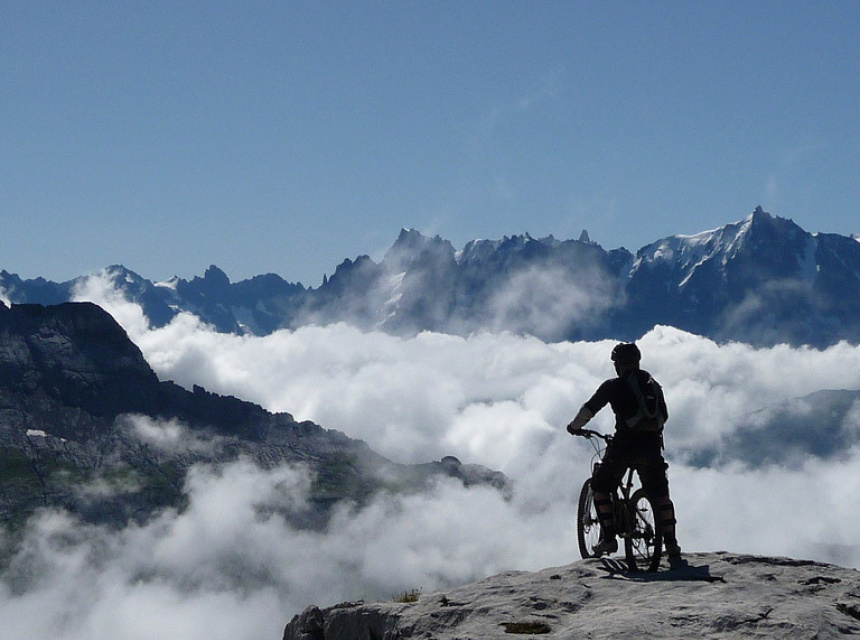
The Tour of Mont Blanc (TMB) is the circumnavigation of the Mont Blanc massif. It's an absolutely spectacular ride passing glaciers, crossing high mountain passes and traversing the frontiers of France, Switzerland and Italy.
Originally a walker's route, it is becoming a popular tour for mountain bikers. There are a lot of tracks in each valley and many variations possible; half on road - half on track - fully on road - fully on track. The classic Walker's route has a lot of unrideable parts and does involve a lot of carrying (especially the Col du Bonhomme and La Bovine sections).
Take care on some of the mountain tracks on steep slopes. A fall here may have serious consequences.
Accommodation : You can choose to stay in refuges, hotels or camp depending on which route you take.
Equipment : Maps (French IGN Top 25 3630OT & French IGN Top 25 3531ET), a bike repair kit and warm clothing. This is alpine riding and the weather can deteriorate very quickly.
An Itinerary Example: Starting from Chamonix
Variants of this classic tour have been developed which involve as little as 1 hour pushing in the 4 day trip. This route avoids as many of the unrideable parts as possible. It is still a very tough tour, and vehicle support is recommended. The total elevation gain is about 8000 metres including use of a cable car on the first day and a train on the last.
Day 1 : Take the Balcon Sud in the direction of Les Houches then cross town to the Bellevue lift station. Take the lift to the top and then come down the Col de Voza; from there descend into the Bionnassay valley and zig-zag the hairpins down into the Contamines valley. Once there, continue south towards the Col du Bonhomme.
This track is not rideable at the summit and the descent is highly technical; so take the walking path on the left hand side or go right down in to the valley until you get to the road that goes to the Rosental lake. At the Rosental lake go by road in the direction of Chapieux. This road will take you to a really steep pass (La Culaz) which, by this point at the end of the day, will take a fair effort. Spend the night in the Nova hut or camp out.
Day 2 : Set off again from the Nova hut heading east in the direction of the valley of the Col de la Seigne (2516m). This track is pretty harsh and ends up not cyclable for 200 or 300 metres from the summit of the pass. You'll get an extraordinary view from the top.
From the Col de la Seigne come down the footpath; it's difficult but do-able and finally ends up as a forest track that flanks the side of the Val Veni. You'll pass the huge Miage and Brenva glaciers. The track ends at Courmayeur. Take the road that goes up to Val Ferret. The road becomes a 4x4 track and snakes up to the Elena hut at 2062m.
Day 3 : Behind the Elena refuge there is a hiking trail that leads to the Grand Col Ferret ( 2537 m). This section is not bike-able. You must walk your bike about 90m. From the top of the pass, the trail heads down a very steep and challenging slope towards Switzerland.
This becomes a forested track near the village of Ferret. From there, take the route that leads to Martigny. About 30km downhill! Stop in the village of Champex.
Day 4 : From Champex continue on the Mont Blanc track towards the Col de la Forclaz. After the pass it's possible to get to "Les Jeurs" by road. For this itinerary, that leads to the border, take the only possible road on the left.
In "les Jeurs" the road becomes a 4x4 track that is easily rideable to the Col des Posettes - this marks your return to the Chamonix valley. From the top of the pass go down the forestry track to the village of Le Tour and return to Chamonix either by the Balcon Nord or by road.
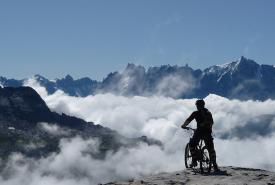
Social Networks

Latest News

Welcome to the Tour du Mont Blanc (TMB)
3 countries, one identity, 10,000 m in altitude and about 60 hours of walking, 170 km of discovery for a total of 10 days of satisfaction!
Online bookings of huts, rooms, hotels
Trails conditions
The Tour du Mont Blanc trail conditions
The itinerary of the TMB and trail stages
The hikers diary
The Tour du Mont-Blanc hikers diary
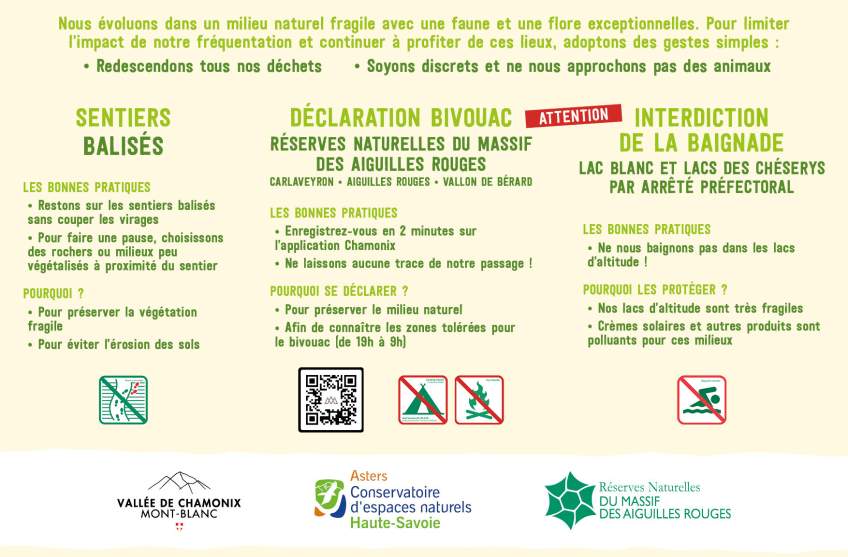
Focus Nature Reserves : good and banned practices summer 2023
Get ready to go.
The route, the safety, the conditions, the equipment: everything you need to know about the Tour du Mont-Blanc
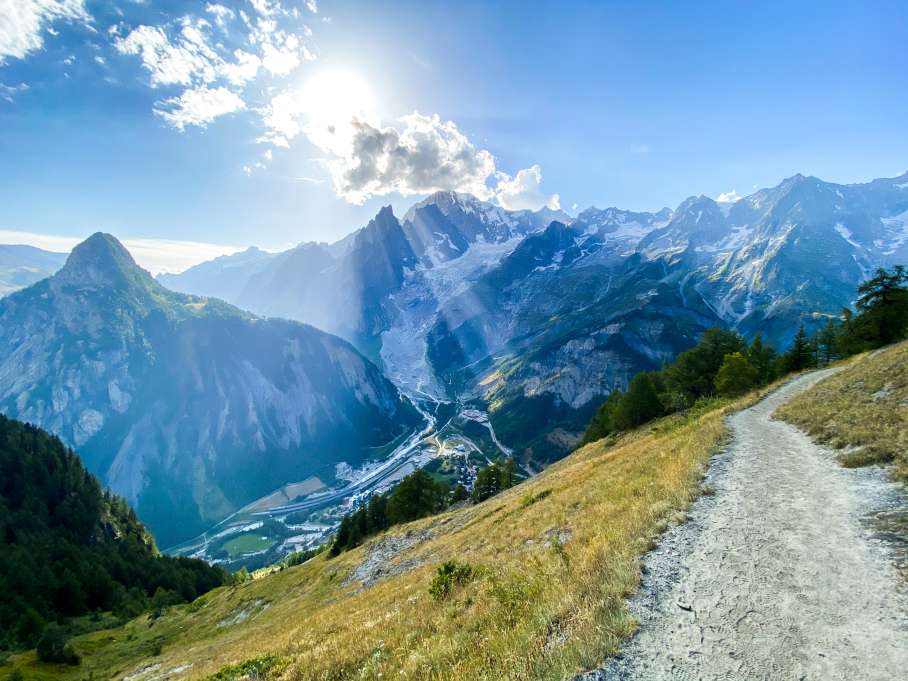
The TMB and the trails around Mont Blanc
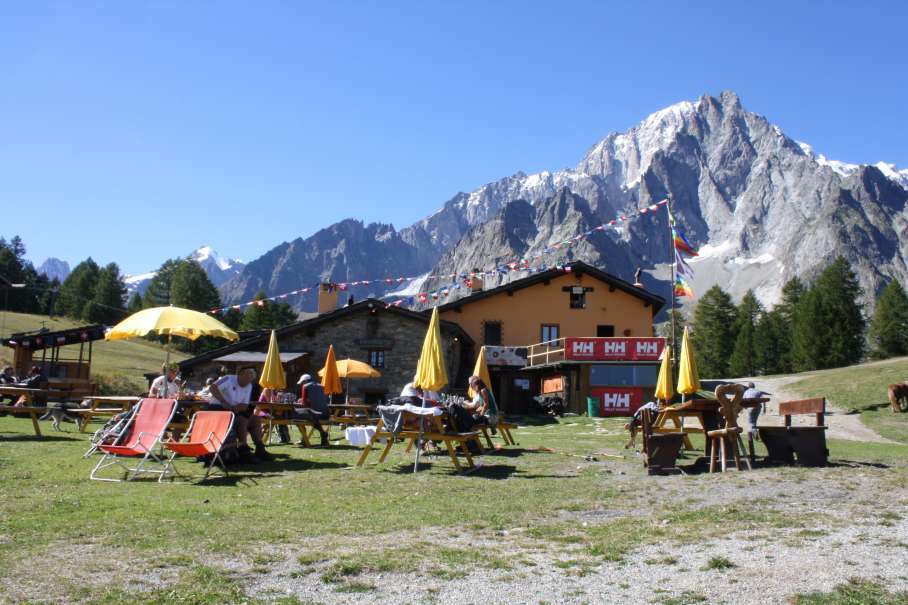
Accomodations
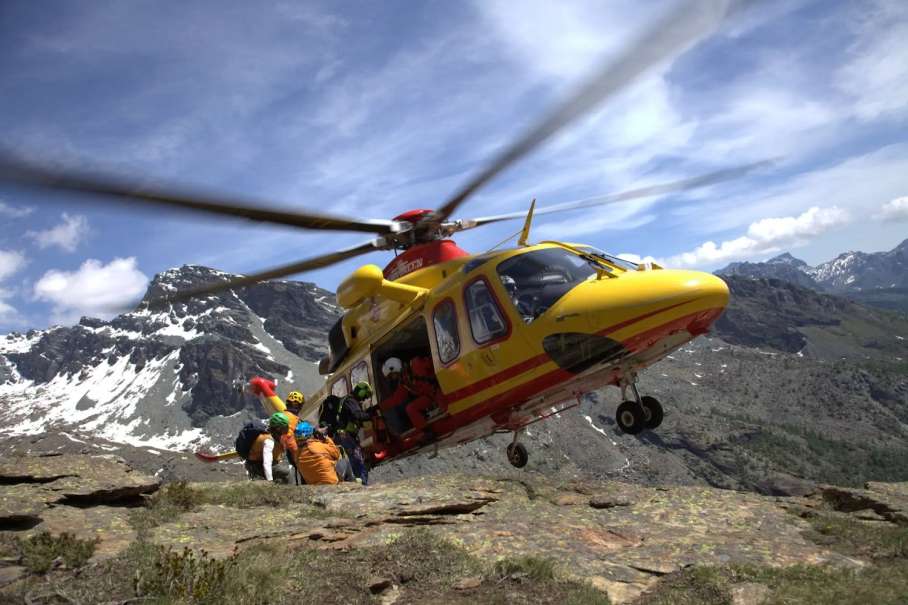
Cartography
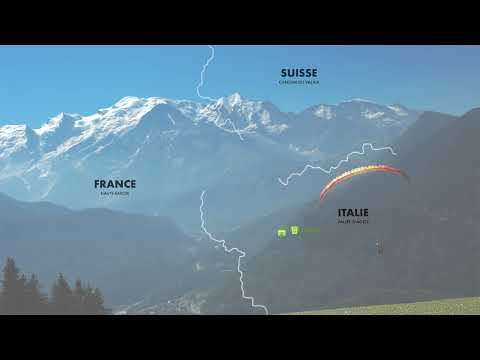
8 wonders around Mont Blanc
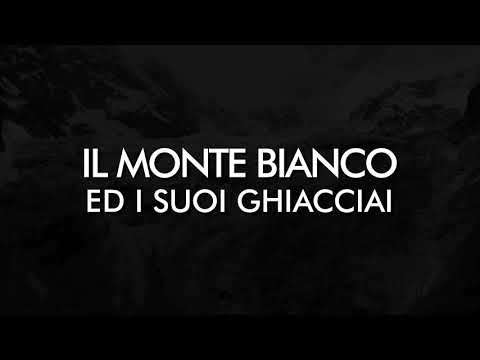
Il Monte Bianco ed i suoi Ghiacciai
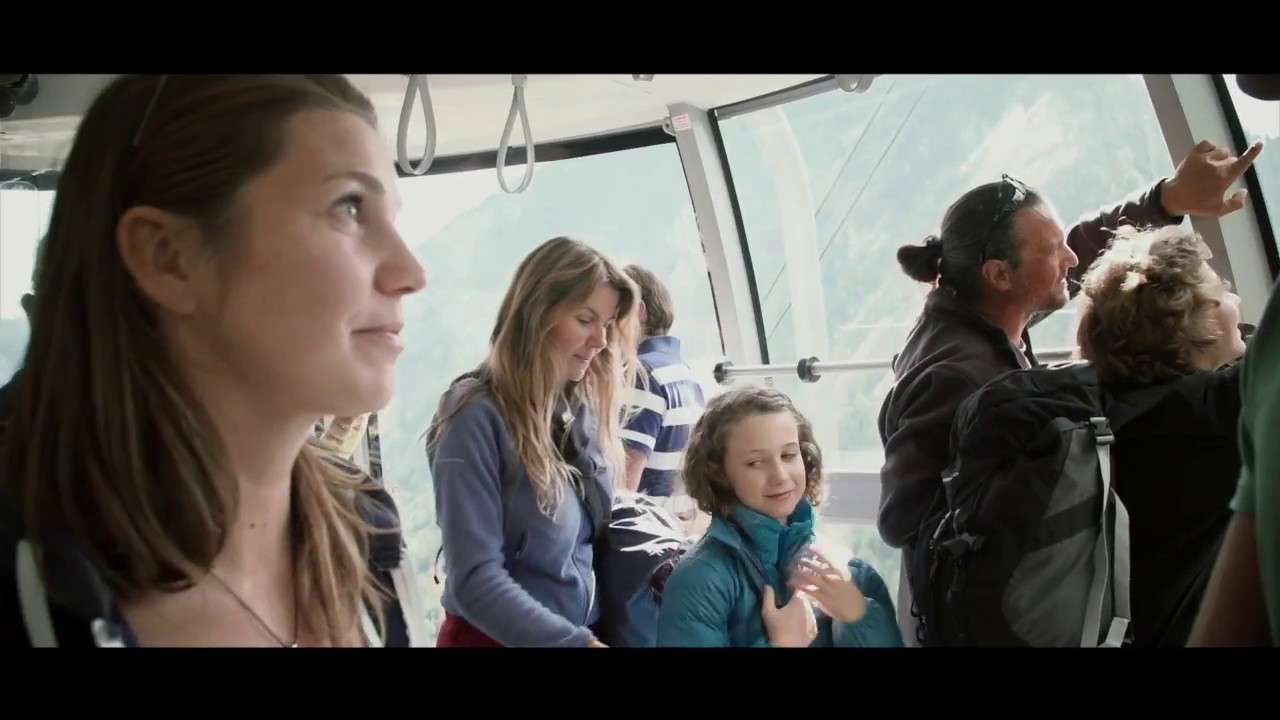
Video Tutorial Summer
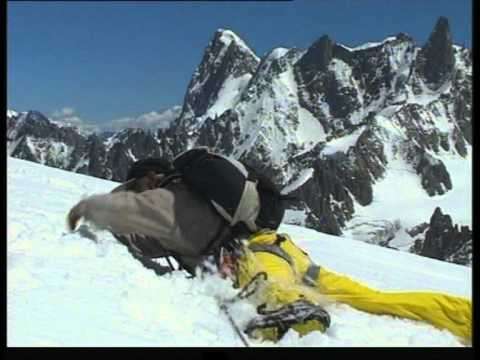
Prudence - Sécurité en montagne par la Chamoniarde
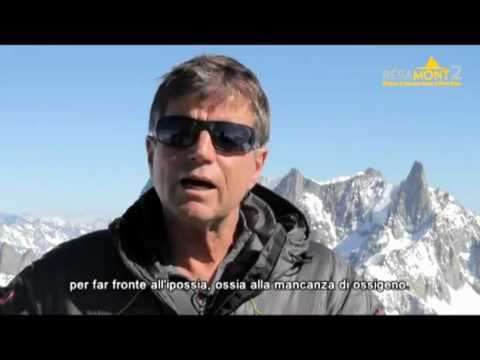
Age and altitude
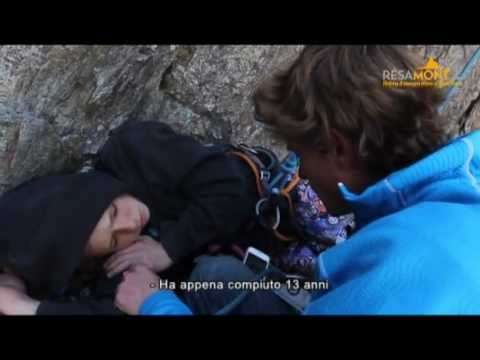
Telemedicine
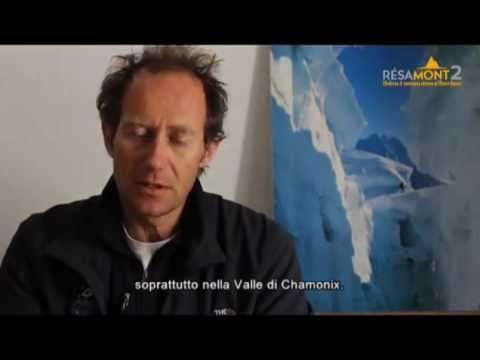
Séjours Transfrontaliers Espace Mont Blanc 2013
A collection of videos on the theme of the mountains
Come and discover the paths around Mont Blanc
Tour du Mont Blanc
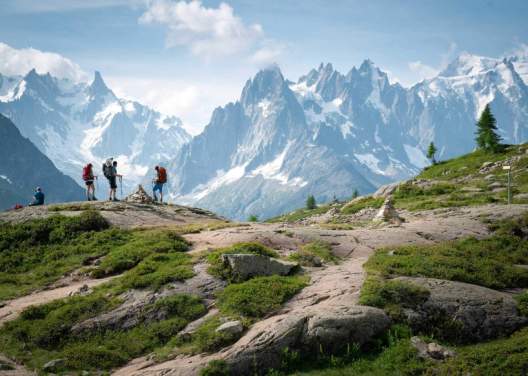
Alpage de Porcherey
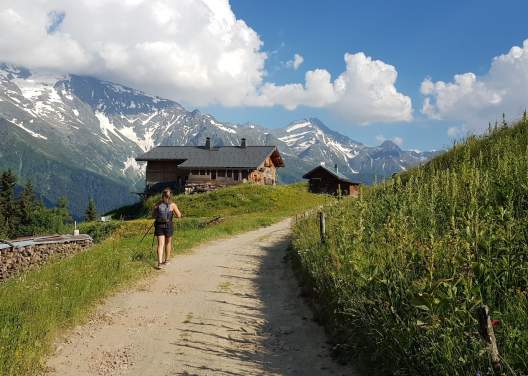
Alpage de la Peule
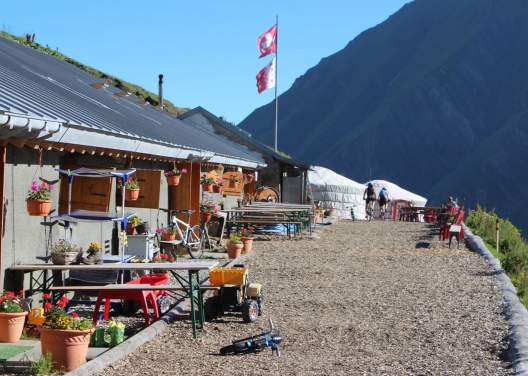
Rifugio Bertone
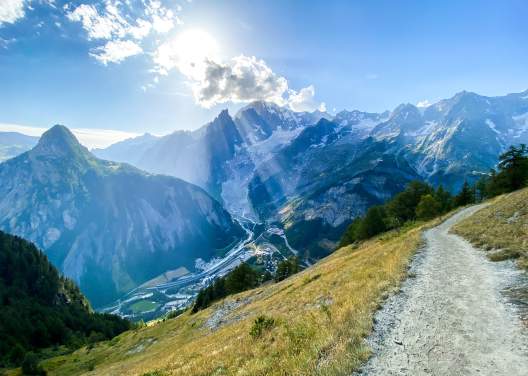
Update on the condition of the trails around Mont Blanc
Our mountains are a fragile environment with an exceptionnal fauna and flora.To limit our impact …
Mild weather and pleasant temperatures in this period of mid-june. the snowfields are rapidly …, starting from july 14th and until 30/10/21 it is forbidden to circulate by bicycle (including mtm ….
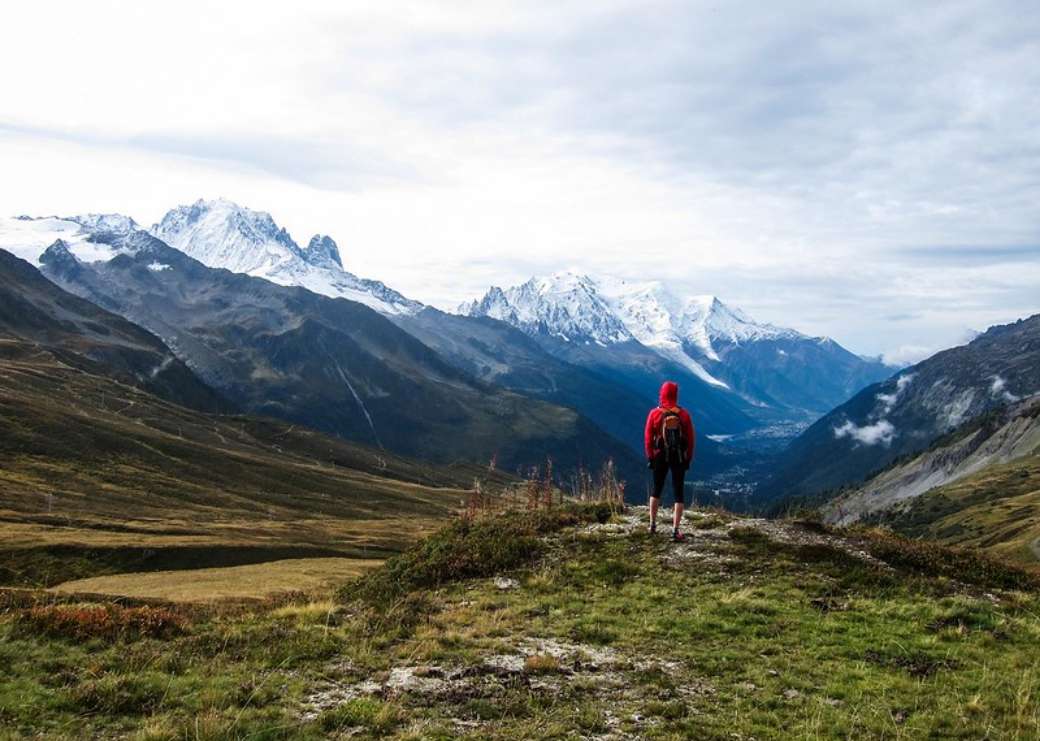
Una bella esperienza ad ovest
Gran bel trekking, non troppo impegnativo (dipende dai tempi e dal passo). Una bella occasione per godere di un panorama incredibile che ad ogni versante regala emozioni nuove. Noi l'abbiamo fatto tranquillamente in 8 giorni in …
Bonjour On vient de terminer le tour du mont blanc en famille avec 3 enfants de 10/11 et 13ans. Les conditions étaient excellentes. Juste un névé au Brevent où on a mis les crampons pour assurer la sécurité des enfants. …
Bonjour Je viens de terminer le TMB . Excellentes conditions météorologiques. 1 jour de pluie et col de balme brouillard et vent Des névés par endroits donc attention : col du bonhomme et brevent.et par ci par la Pour ma…
Sending email...
Email sent!
You are using an out of date browser and this website will not function properly.
Please upgrade to Edge or Chrome browsers.

+33 (0)781586903
montblanctreks
- Dates & Prices
Celebrate Earth Day this April. MBT will be donating a portion of each booking, to our conservation partner, EOCA. Book now for 2025!
The Tour du Mont Blanc
Trek overview.

History of the Tour du Mont Blanc
Since the 18th century, explorers, scientists and geologists have been drawn to this area of stunning beauty. The draw of Mont Blanc and all its neighbouring peaks, aiguilles, glaciers and valleys was too hard to resist. Many of the routes through the Alps and over the cols date back to the old trading routes of centuries past.
The first circumnavigation of the Mont Blanc range was back in 1767 by Horace Benedict de Saussure, who set out with a group of friends and porters from Chamonix, on a scientific Mont Blanc expedition to gain further knowledge of its geographical structure. During the Victorian age, the Tour du Mont Blanc became a must-do for the rich and famous, albeit on the back of a mule. Since then, trekking the Tour du Mont Blanc has become one of the most popular long-distance trails in the European Alps.
The Tour du Mont Blanc in Europe
The Tour du Mont Blanc is the most popular long-distance trek in Europe that covers a total distance of approximately 170km depending on which route is taken (some variants can be sorter or longer than the original section). The daily height gain on the Mont Blanc circuit is substantial, and overall the accumulation over the 10 days is in the region of 9,000m.
The Tour du Mont Blanc route takes you over 8 mountain cols and through 3 Alpine regions within France, Italy and Switzerland, circumnavigating the Mont Blanc. The scenery is second to none, from the broken rocky lunar landscape of the Aiguille Rouges to the pasturelands of the Contamines valley; every day has something different to offer, yet there is one common factor - the constant backdrop of the Mont Blanc range.
Villages and Hamlets on the Tour du Mont Blanc
Chamonix, france.
Steeped in history, Chamonix is the mountaineering and off-piste skiing capital of the world. It is truly a stunning place tucked in under Western Europe’s highest peak. For centuries explorers, scientists and mountaineers have travelled here to get up close to this impressive environment.

Les Houches, France
A much smaller and quieter village in the Chamonix Valley, and yet Les Houches shares the same stunning views of the Mont Blanc massif. It has good facilities, restaurants, bars, supermarkets and shops.
Les Contamines, France
Les Contamines is a charming little village on the westerly end of Mont Blanc. It has good facilities, restaurants, bars, supermarkets and shops, and offers great views of the Aiguille du Bionnassay and Domes du Miage.
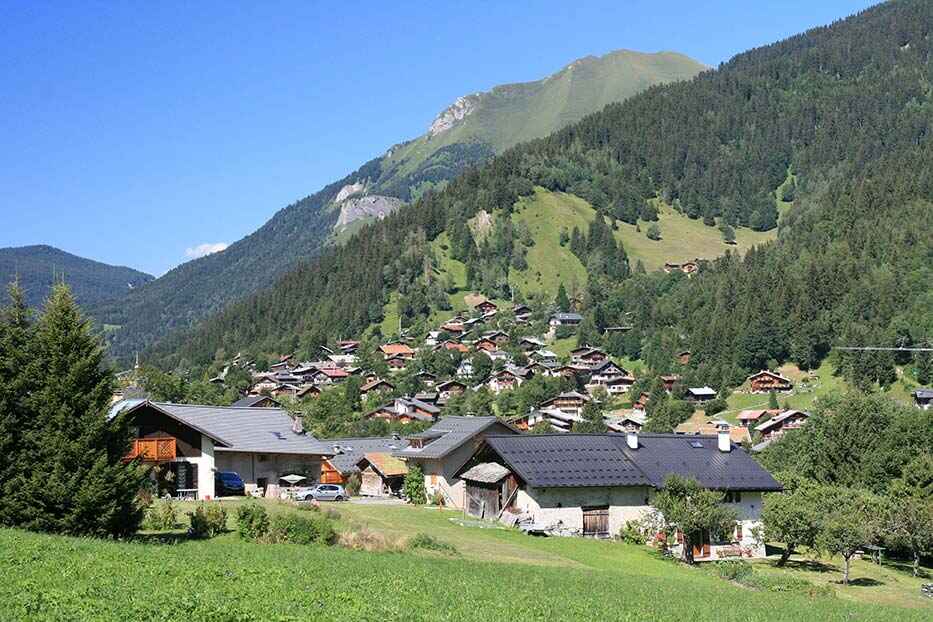
Chapieux & Ville des Glaciers, France
Chapieux & Ville des Glaciers are tiny hamlets on the southwesterly tip of the circuit and probably one of the most remote places on the tour. The valley and its hamlets are totally cut off in winter. Chapieux offers 1 auberge, 1 little shop and a campsite and Ville des Glaciers a refuge and cheese farm which sell fabulous Beaufort cheeses.
Courmayeur, Italy
Charming, Italian-style Alpine town, Courmayeur is definitely on a par with Chamonix with great food, wine and coffee. All facilities are available here.
La Fouly, Switzerland
Small village in the Swiss Val Ferret, La Fouly has great views of Tour Noir and Mont Dolent. The village offers basic facilities, a shop and a few hotels with bars.
Champex-Lac, Switzerland
Champex-Lac is situated at the easterly end of the TMB. This is a typical picture postcard Swiss village with a beautiful lake. A lovely, relaxing enclave with a range of bars, restaurants and shops.
Trient, Switzerland
Trient is a small Swiss village with limited facilities. The village enjoys fabulous views of the Trient Glacier.
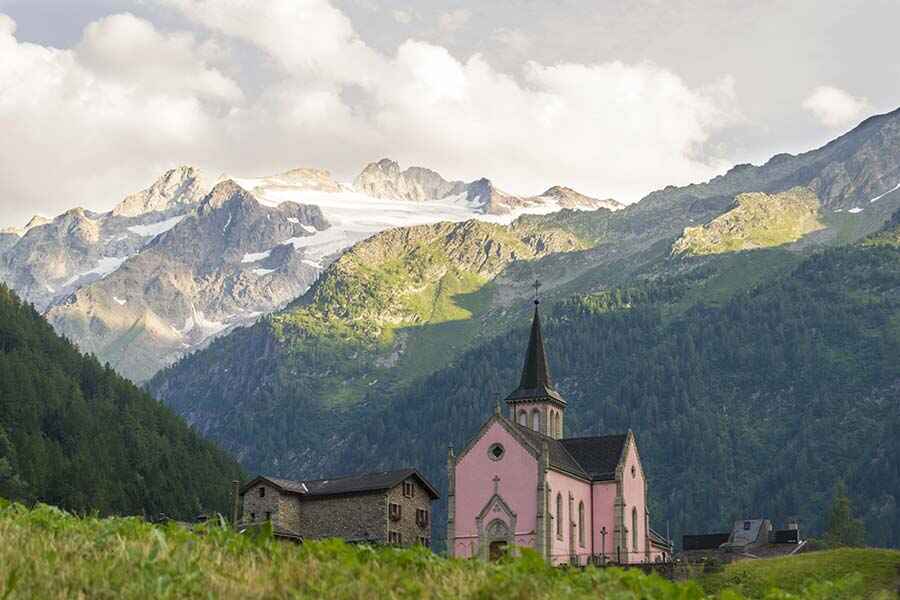
Argentiere, France
Situated at the easterly end of the Chamonix Valley, Argentiere is nested under the famous Grand Montets off-piste and extreme ski area. Argentiere shares the same history as the rest of the Chamonix Valley. It is a lively place in peak season and has a good range of restaurants, bars and shops.
Sign up to Our Newsletter
Marketing permissions.
Mont Blanc Treks will use the information you provide on this form to be in touch with you and to provide updates and marketing. Please let us know if you are happy to receive emails from us by checking the box below.
You can change your mind at any time by clicking the unsubscribe link in the footer of any email you receive from us, or by contacting us at [email protected]. We will treat your information with respect. For more information about our privacy practices please visit our website. By clicking below, you agree that we may process your information in accordance with these terms.
We use Mailchimp as our marketing platform. By clicking below to subscribe, you acknowledge that your information will be transferred to Mailchimp for processing. Learn more about Mailchimp's privacy practices here.
- Route planner
Hiking on the roof of Europe – Tour du Mont Blanc
The Tour du Mont Blanc (TMB), one of the most well-known GR footpaths in Europe, takes you 170 kilometres (105 mi) along magnificent trails between France, Italy and Switzerland. Three countries, seven days of walking, and a succession of breathtaking landscapes. The scenery changes frequently, allowing you to discover the Alp’s true variety. You plunge into the heart of glacial valleys, climb sumptuous passes, cross alpine pastures, forests and mountain villages, all while enjoying breathtaking views of Mont Blanc. This hike is impressive. In this Collection, I propose a seven-step itinerary which is quite challenging but also leaves plenty of time to enjoy all that the route has to offer. You can of course do the TMB at your own pace. There are many refuges and gîtes along the way, allowing you to tailor the hike to your needs. The TMB has few technical passages and is suitable for anyone who is in good shape. This itinerary follows the main route of the TMB in the classic direction of walking (counter-clockwise). Each stage of this hike ends at a refuge, which is part of what makes the TMB so special. You can enjoy delicious local food and products, but you’ll need to have a certain affinity to cheese to fully enjoy it. For those who prefer to pitch a tent, I suggest bivvy and camping options wherever possible. I did part of the TMB with a bivvy bag and would strongly recommend splitting the nights between camping and refuges. Bear in mind that bivvying is not permitted across the TBM. The rules concerning bivvying are as follows: - In France, bivvying is authorised in dedicated areas; - In Switzerland, it is forbidden to bivvy; - In Italy, bivvying is allowed above 2,500 metres (8,200 ft) of altitude. The route starts at the train station in Les Houches. You can get there by train or by bus. If you drive to Les Houches, you can park in the free parking dedicated to the TMB next to the Prarion gondola, and join the trail directly from there. If you arrive a day before you set off, you can easily find a place to stay in Les Houches either in a campsite or hotel. The trail also ends at a train station. In addition to the maps in this Collection, you regularly find road signs with the letters TMB along your hike, indicating that you are on the right track. I recommend doing the TMB between mid-June and mid-September when the mountain huts and gites are open. Book your nights in a refuge, especially if you plan to hike during the high season between 14th July and 15th August. From the end of June until the beginning of September, the TMB is calmer and the temperatures are milder. Avoid planning your hike during the last week of August when the series of races of the Ultra-Trail du Mont-Blanc (UTMB) take place. General information about the TMB (accommodation, map, reservations): autourdumontblanc.com Information about the bus lines to Les Houches: chamonix.montblancbus.com/fr/ligne-de-bus
Do it yourself
Ready to get going? Create and customize your own version of this adventure using the full Tour below as a template.
Le Tour du Mont Blanc
Last updated: April 18, 2024
Étape 1 : des Houches au Refuge de la Balme — Le Tour du Mont Blanc
This first day starts at Les Houches SNCF station, where you can arrive by bus or train. If you come by car to Les Houches, you can park in the parking lot dedicated to the TMB, next to the Prarion cable car, and join the path directly.
Étape 2 : du refuge de la Balme au rifugio Elisabetta Soldini Montanaro — Le Tour du Mont Blanc
A very nice stage that takes you to the top! From the Balme hut, you start by going up to the Col du Bonhomme, at 2,329 m altitude. A superb path then takes you to the Col de la Croix du Bonhomme and its refuge, at an altitude of just over 2,400 m. The panorama is splendid, you can see from the Haute … read more
by Chloé Perceval
Sign Up To Discover Places Like This
Get recommendations on the best single tracks, peaks, & plenty of other exciting outdoor places.
Étape 3 : du rifugio Elisabetta Soldini au rifugio Giorgio Bertone — Le Tour du Mont Blanc
A magnificent third stage, which I personally really loved. You start in the Italian Vény Valley, surrounded by glaciers, alpine lakes and towering peaks. A mountain path takes you to altitude. This is a passage that I personally found quite unreal. I had this great feeling of walking alongside the glaciers … read more
Étape 4 : du rifugio Giorgio Bertone au gîte alpage de la Peule — Le Tour du Mont Blanc
A superb stage through the Italian Val Ferret, which takes you to Switzerland.
Throughout this stage, you take superb mountain trails, surrounded by glaciers and peaks. The views never cease to be breathtaking. It is not uncommon for you to come across a few herds of cows as well.
The challenge of the … read more
Étape 5 : du gîte alpage de la Peule à Champex-Lac — Le Tour du Mont Blanc
On this fifth day, a little less elevation gain on the program. From the Peule alpine gîte, you descend into the Swiss Val Ferret.
Total change of scenery as soon as you arrive at La Fouly. You then cross a series of very typical small villages and hamlets. Traditional wooden chalets, flowered windows … read more

Étape 6 : de Champex-Lac à Tré-le-Champ — Le Tour du Mont Blanc
A very beautiful stage, between passes and villages, which will bring you back to the Chamonix Valley. There are many water points on this section.
From Champex-Lac, you start by going up to Col de la Forclaz via a pretty mountain path. From there, you begin your descent to Trient, a pretty little very … read more
Étape 7 : de Tré-le-Champ aux Houches — Le Tour du Mont Blanc
This is your last stop on the TMB. Today, you will rally Tré-le-Champ to Les Houches in an incredible setting.
You start your day by going up to the Aiguillette d'Argentière. You are then in the Aiguilles Rouges national nature reserve. With a little luck, you may come across ibex on this section. After … read more
Like this Collection?
Questions and comments, collection stats.
- Distance 105 mi
- Duration 68:57 h
- Elevation 31,125 ft
You Might Also Like
Classic Tour du Mont Blanc Trek
June through September
Geneva. Switzerland is 1.5 hours from Chamonix, France—your starting point
Intermediate
Things to know
Nothing beats the world-famous Tour du Mont Blanc trek! In just 12 days we’ll get to do it all: enjoy views of impressive glaciers, reach some +8,200ft mountain passes, and hike through some screensaver-worthy Alpine meadows, all around the highest peak of Western Europe. Between that morning espresso shot and the evening glass of French wine, we’ll give our feet plenty of work, roaming some legendary 2000-year-old Roman roads. Not to mention the suspension bridges above wild glacial streams, or the cable car rides over crystal-clear lakes and the greenest pine forests! Tour du Mont Blanc has many routes, but our guides will make sure we take the best & crowd-free ones. Find out more about hiking the iconic Tour du Mont Blanc from Natalie Mirzoeff, a former round-the-world hiking guide.
Plus 5 major mountain passes, 7 valleys, and 105 miles
Avoid the popular routes and take the road less traveled
Hike and enjoy local gastronomical and cultural delights


Get to know the heart of the Alps and hit the high-altitude hiking trails around Mont Blanc. Starting and ending in Chamonix, you will learn why finishing the iconic Tour du Mont Blanc is more than 10 days of top-notch hiking with a backdrop of magnificent Alpine scenery. Enjoy the cultural, historical, and gastronomical aspects of the area located at the juncture of 3 countries and avoid the crowds (your guide knows the paths walked by few). Find out for yourself what makes this one of the world’s best treks!
Your trip begins in the mountain town of Chamonix, famous for being the adventure capital of the Alps. Located at the foot of Mont Blanc, its cobblestone streets breathe adventure while also exhibiting Alpine small-town charm combined with French sophistication. You will meet the rest of the group at 6pm at your hotel for a short trip briefing and gear check, followed by dinner.
Meals : Dinner Accommodation : Hotel in Chamonix

After a hearty breakfast you will take a cable car connecting Les Houches with the Bellevue Plateau, during which you get to enjoy the panoramic views of the Mont Blanc Massif. After crossing the suspension bridge at the foot of the Bionnassay glacier, your guide will choose the best route taking your group to Les Contamines. This usually includes passing the Col de Tricot (6,955 ft / 2,120m), with a coffee stop at the Chalet de Miages at the foot of the mighty peak Dome de Miages (3,675m / 12,055 ft), but a lower level route may be utilized. Spend the night in a charming local 3* hotel in the French village of Les Contamines.
Distance : 15km / 9.3 miles Ascent : 837m / 2,746 ft Descent : 1,520m / 4,985 ft Walking time : 6-7 hours Meals : Breakfast and dinner Accommodation : 3* hotel in Les Contamines
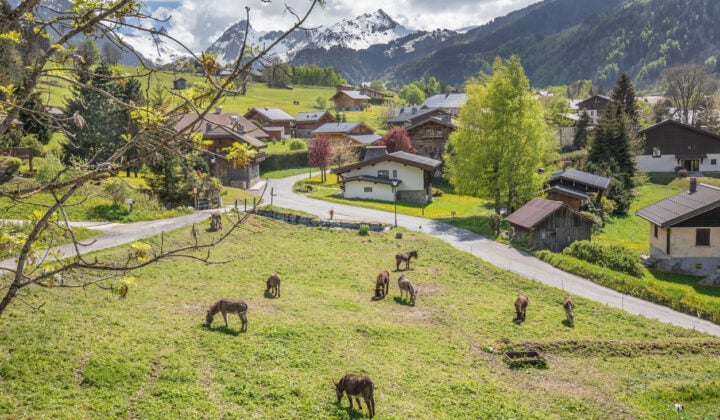
Day 3 begins with trekking up the old Roman road to the picture-perfect 17th-century church of Notre Dame de la Gorge. From here your path goes uphill, past the Chalet de Barme (a perfect coffee stop!) and all the way to the Col de Bonhomme (2328m / 7,635 ft), where you will take a lunch break. Another climb—this time gentler—will take you to Col de la Croix de Bonhomme (2478m / 8,130ft), offering a great view towards the Vanoise National Park. After an additional 2 hours, you will have reached Les Chapieux, the location of your lovely chambre d’hôte (bed and breakfast).
Distance: 19km / 11.9 miles Ascent: 1,348m / 4,450 ft Descent: 960m / 3,150 ft Walking time: 8 hours Meals: Breakfast and dinner Accommodation: Bed and breakfast in Les Chapieux

A minibus ride will take you to the Ville des Glaciers. After crossing a river, head to the Refuge des Mottets, followed by a climb to the Col de la Seigne (2516m / 8,255ft). You are now stepping into Italy! Relish in the great views of Val Veny and Val Ferret, and see the Italian side of Mont Blanc and the other Chamonix giants. A descent past the Elisabetta hut takes you to La Visaille, where your group will take a transfer down to the traditional Italian town of Courmayeur, where you will stay in a family-run hotel.
Distance: 21km / 13 miles Ascent: 1,004m / 3,300 ft Descent: 850m / 2,800 ft Walking time: 6 hours Meals: Breakfast and dinner Accommodation: Hotel in Courmayeur
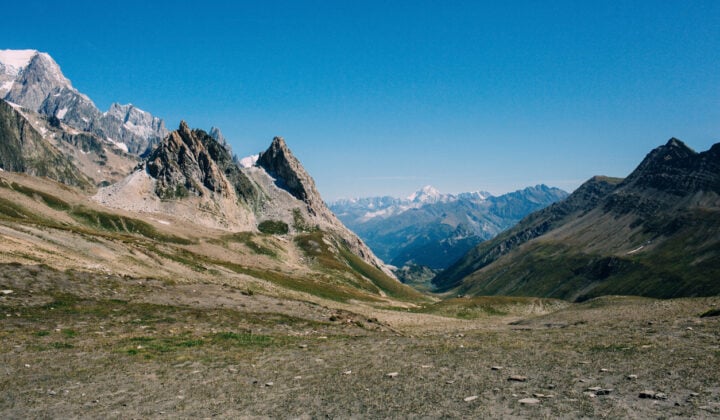
Start the day of hiking with a steep walk up to the Bertone hut and the Mont de la Saxe ridge. If weather permits, your guide can opt for the lesser-traveled variant to the Mont de la Saxe ridge (2,555m / 8,380 ft), up the Tête de la Tronche (2,584m / 8,475 ft), followed by a steep descent to the Col Sapin (2,435m / 8,000 ft). After another descent, you will also climb to the Col Entre Deux Sauts (2,055m / 6,740 ft). It’s a long day of hiking, but you will be rewarded with stunning scenery, crowdless hiking paths, and great Italian-style dinner at the Rifugio Bonatti. You can also watch the sunset behind Mont Blanc before a good night’s sleep.
Distance : 10km / 6.5 miles Ascent : 1,584m / 5,200 ft + 860m / 2,820 ft Descent : 940m / 3,08 0ft + 700m / 2,296 ft Walking time : 10-12 hours Meals: Breakfast and dinner Accommodation : Rifugio Bonatti*
*There is a chance that you will not be staying at Rifugio Bonatti and in this case, you will have an extra night at a 4* hotel in Courmayeur. Shuttles back and forth will be provided and no hiking will be missed. Starting from 2025, overnights in the Refugio Bonatti will no longer be possible during this adventure.

Trekking over the Grand Col Ferret (2537m / 8,320 ft), you will be rewarded with breathtaking views of the Grandes Jorasses, the Grand Combin and Mont Dolent (the summit which stands at the juncture of France, Switzerland, and Italy). At the top of the col, your group will enter Switzerland. After a coffee stop at La Peule (time permitting) you will head to La Fouly, an Alpine village distinguished by traditional Swiss “chocolate box” chalets where you will stay overnight in a simple hotel.
Distance 20km / 12.5 miles Ascent: 1,128m / 3,700ft Descent: 1,580m / 5,180 ft Walking time: 6-7 hours Meals: Breakfast and dinner Accommodation: Simple hotel or bed and breakfast in La Fouly

A shorter day of hiking awaits. Winding through picturesque Swiss Alpine meadows and tiny villages, you will finally reach the resort of Champex, nestled alongside the eponymous glacial lake. Lodging in a traditional hotel offering great local delicacies.
Distance: 16 km / 10 miles Ascent: 711m / 2,330 ft Descent: 855m / 2,805 ft Walking time: 5 hours Meals: Breakfast and dinner Accommodation: 3* hotel in Champex
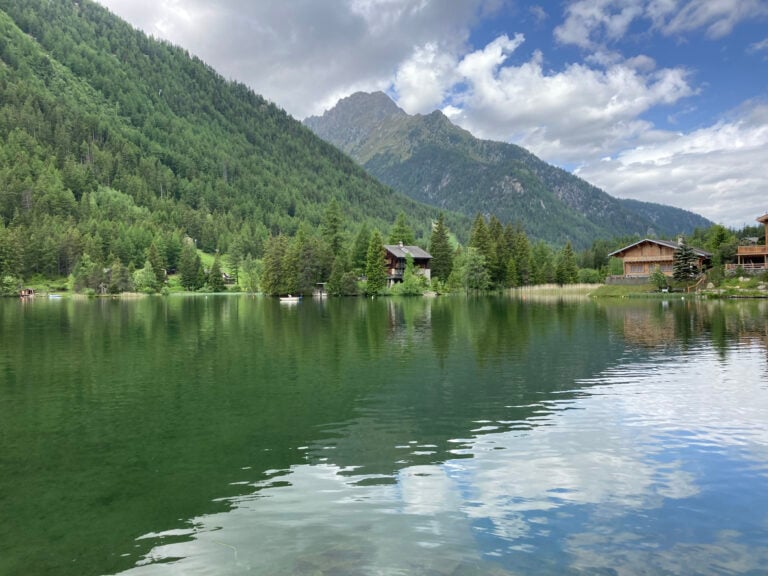
If the group feels fit on Day 8, the path will take you to Fenêtre d’Arpette, the highest col on the Tour du Mont Blanc standing at 2665m (8,710 ft)—a fantastic route famous for stunning views of the Trient glacier. Alternatively, your guide will decide to take you along the more laidback route via Bovine to the Col de la Forclaz (1,527m / 5,010 ft)—depending on the weather conditions and fitness of the group. You will stay overnight either at Col de la Forclaz or at Trient, depending on availability.
Distance: 15 km / 9.3 miles Ascent: 1,480m / 4,790 ft (or 570m / 1,870 ft via Bovine) Descent: 1,760m / 5,775 ft (or 600m / 1,980 ft via Bovine) Walking time: 8 hours (or 6 hours via Bovine) Meals: Breakfast and dinner Accommodation: Simple hotel, usually with shared bathrooms

Today’s plan is to take another lesser-traveled variant which diverges from the official Tour du Mont Blanc—either via Les Grands or Les Tseppes, depending on where you stayed the night before. The alternative routes are worth the extra time and effort not only because few other hikers take them but also because of the truly spectacular views of the surrounding landscapes. Either route takes your group to the Col de Balme (2,195m / 7,200 ft) at the head of the Chamonix valley (welcome back to France!). Going either via the Aiguillette de Posettes down to Tré-le-Champ, or straight down to Le Tour, followed by the Petit Balcon Nord, you will have reached Argentière—the location of your accommodation—in the afternoon.
Distance: 18km / 11 miles Ascent: 1200m / 3940 ft Descent: 1450m / 4760 ft Walking time: 7-8 hours Meals: Breakfast and dinner Accommodation: 3* hotel in Argentière
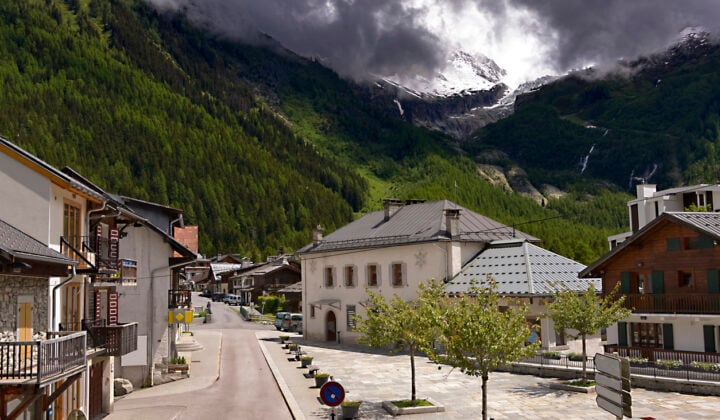
Taking a short stroll back to Tré-le-Champ, you will hike up to the Lac Blanc passing the beautiful Lacs des Chéserys (2,130m / 6,990 ft), providing the best views of Mont Blanc found anywhere. While enjoying one of the best walks in the Chamonix valley, you will make use of a series of ladders and chains to skirt the cliffs—this is nothing to worry about and is not difficult at all! From the Lac Blanc, you will take the Flégère cable car down to Les Praz, followed by a walk along the river or a train ride to Chamonix.
Distance: 9km / 5.6 miles Ascent: 1,000m / 3,280 ft Descent: 550m / 1,800 ft Walking time: 6 hours Meals: Breakfast and dinner Accommodation: Hotel in Chamonix
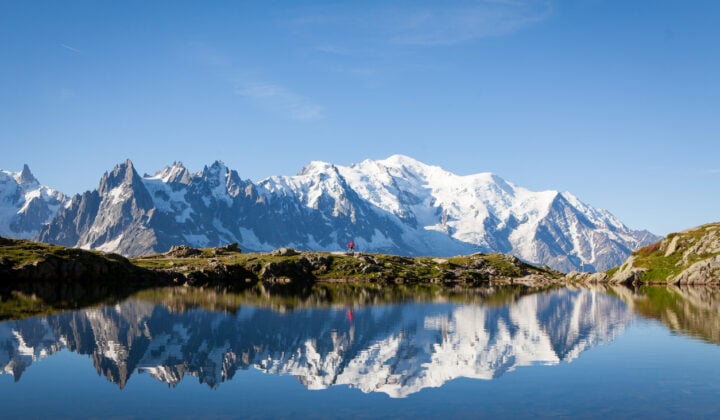
Taking the cable car back to the Flégère, your hiking resumes at the same point your group finished at the day before. Start the famous Grand Balcon Sud linking the Flégère with Planpraz. From here, you will climb up to the Col du Brévent and then up to the Brévent summit (2,525m/ 8,285 ft), where you get to enjoy excellent views of Mont Blanc one more time. To complete the Tour du Mont Blanc, descend via Bel Lachat and Merlet in ogre to reach Les Houches, followed by a transfer back to your hotel in Chamonix. After 10 days of hiking, you can finally call yourself a TMB hiker! You can celebrate your great achievements with your guide and the rest of the group over dinner or by going for drinks somewhere in town.
Distance: 17km / 10.5 miles Ascent: 772m / 2,530 ft Descent: 1,546m / 5,070 ft Walking time: 8 hours Meals: Breakfast and dinner Accommodation: Hotel in Chamonix
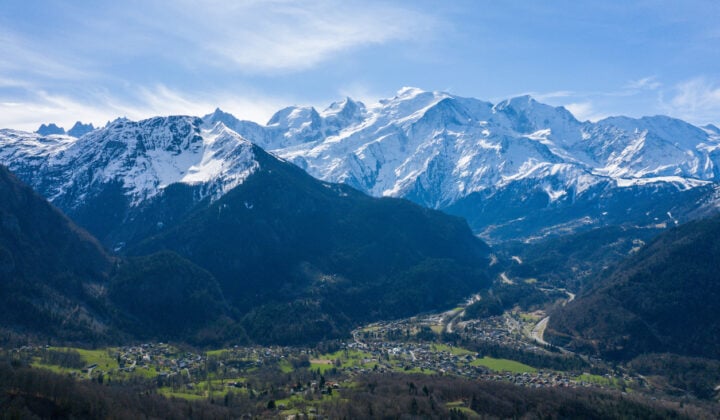
Your alpine adventure finishes after breakfast. Take a last chance to say goodbye to your guide and fellow trekkers. Leave Chamonix or continue touring on your own.
Meals: Breakfast
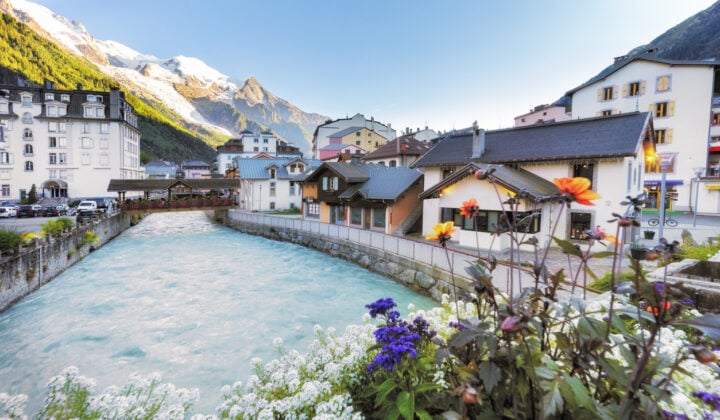
Meet your guides

Watch our webinar

We just finished a 12 day Mont Blanc tour and with the help of Cloud 9 it was an incredible experience. Our original trip was booked in 2019 and postponed due to Covid. Cloud 9 offered a full refund or the opportunity to continue with no additional cost both years we postponed. Once we finally hit the trail, the accommodations, trip notes and attention to the smallest of details made the tour an outstanding experience for us. I will certainly consider using Cloud 9 again and highly recommend it to anyone wishing to tour Mont Blanc.
If your dream it to experience the beauty and magnificence of the Tour de Mont Blanc, contacting Emma Jack would be in our opinion be essential. With her extensive knowledge of the mountains and surrounding regions, you will be assured an amazing time. As a family with two children 15 and 8 we were keen for our kids to have a positive experience. Emma’s guidance with regards to day length and distance, flora, fauna, geology and accommodation, transport links and most crucially health and safety advice made our dream better than we could have hoped for. Her sensitivity to our particular needs was greatly appreciated. We were able to relax into the moment with the knowledge she had covered all bases. Go on, do it, you won’t regret it.
What you get on this adventure:
- An experienced, local hiking guide with extensive knowledge of the area (International Mountain Leader)
- 12-day TMB Classic Trek (10 days of hiking)
- Accommodation as indicated in the itinerary
- All breakfasts and all evening meals (detailed in the itinerary)
- Cable cars and transport as indicated in the itinerary
- Daily luggage delivery (apart from any hut nights where vehicle access is not possible)
What’s not included:
- Transportation to and from Chamonix
- Airport transfers — we recommend Mountain Drop-Offs
- Personal drinks and snacks
- Packed lunches
- Any transport or accommodation due to a participant being unable to complete the itinerary
- Mountain rescue / travel insurance
- Guide gratuities — optional
Even though Tour du Mont Blanc is not technically difficult, it is generally recommended for those with at least an extensive experience of longer day hikes on mountain trails and great fitness . You can expect up to 3,000ft of daily ascent and descent and hiking 10 miles on average for 10 consecutive days. Keep in mind that hiking can be made difficult because of changing weather. However, you will be able to take many breaks and your guide will adjust the route if it gets too strenuous for your group. Due to some more exposed sections, the tour is not recommended for those with severe fear of heights.
If you think you may not be ready for this trek at the moment, we suggest you adopt a training regiment in the weeks leading up to the trip, with long daily hikes in hilly terrain, as well as activities like jogging, swimming, playing squash, or circuit training. By adequately preparing both physically and mentally for this adventure, the vast majority of the hikers can fully enjoy the challenges and rewards that this remarkable trek has to offer.
If you’re looking for guided TMB adventures suitable for advanced hikers, check out this high-level Tour du Mont Blanc adventure and this more rugged version of the Tour du Mont Blanc .
Here’s a list of the equipment and clothes you need to bring:
- Good, comfortable, waterproofed mountain hiking shoes with good tread
- Comfortable rucksack (30 to 40L)
- Kit bag or suitcase (for your main luggage)
- Hiking poles
- Waterproof jacket and waterproof hiking pants
- Moisture-wicking T-shirts
- Warm sweater or a fleece
- Lightweight warm jacket and hat (in case of unexpected weather conditions)
- 2 Pairs of lightweight hiking pants and shorts
- Swimwear (some hotels feature pools)
- Cap and a sunhat
- 2-3 Pairs of gloves (liner gloves, waterproof gloves, and warm gloves)
- Hiking socks and underwear
- Pair of outdoor shoes
- Sheet or a sleeping bag liner
- 2L water bottle
- Swiss knife, compass, whistle, head torch
- Plastic bags / dry sacks to keep essentials dry
- Good sunglasses, sunscreen, and lip protection
- Your toiletry bag and a mini first-aid kit
- Other clothes and personal change
- Small towel (for the mountain hut)
- Travel bag or a small suitcase for the luggage transport
- Camera — optional (but recommended)
Typically, the weather along the route is warm and fairly stable, requiring minimal extra gear. However, it’s crucial to bring all the items from the list due to unseasonal conditions that can occasionally occur. At least once every summer hikers witness unseasonal snow and heavy rainfall, with temperatures plummeting from mid-30s°C (86°F) to below zero (0°C/32°F). For rain, waterproof jackets and trousers are essential, along with multiple pairs of gloves. In the event of snow, quality hiking boots, walking poles, warm clothing, and gloves are necessary. Sometimes hikers experience heatwaves, meaning that they need to be equipped with rehydration salts, 3-4L of water, and a sun hat.
Don’t underestimate the importance of proper gear; be well-prepared for any situation . You’ll be able to discuss your packing list with your guide prior to your trip.
During your guided Tour du Mont Blanc Highlights hiking tour, all breakfasts and evening meals are included . Most nights, you’ll dine in the accommodation you’ll be staying at, enjoying a fixed 3-course menu that showcases excellent local food from France, Italy, and Switzerland. Hotel breakfasts are continental-style, featuring tea, coffee, hot chocolate, juice, croissants, bread, jams, cereals, yogurts, and often eggs, cheese, and local meats. Breakfasts in mountain huts and simpler auberges are more basic, typically offering tea, coffee, bread, jam, and cereal.
Vegetarians are accommodated with an improving range of options, although some places may offer simpler choices like omelets or pasta. Vegans can also be catered for, but occasional breakfasts may consist mainly of fruit, so having a few snacks on hand is advisable. Your guides are vigilant and work to improve options for vegan diets with local hoteliers. Special diets due to allergies or intolerances, such as gluten-free, nut-free, or lactose-free, are accommodated to the best extent possible. However, given the set meal service in many accommodations, a wide range of options might not be available. We appreciate sticking to the specified diet, as last-minute changes are often challenging for hoteliers serving large groups.
Lunches are not included to provide flexibility. Your guide will advise on ordering lunch via the hotel, stopping at a shop or bakery for snacks, or enjoying a sit-down lunch in the refuges. While drinks are not included, you can order beer, wine, and soft drinks at all hotels, including mountain refuges. Tap water is drinkable throughout the trip.
During your guided Tour du Mont Blanc Highlights hiking trip, you can expect a range of accommodations. In larger towns like Chamonix, Les Contamines, Courmayeur, Champex, and Argentière, minimum 3* hotels are chosen, providing twin-share rooms with en-suite facilities. In smaller hamlets like Les Chapieux, La Fouly, and Trient/Forclaz, where simpler accommodations prevail, the best available lodging options—mostly auberges —will be selected, although en-suite facilities may be limited.
We have one night in a mountain hut *: the Rifugio Bonatti, one of our favorite huts in the Alps. We try to book small private rooms of two, three, or four people here rather than dorms, but they are always fully booked. Dorm-style rooms are mixed-gender and can have between 10 and 20 people. There are no en-suite facilities at the hut, but you can expect hot showers, which are limited to a few minutes.
If you opt for a single supplement , please note that this excludes Les Chapieux and Bonatti, where there are no single rooms. Single rooms may also not be available in Trient/Forclaz — it depends at which point you booked.
* There is a chance that you will not be staying at Rifugio Bonatti and in this case, you will have an extra night at a 4* hotel in Courmayeur. Shuttles back and forth will be provided and no hiking will be missed .
Group sizes and prices:
- For this group adventure, the maximum client-to-guide ratio is around 10:1.
- It takes a minimum of 4 people for this tour to operate.
- The cost is per person and does not decrease as the group grows.
Hiking the Tour du Mont Blanc can be arranged for larger and for private groups. Contact us to make arrangements.
Min. age requirements:
- If you are older than 18, you’re good to go.
- Minors younger than 18 may be permitted to join the hike on a case-by-case basis, but must be in the presence of a parent or legal guardian.
If your group has hikers under the age of 18, contact us prior to booking to make arrangements.
To get to the Chamonix, France—your starting point—most people fly into Geneva Airport in Switzerland 1.5 hours away. Once you arrive, there are several ways to reach your destination, including public transport. Looking to make the airport transfers hassle-free? Check out Mountain Drop Offs —they provide door-to-door service in their comfy and spacious shuttles. Use the code 57HCHX to get a 5% discount!
Once you and your guide agree on the details of your itinerary, your guide will suggest the best place to meet, usually at your hotel in Chamonix at 6 p.m. The guide will choose the appropriate terrain dependent on conditions and the ability of the group to start off the tour the following morning.
It is obligatory for this adventure that you cover all your bases with both emergency medical and travel insurance. With medical insurance, if you have an accident or medical emergency on or off the mountain, you’ll avoid paying out of pocket for costly expenses. This covers everything from hospital treatments to emergency air transportation and more.
Travel insurance covers canceled flights, natural disasters and other scenarios that may interrupt your travel plans.
We also expect you to respect local regulations and take measures to protect yourselves, your guides, and the communities you’re traveling to. For more information on travel recommendations and restrictions in France, Switzerland, and Italy please refer to the U.S. Bureau of Consular Affair travel information on France , Switzerland , and Italy .
If you need assistance selecting the right insurance for your group, let us know and we will be happy to help!
Secure your spot for 2024 with a 30% deposit due upon booking. The remaining amount is paid 10 weeks (70 days) prior to departure.
Secure your spot for 2025 with a 10% deposit! This tour gets sold out very quickly, but with early-bird booking, you can rest assured you’ve booked your dream adventure in time.
- Only 10% of the total amount should be paid as a deposit upon booking. This deposit is non-refundable, but can be transferred to another 57hours adventure anytime in case the dates don’t suit you. This can be done by the end of the year.
- Another 20% needs to be paid by the end of this year.
- The remaining balance is due 10 weeks (70 days) prior to departure.
Upon checkout, you can choose one of our 57hours flexibility options :
Basic : Fully refundable in the first 48 hours after the booking has been made. Deposit non-refundable afterwards. If Client cancels the Booking anytime prior to ninety (90) calendar days in advance of the trip contemplated by the booking, Client is entitled to a second payment refund. After that deadline, Client is not entitled to any refund. Date change is available 3 months (or earlier) before the trip for additional 10% fee.
Flexible : If Client cancels the Booking anytime prior to sixty (60) calendar days in advance of the trip contemplated by the booking, Client is entitled to a full refund. For cancellations thirty (30) to fifty nine (59) calendar days in advance, Client is entitled to a refund in the amount of fifty percent (50%) of the total amount paid when Booking. For cancellations one (0) to twenty nine (29) days in advance, the Client is not entitled to any refund.
Super Flexible : If Client cancels the Booking anytime prior to fourteen (14) calendar days in advance of the trip contemplated by the booking, Client is entitled to a full refund. For cancellations one to thirteen (13) calendar days in advance, Client is entitled to a refund in the amount of fifty percent (50%) of the total amount paid when Booking.
All cancellations must be made by e-mail. You can read more about our Terms of service here .
Other things to do in Mont Blanc

Women’s Hiking Tour of Chamonix & Mont Blanc

Hidden Gems of the Tour du Mont Blanc Trek

All-Women Snowshoeing at the Foot of Mont Blanc

Self-Guided Week-Long Tour du Mont Blanc

Self-Guided Tour du Mont Blanc

Haute Route Tour du Mont Blanc Trek

Classic Hiking or Fastpacking of Tour du Mont Blanc

Tour du Mont Blanc Highlights Trek

Hidden Mont Blanc: The 5-Star Hiking Tour

Luxury Self-Guided Tour du Mont Blanc
View all (37) adventures in France
Choose a currency
- USD - $ US Dollar
- EUR - € Euro
- AUD - AU$ Australian Dollar
- CAD - CA$ Canadian Dollar
- GBP - £ British Pound Sterling
- CHF - CHF Swiss Franc
- JPY - ¥ Japanese Yen
- SGD - S$ Singapore Dollar
- HKD - HK$ Hong Kong Dollar
- DKK - Dkr Danish Krone
- NOK - Nkr Norwegian Krone
- SEK - Skr Swedish Krona

Well and Good Travel

The Foolproof Tour du Mont Blanc Itinerary: 10-Days
10 days of hiking in the Alps – the ULTIMATE wellness trip if you ask me. This Tour du Mont Blanc self-guided itinerary follows the traditional TMB route, includes tips, daily trail specs, and accommodation suggestions, and addresses some of the most common questions you might be asking yourself as you begin planning your tour.
The Tour du Mont Blanc, or the TMB, is a 105-mile (170 km) trail that circumnavigates Mont Blanc, the highest peak in Europe. The TMB is often considered one of the most beautiful through-hikes in the world, introducing hikers from around the globe to the exquisite and dramatic scenery of the Alps.
👉 Don’t forget travel insurance for this trip! I always use SafetyWing !
Want to save yourself a lot of planning time? Check out Skyhook Adventures’ 10-day guided trek if you want all of your accommodations, food, and transportation taken care of!
Tour du Mont Blanc Itinerary 10 Days

This itinerary does not include, but I recommend, staying in Chamonix for a couple of days before and after your tour, first to acclimate and then to relax.
The TMB is broken up into “stages”. Traditionally, there are 11 stages but depending on how many days you want to trek you can find different versions of the stages.
During your planning, and your trekking, take all distance, time, and elevation markers or estimations with a grain of salt. Mileage on GPS and in guidebooks and blogs rarely match up, and there are a lot of variables that affect the accuracy of the time estimations. The trail markers seem to allot 30 minutes for every mile, but depending on your age, the weather, and what shape you’re in, that will be different for every person. For your own sake, just always assume you’ll have an additional mile or 30 minutes 🙂
Tour du Mont Blanc Trek Specs:
- Distance: 105 miles / 170 kilometers
- Route Type: Loop
- Starting Point: Les Houches (traditionally)
- Direction: Counter-clockwise (although it can also be hiked clockwise)
- Total Elevation Gain/Loss: 33,632ft / 10,251 m
- Maximum Altitude: 8,500 ft / 2600 m
- Days To Hike: 7-12 days
- Countries: France, Italy, Switzerland
- Difficulty: Difficult (never flat, always up or down)
Tour du Mont Blanc Itinerary Disclaimers:
- Most stages have alternative route options, or “variants”, as they are called. This itinerary follows the traditional TMB route, except for day 10. Refer to the recommended guidebooks for variant options.
- Some stages have options to use public transport and lifts/gondolas to accelerate and shorten the path. This itinerary discloses any shortcuts by calling out *SHORTCUT*.
- There are many mountain huts/refuges along the TMB to choose from. This allows for total personalization of your trek. The huts recommended in this 10-day tour du mont blanc itinerary are huts that I stayed in and will provide my honest opinion about.
Day 1: Les Houches to Les Contamines

Do not get off at the first stop in Les Houches – stay on until you see the Office de Tourismo (on your left). Here you will see the TMB starting point arch. Take a photo and walk onward for about 10 minutes until you see the “Telecabine Bellevue”. *SHORTCUT* This will cut off a 2600 ft / 800 m climb through the forest. Begin your trek at the top of this cable car.
You’ll pass through many towns and villages today, and you won’t feel very “out there”. The signage is decent, just make sure you pay attention and don’t pass any turnoffs. Use the guidebooks and GPS for support.
✔ Mileage: 9 miles / 14.5 km (if you take the cable car, 11 if you don’t)
✔ Elevation Gain: ~ 1000 ft / 300 m (if you take the cable car, 3550 ft if you don’t)
✔ Estimated hiking time: 5 hours (with cable car)
💤 Where to stay: Gai Soleil

Gai Soleil is a quaint and quiet hotel just off the main road in Les Contamines. There is a lovely yard to relax in after hiking all day. The rooms are basic but very comfortable with amazing views. Breakfast was great and there is wifi. I would recommend staying here.
Day 2: Les Contamines to Les Chapieux
💪 This is one of the most challenging days of this 10-day tour du mont blanc itinerary.

Today you will climb over two Cols (mountain passes). You will see fewer towns and be pleasantly surprised by the beauty that is everywhere. Be prepared for lots of elevation gain and possible weather. It can get very cold (and wet!) at the top of the cols.
When you begin to descend from the second col, you’ll pass Croix du Bonhomme – a refuge. Stop here for hot chocolate or coffee but DO NOT stay here (outhouses, flies, no showers, etc).
BONUS: Look out and listen for lots of Marmots as you descend from Croix du Bonhomme!
✔ Mileage: 14 miles / 22.5 km
✔ Elevation Gain: 4500 ft /3000 ft down
✔ Estimated hiking time: 7 hours
💤 Where to stay: Auberge de la Nova
You will see the Auberge immediately as you descend into Les Chapieux (there isn’t much else here!). Try to get a private room if you can – unless you are fully comfortable sleeping in dorms. The dinner was one of the best dinners of the trek! Hot showers but no wifi or service.
Day 3: Les Chapieux to Rifugio Cabane du Combal
🌀 One of the most beautiful days of the trek!

Today you will get your first view of Mont Blanc from the trail and cross over into Italy via Col de la Seigne. To begin, take a bus from Les Chapieux to Les Mottets (NOT Ville des Glaciers). *SHORTCUT* This will cut about an hour and a half of walking on a skinny paved road which made sense to us (and most others).
There is a small wooden information center in Les Chapieux, just outside Auberge de la Nova. You can buy bus tickets here – try and buy them the night before in order to get the first bus, otherwise, you may have to wait until the 9 am bus (or just walk).
BONUS: When you get to Cabane du Combal, continue on another 10 minutes to see Lac Miage and the adjacent moraine – you’ll see the signs outside the rifugio. If you sit and listen at the top, you’ll hear small rockslides happen every few minutes as a result of the melting glacier.
The All Trails map linked below maps you to Rifugio Elisabetta. A lot of people like to stay here but I saw the sleeping area and would highly recommend continuing on to Cabane du Combal. It’s another 30 minutes and 1.5 miles on FLAT gravel road. Definitely stop at Elisabetta for a cappuccino though. You’ll have to climb up their long and steep driveway but it is worth it!

✔ Mileage: 10 miles / 16 km
✔ Elevation Gain: 3400 ft / 1036 m
✔ Estimated hiking time: 5.5 hours
💤 Where to stay: Cabane du Combal

Cabane du Combal is a very sweet rifugio with large, clean rooms and the dinner was really very good. They tend to get herds of ibex hanging around (hence their logo), so be on the lookout! We saw several here 🙂 Lastly, there is no wifi or service here.
Also read: Tour du Mont Blanc Refuges: Everything You Need to Know
Day 4: Cabane du Combal to Rifugio Maison Vieille
🌀 One of the most beautiful days of this tour du mont blanc itinerary!

This was one of my absolute favorite days. It was a short day but SO beautiful. On several days you trek through villages and towns, but this day you are just in the mountains the entire time. You’ll be walking at eye level with glaciers and alongside grazing sheep and cows. Take your time and admire the beauty in every direction.
ALTERNATIVE ITINERARY: As much as we loved Maison Vielle, I recommend continuing past Rifugio Maison Vielle and booking a hotel in Courmayeur. Courmayeur is the largest town you will go through and a great opportunity to stay somewhere nicer, and it will balance out the distances on days 4 and 5. The Alltrails map below goes to Courmayeur.
✔ Mileage: 6 miles / 9.6 km (to Maison Vieille)
✔ Elevation Gain: 1900 ft / 600 m
✔ Estimated hiking time: 3 – 4 hours
💤 Where to stay: Rifugio Maison Vieille

As I mentioned, I would continue on to Courmayeur. However, if you choose to stay at Maison Vieille you can spend the afternoon lounging in lawn chairs and sipping on cold beers. This is a popular lunch stop for day hikers so it’s very busy and fun. They only have dorms – no private rooms, FYI. But, they do have wifi.
Day 5: Rifugio Maison Vieille to Rifugio Walter Bonatti

Maison Vieille is situated at the top of a ski lift. When you depart on day 5 you can either sleep in and wait for the ski lift to open at 9 am to take you down to Dolonne or you can walk down the very steep descent which will take you about 2 hours. * This is another reason to stay in Courmayeur because you can take the ski lift down in the afternoon the day before.
*SHORTCUT* We chose to save our knees and took the ski lift as soon as it opened. You have to take a Gondola following the lift which drops you in Dolonne. You’ll walk about 10 minutes to Courmayeur. Build in some time to walk around and get some coffee if you can because it’s very cute here.
Next, begin your ascent through a paved neighborhood and then into a popular wooded hiking area. Stop at the top at Rifugio Bertone for a snack and beverage and then continue on. Today is another day of hiking eye to eye with massive glaciers… in fact, you’ll be sleeping directly across from one at Rifugio Bonatti!
✔ Mileage: 9 miles / 14.5 km (from Maison Vieille)
✔ Elevation Gain: 3600 ft / 1100 m
✔ Estimated hiking time: 6 hours
💤 Where to stay: Rifugio Walter Bonatti

Rifugio Bonatti is situated directly across from a massive glacier – it is an unbelievable location. The rifugio is a little newer and offers dorms and private rooms that are quite comfortable and clean. The dinner was pretty good. You have to get a coin for the shower and only get 4 minutes. There is no wifi, but some service. Although, if you ask nicely the staff might share the wifi password.
Day 6: Rifugio Walter Bonatti to La Fouly

On day 6 of this Tour du Mont Blanc itinerary, you’ll cross over into Switzerland. This is an absolutely stunning day of hiking, especially the climb to Grand Col Ferret (tough!). Prepare to see lots of rolling green hills, glaciers, cows, and sheep.
✔ Elevation Gain: 3200 ft. / 975 m
💤 Where to stay: Auberge des Glaciers

This Auberge is right in the center of town – as soon as you enter La Fouly you will see it. The rooms were cute (private) and the showers were hot! Dinner was delicious but it was an expensive auberge/refuge. Conveniently, there is a market right next door if you need to stock up on snacks.
Day 7: La Fouly to Champex

Day 7 is one of the easier days of this Tour du Mont Blanc itinerary. You will be in the forest most of the time. Look for wooden animal carvings along the whole trail. This day was very rainy for us – several people ended up taking the bus from La Fouly to Champex to avoid hiking in the rain. We were soaked by the time we got to La Fouly but ultimately we were glad we didn’t take the bus. You’ll pass through some really interesting and tiny Swiss towns today – not the most exciting day though.
✔ Mileage: 9 miles / 14.5 km
✔ Elevation Gain: 2000 ft. / 609 m
✔ Estimated hiking time: 4.5 hours
💤 Where to stay: Hotel Splendide

I had originally booked Hotel Belvedere, but when we arrived I was informed I accidentally booked it for the night before. They didn’t have room for us the night we needed it but it ended up being a BLESSING IN DISGUISE. Belvedere was very dark and dingy and the husband of the husband-wife combo was RUDE. We went next door to Hotel Splendide which happened to have a cancellation. It was such a treat to stay there. The rooms are sweet and gorgeous – amazing views and breakfast!!
Day 8: Champex to Trient

This day was challenging for us, mentally. Not incredibly tough but it felt very long. This was the easiest stage to get lost, in my opinion. When you leave Champex Lac, stay on the main road through town, following the TMB signs. If you turn off the road too soon you’ll find yourself in a maze of trails and the GPS is unreliable here. You’ll see a large boulder with “bovine TMB” painted on it. This is where you turn off.
When you reach Trient, continue on another km (15 minutes) to reach Le Peuty – it’s on the map.
BONUS: If you do the main route and not a variant, you’ll pass by Alp Bovine, a small unassuming rustic restaurant in the hills. The homemade tarts are AMAZING. The views and atmosphere are warm and authentic. A must-stop.
✔ Mileage: 12.5 miles / 20 km
✔ Elevation Gain: 2800 ft. / 853 m
💤 Where to stay: Le Peuty

I booked Le Peuty on a whim because it looked unique and fun and wow am I so glad I did. This was one of, if not the top place of all the places we stayed in this tour du mont blanc itinerary. The atmosphere and vibes here are unbeatable. There is a dorm above the kitchen, a huge field for camping, and one private yurt. I booked early enough that I was able to get the yurt and it was awesome. The BEST part of our stay though was hands down the food. Dinner was cooked fresh from scratch and could have come from a multi-star restaurant. Breakfast was equally as delicious. Best food and best vibes of the trip.
Day 9: Trient to Tre le Champ

This was one of our favorite days of the TMB. Our bodies felt conditioned to the daily grind and the weather and views were gorgeous. You’ll return to France today, via Col du Balme. It’s a steep ascent to the top so stop at the top for a coffee or beer (and photos!). As you reach the top you regain an unobstructed view of Mont Blanc and it remains in site the rest of the trek.
✔ Mileage: 10.5 miles / 17 km
✔ Elevation Gain: 3400 ft. / 1036 m
💤 Where to stay: Auberge la Boerne

The location of this Auberge is great, it’s very cute and rustic, unique, and has a very cool history. However, the dorm we stayed in was literally the size of a closet (not joking see pictures). It was fine – just funny. The dinner was also not very good – maybe the worst of the whole trip. All part of the experience though! I’d probably choose to stay here again versus hiking down into Argentiere if that’s any consolation.
Day 10: Tre le Champ to Chamonix

The final stretch! Today you will go through the “ladder section” which you will hear about during your TMB planning. It is a little nerve-wracking, but totally doable so don’t be deterred. If you have an intense fear of heights, you can avoid the ladders by doing the Col Des Montets variant.
We decided to take our first variant today and go to Lac Blanc. It adds on another hour or so and a bit of elevation gain but the views are worth it in my opinion. And the hike out of Lac Blanc is very cool and different from much of the rest of the path.
When you reach the ski lift, take it down to La Flegere, then continue on the TMB path to the Plan Praz gondola. This will drop you in Chamonix! Below is the trail map to La Flegere. If you want to do the Lac Blanc variant, just follow the signs once you get to the top of the ladder section.
There are a number of options to descend into the Chamonix valley (i.e. at La Flegere, Plan Praz, or further along) so decide what is best for you. We felt strong when we reached La Felgere so we decided to continue to Plan Praz. You do NOT need to buy lift cable car tickets ahead of time. However, make sure you get there before they close (5 pm).

✔ Mileage: 11.5 miles / 18.5 km
✔ Elevation Gain: 3200 ft. / 990 m
💤 Where to stay: Grand Hotel des Alpes

Treat yourself! Stay at the Grand Hotel des Alpes , in the center of Chamonix. They have an amazing spa with a gorgeous sauna and hot tub area (this was the major selling point for me). The rooms are stunning and the beds are amazing just stay here!!
Tour du Mont Blanc Itinerary Planning Resources
Blog posts, facebook groups, the official TMB website, GPS and weather apps, and guidebooks are all of the resources you will need to plan and hike your tour du mont blanc itinerary.
This Facebook group is very active and super helpful. People share their experiences, share all sorts of tips, and provide a decently accurate picture of what the current conditions and situation is on the trail.
I carried Jim Manthorpe’s Tour du Mont Blanc guidebook (2nd edition) with me and while it is not always 100% accurate, the detailed maps and elevation and distance charts were really helpful. He also covers all of the different variants available to you.

The official TMB website is a somewhat helpful planning resource. It is also the only way to book some of the refuges so if you plan on staying in mountain huts you will need to utilize this site.
Meteoblue is a helpful weather app to have – again, not always accurate of course but it’s more detailed than weather.com.
Tour du Mont Blanc Alltrails
While not always accurate, alltrails was the best GPS app for us. There are a number of route options that are downloadable. This way, if you don’t have service (which you won’t) you can still use the map. Alltrails has all of the traditional stages mapped out, as well as variants, alternative stages, and the entire loop even.
You will need to create an AllTrails account. Search for your desired stage, crosscheck it with guidebooks to make sure it’s accurate, and then download it. While you are hiking you will be able to go into the app and click on the respective stage and the app’s GPS will follow along the route.
FAQs About the Tour du Mont Blanc Hike
If you are just getting started with your TMB planning, I’m sure you have a LOT of questions. Don’t worry, everything will start to make sense and come together. It seems more daunting than it actually is. Hopefully, this FAQ gets you off to a good start!
What is the best time to hike the Tour du Mont Blanc?
August. I hiked this tour du mont blanc itinerary August 13th-22th and it rained two of those days. Earlier August you may see less rain, but I think generally anytime in August is a great time to hike the TMB. It was in the 80s in Chamonix, but higher up on the trail it was perfect hiking weather (60s and 70s).
If you go in June, you may encounter remnants of winter, in July it may be scorching hot, and in September it could snow. That being said, the trail will be busy June through September.

How much water should I carry on the TMB?
At least two liters. Although, you may need three liters during the hottest months or if you are planning on hiking longer distances than most people each day.
I carried two 1 liter Nalgene’s (I am not a fan of camelbacks) and never ran out of water. There are several water troughs along the route to refill if you are running low, although I recommend that you never begin the day with less than two liters just in case.
There are some occasions, particularly towards the end of summer, when the water is not flowing in all of the troughs along the trail. That being said, we found at least one water refill trough at every stage – and usually several.
How far in advance should I plan my Tour du Mont Blanc Itinerary?
Approximately, 6 to 10 months. If you plan on staying in refuges/mountain huts along the trail, you’ll need to book them well in advance. I booked all of our accommodations about 7 months ahead of our trip. If you plan on camping you have some more freedom to start your planning later.

Do I have to start the TMB in Les Houches, Chamonix?
No, absolutely not! Les Houches is the “official” starting point, and made the most sense for us because we wanted to spend time in Chamonix before and after our trek. However, there are several other starting points – pretty much any main town along the path can be a starting point. The only other starting point I would consider, personally, is Courmayeur.
How do I book the refuges?
The refuges, also called mountain huts, rifugios, and auberges, depending on what country you’re in, can be somewhat challenging to reserve. They need to be booked early if you want a guaranteed spot, and they all have different booking processes. For more information on how to book the refuges, refer to my post Refuges: Everything You Need to Know .
What gear do I need for the TMB?
See Tour du Mont Blanc Packing List [COMING SOON].
What To Expect on The Trail
- A variety of weather! Make sure you pack for every condition.
- Wildlife! Specifically, marmots, ibex, chamois, vultures, deer, sheep, cows, and goats.
- Crowds. The TMB is one of the most famous treks in the world, you are going to be hiking with a lot of people. There are days when you may not see many people, but most days you will see a lot. One positive is that it makes the trek feel very safe and is a great option for solo female hikers.
- Wild berries! You will find wild blueberries along much of the route, and occasionally some wild raspberries.
- Water refill stations. As I mentioned earlier, there are several water refill troughs along each leg of the hike. Make sure to always pack enough water for the day in case they are dry. Check Facebook groups to know the status of the water before you go.

Wrap-Up: Tour du Mont Blanc Itinerary 10 Days
So, if you are on the fence about hiking the TMB, let me just give you a little push. Allow yourself to breathe in the freshest of air, to gravel at the massive glaciers all around you, to sleep in places so remote that the stars seem brighter and more abundant than any place you’ve ever been. Give yourself a screen break, clear your head, and meet amazing people from around the world. Eat fresh homemade food every day, and drink untouched mountain spring water.
Use this Tour du Mont Blanc itinerary as a starting point – take what works for you and customize the rest to your needs.
Jade Gershen is the founder of Well and Good Travel. She has lived on three continents and explored more than 20 countries in the past 10 years. U.S. based, she also shares her favorite places to go and things to do in the States. Having experienced the impacts of chronic stress Jade has a particular interest in using travel and outdoor adventure to improve well-being and shares that with her readers.
Hiking the Tour du Mont Blanc in 7 days: everything you need to know
by Trekking Mont Blanc | 23 November 2022 | Tour du Mont Blanc: itineraries , Tour du Mont Blanc: tips
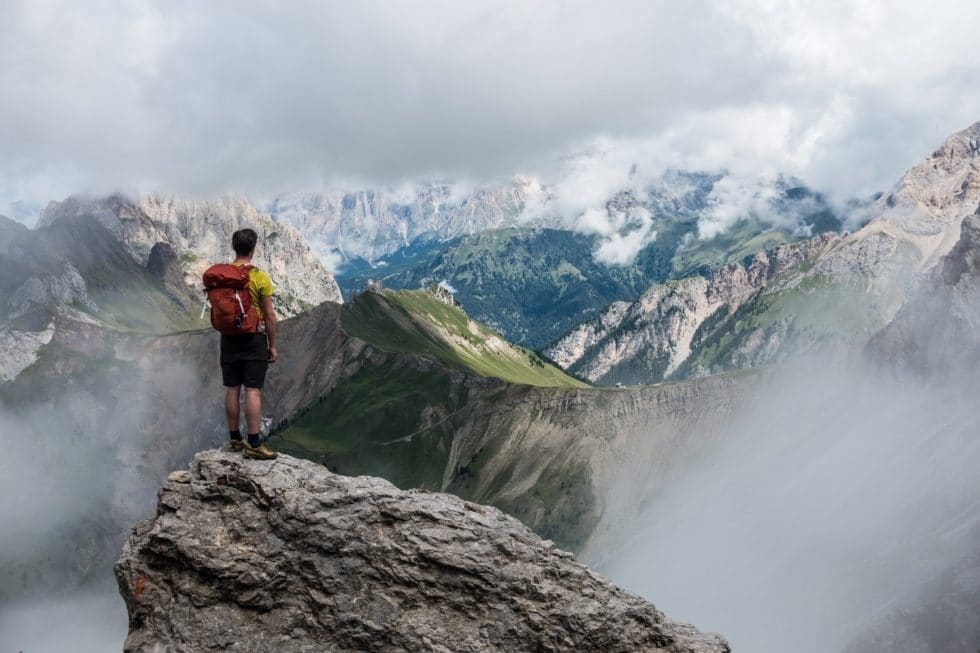
If you want to do the Tour du Mont Blanc but don’t have two weeks of vacation to do it, you can do the Tour du Mont Blanc in 7 days. In fact, in only one week it is possible to do the Tour du Mont Blanc in a loop, thanks to some arrangements.
In 7 days you will have time to walk in 3 different countries, trek around one of the most iconic peaks in the Alps and see the best of the TMB landscape.
You will find here all our advices to do the Tour du Mont Blanc in seven days to live a week of trekking around the highest summit of Western Europe!
Tour du Mont Blanc in 7 days: the route
To do the Tour du Mont Blanc in 7 days, you follow the same route as for the full Tour du Mont Blanc from Les Houches, with two differences.
On the one hand you arrive in Argentière, in the commune of Chamonix-Mont-Blanc. From there you can take the train RERS004 to be in Chamonix in less than 20 minutes.
On the other hand you will take the bus between La Fouly and Champex to save time and avoid a long stage.
You can find all the routes to take by public transport on Google Maps, or on the official websites of the bus companies.
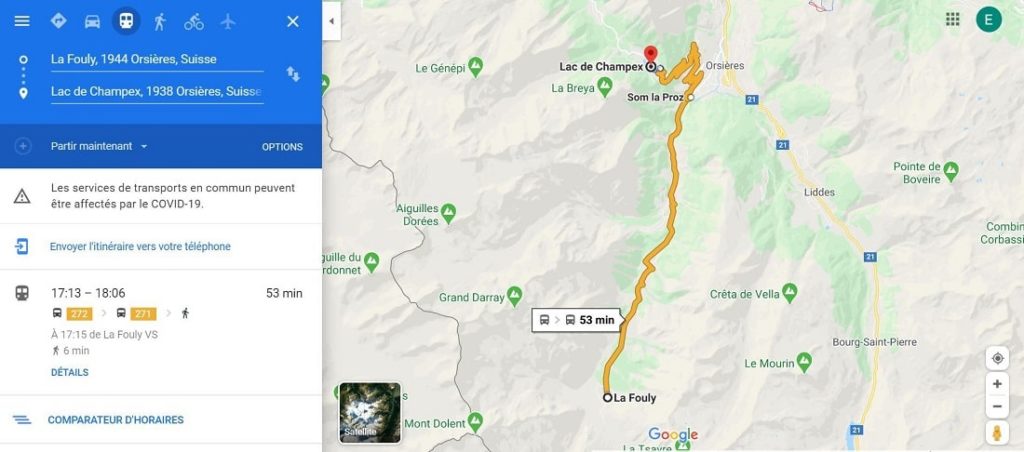
These two changes in the full TMB itinerary allow you to do the Tour du Mont Blanc in 7 days instead of 11.
The itinerary to do the Tour du Mont Blanc in 7 days
Thanks to the variants and the good network of shuttles and buses, the possibilities of itinerary to realize the TMB in a period of 7 days are multiple. Here is the one we suggest you discover during our organized and guided tours.
Itinerary of the Tour du Mont Blanc in 7 stages
- 6 hours of walking
- D- : 1300 m
- D+ : 1450 m
- D+ : 1100 m
- D- : 1050 m
- D- : 1000 m
- D- : 1260 m
- D+ : 1000 m
Why do the Tour du Mont Blanc in 7 days?
Doing the Tour du Mont Blanc in 7 days allows you to do a TMB in a single week. If you are not yet retired or cannot take time off for a long period of time, this allows you to do the mythical TMB in one week!
Moreover, doing the Tour du Mont Blanc in 7 days on a well thought out and adapted route can allow you to select the best stages to see the most grandiose landscapes, and enjoy them all the more fully as you will be less tired.
Doing the Tour du Mont Blanc in 7 days allows you to be less tired than after a full TMB which is necessarily longer and more demanding for the body.
Moreover, the course is of moderate difficulty.
Indeed, you can count on about 6 hours of walking per day over 7 days. The average difference in altitude of 800 meters allows you to fully enjoy the landscape without suffering too much physically and to take breaks as you wish.

If doing the Tour du Mont Blanc in 7 days is a major physical effort, for which you can prepare yourself, the difficulty of the route, the total duration and the choice of routes rich in breathtaking landscapes and pleasant mountain huts or lodges make it a unique trek and rich in emotions.
You can even go through an agency to get even more out of your TMB.
The little extras of doing your Tour du Mont Blanc in 7 days with Watse Trekking Mont Blanc :
- Your luggage will be transferred every day and you will only have to carry a small bag for the day.
- Picnics and snacks are prepared by a chef and adapted to the hike.
- The route taken is in the opposite direction to that chosen by the other agencies in order to cross and not follow or precede the other walkers.
Doing the TMB without a guide for a week
You can choose to do your 7 day Tour du Mont Blanc on your own or with the help of professionals.
Doing the Tour du Mont Blanc trek on your own after having organized it with an agency that designs your custom trip allows you to benefit from the assistance of an agency and professional guides.
You can be sure to have a route perfectly adapted to your desires, assisted by professionals who really know the Mont Blanc in depth.
With our agency, you will be able to co-organize with a guide your place of departure and arrival, adapt your transfers, the number of days of walking, the places where you want to spend, the type of accommodation where you want to sleep and eat, etc.
When everything is good for you, the guide who will be in charge of your trekking project will create a map and a road-book made to measure including two stages for each day (a classic one and a more sportive one, to be chosen according to your desires and your shape of the day) as well as all the necessary information.
During your trek, at the frequency you wish, the guide will call you to advise you and make sure that everything is going well.
Find out more here to do the Tour du Mont Blanc trek without a guide and organize it with our professionals!
How to prepare for a 7-day Tour du Mont Blanc?
Choose the best period to make your trek.
The ideal season to hike the TMB is from mid-June to mid-September, when the huts are open.
However, there are distinct periods in the season.
Choose the end of June if you want to do the Tour du Mont Blanc during the flowering period. It is the ideal period for nature lovers.
However, it happens that at this period all the snow has not yet melted. So some passages can be more difficult at this time, like the Col des Fours or the Fenêtre d’Arpette which are often still covered in snow.
From mid-June to mid-August is the peak season and the trails are very busy. If you want to do the TMB during this period, it is interesting to take the route in the opposite direction to have more peace and quiet.
Mid-August to mid-September is the end of the season but the weather is still quite good, and the trails are much less crowded, making it the ideal time if you want a more leisurely, strolling TMB.
So choose the best week to do the Tour du Mont Blanc according to your preferences and desires. Once you have chosen your dates, you can look at how to get to the start of your TMB!
Which equipment to do the Tour du Mont Blanc in 7 days?
The hiking equipment.
For your 7-day Tour du Mont Blanc, use your classic hiking equipment.
- Backpack (with a suitable waterproof rain cover)
- Walking sticks
- Some tablets or filter to purify the water
Add to that a few “just in case” items that take up little space in the bag but cover your back in case of trouble.
- A survival blanket
- A whistle in case you get lost
- A lighter even if you don’t plan to light a fire
- Map and/or topo guide with a compass to use it!
Finally, take what you need for your personal hygiene. While you may be tempted to take nothing to lighten your bag, keep in mind that mankind invented hygiene for a simple reason: to avoid infections, diseases and germs.
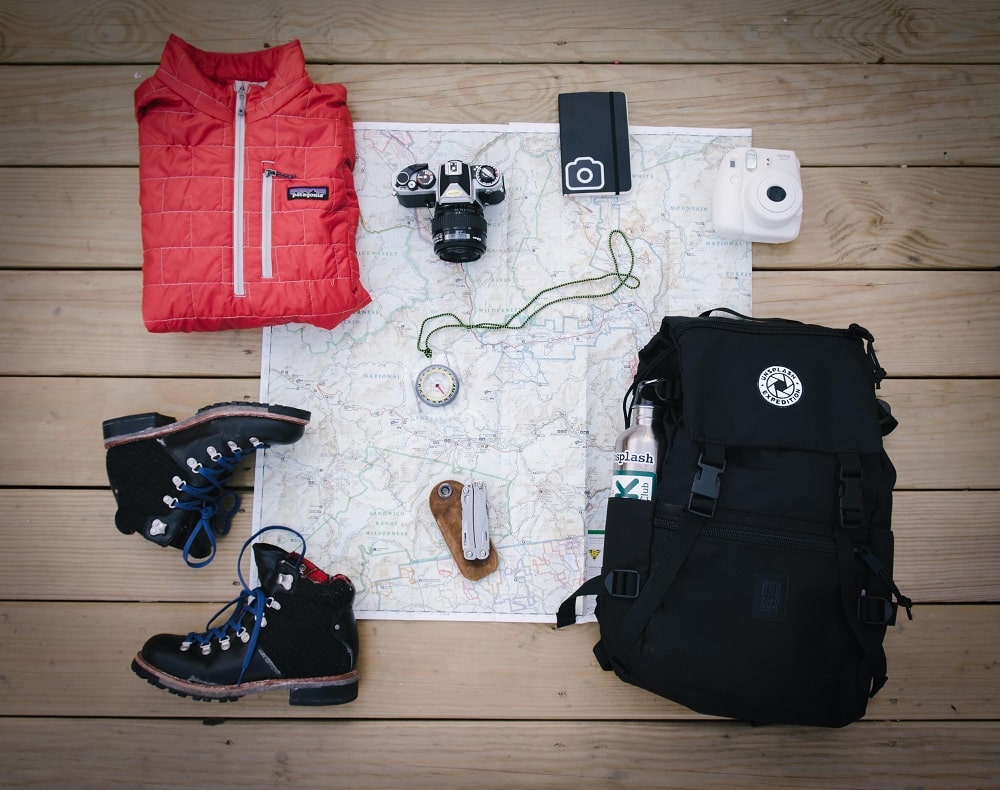
You will be exposed to it during your TMB, especially if you are going to bivouac. So take the necessary measures to maintain a decent hygiene and do the Tour du Mont Blanc in 7 days in all serenity.
- A microfiber towel (Decathlon offers them at very affordable prices and they are very compact so they don’t take up too much space in the bag)
- Toothbrush and toothpaste for 7 days (morning and evening)
- A little hydroalcoholic gel to wash your hands quickly on the Tour.
- Marseille soap. You can even grate it and put it in an airtight bag to take only what you need. It will allow you to wash your body, but also to do the dishes and laundry, or to clean a wound.
Mountain clothing
Get ready to do your 7 day Tour du Mont Blanc. Take the right clothes and shoes. Find here the essentials:
- Breathable T-shirts
- A waterproof jacket
- A pair of hiking pants
- Hiking shoes
- Hiking socks
- A down jacket
For the top, adopt the 3-layer technique to wick away perspiration while keeping you warm. This system also allows you to easily adapt to your feeling by adding or removing a layer while walking.
The first layer with your breathable t-shirt allows you to evacuate perspiration. The second layer with the fleece keeps you warm and the last layer with the waterproof jacket and/or down jacket protects you from wind and rain.
Doing the TMB in a week: practical information
To come and go.
Depending on where you are coming from to do your Tour du Mont Blanc, you will need different modes of transport.
If you plan to come by plane, the closest airport to the departure and arrival of your TMB will be Geneva . It is 90 km from Chamonix, which you can reach from Geneva by train, bus or car.
You can also land at Lyon airport if you can find a better flight for you. It is 220km from Chamonix but you can take the train to Chamonix via Bellegarde Sur Valserine.
You can also take the train directly to Chamonix, and there are also numerous bus routes from most of France’s major cities.
From Chamonix you can reach your starting point by bus, taxi or shuttle. A very dense network of public transport and taxis covers the area to meet the demand of hikers who are doing the Tour du Mont Blanc.
Sleeping well before, during and after the Tour du Mont Blanc
For before and after:.
In Chamonix as well as in Les Houches, you can find comfortable hotels and gites to rest before or after your TMB. Find here our favorites, tested and approved by us and our clients!
In Chamonix:
- Hotel la Croix Blanche at 81 Rue Joseph Vallot
- The Gîte le Chamoniard Volant at 45 Route de la Frasse
- The Hotel Les Lanchers at 1459 Route des Praz
- The Gîte le Moulin à Montroc at 32 Chemin du Moulin des Frasserands
In Les Houches :
- The Hotel les Mélèzes at 333 Rue de l’Essert
- The Gîte Michel Fagot at 2 Allée des Sorbiers
During the Tour du Mont Blanc :
On this tour you can find very comfortable refuges, hostels and lodges. If you don’t go through an agency, then remember to book well in advance, some huts are fully booked for the season as early as April.
Even from February onwards, some nights in July and August are already fully booked, so go through an agency or plan your TMB well in advance!
If you decide to go through an agency like Watse Trekking Mont Blanc, we will take care of the booking of the gites.
You can also take the comfort option for an extra 100 euros which allows you to sleep in private double rooms, rather than in a dormitory, for a comfortable 7 day Tour of Mont Blanc!
To know more about it, discover our article dedicated to the refuges on the Tour du Mont Blanc .
Ready to do the Tour du Mont Blanc in 7 days?
If you have a question about the TMB, feel free to leave a comment or send us a message , we will be happy to discuss the subject with you.
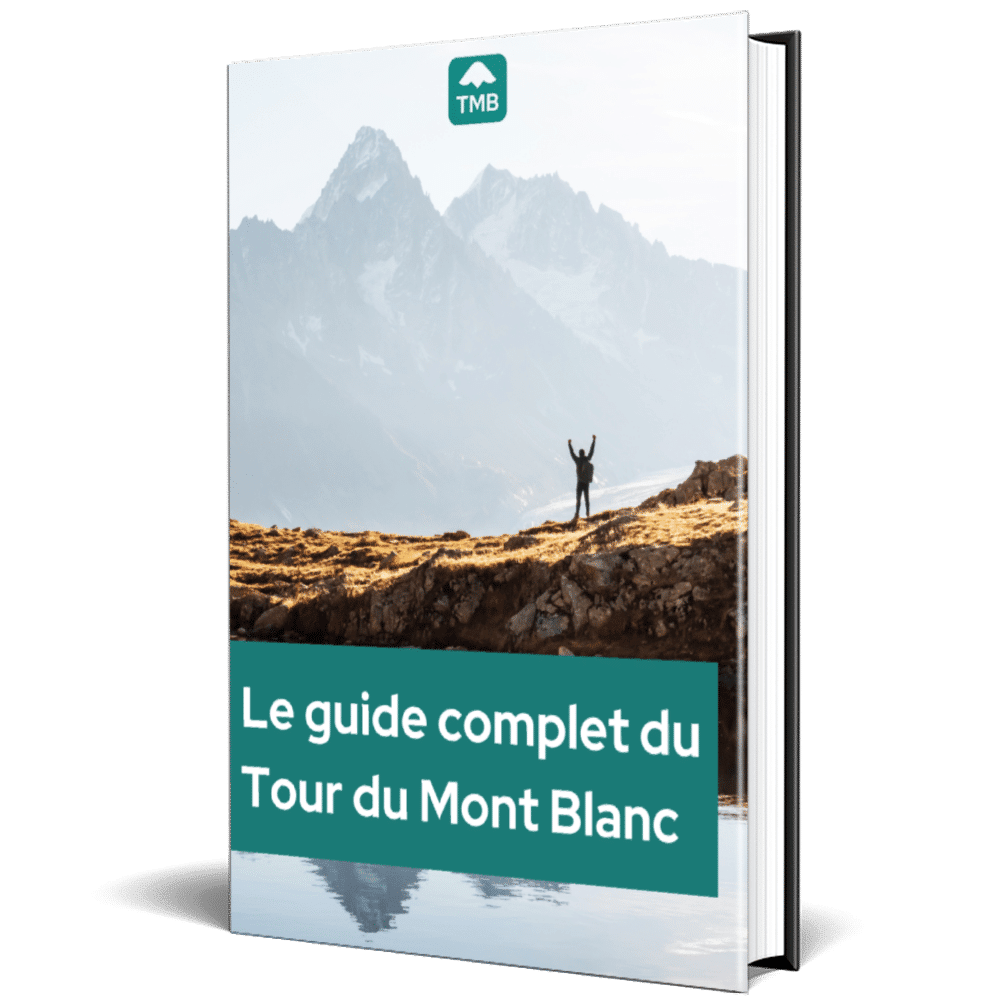
Obtenez gratuitement le guide ultime du Tour du Mont Blanc !
Itinéraires, refuges, conseils de préparation physique, liste de matériel et vêtements... Toutes les réponses aux questions que vous vous posez sur le plus beau trek d'Europe se trouvent ici ! Forts de leur expérience, nos guides ont compilé tout leur savoir dans un guide complet de plus de 50 pages. Téléchargez-le gratuitement ici 🙂
- Tips for hiking and trekking
- Tour du Mont Blanc: itineraries
- Tour du Mont Blanc: tips
- Trekking and hiking gear
- Trekking in the Alps
- Uncategorized
D’autres articles qui peuvent vous intéresser
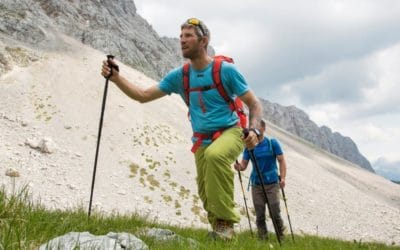
How to choose hiking poles?
by Trekking Mont Blanc | 30 November 2022 | Trekking and hiking gear
How to choose the best hiking poles? This is a question that is (very) often asked, but there is no simple, ready-made answer. However, choosing the right trekking poles is essential for them to accompany you effectively on your outings...
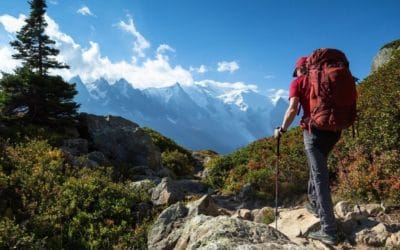
10 useful information and tips on the Tour du Mont Blanc (TMB)
by Trekking Mont Blanc | 29 November 2022 | Tour du Mont Blanc: tips
The Tour du Mont Blanc is a trek that is the dream of many hikers and nature lovers in France and around the world. On this trekking itinerary, varied landscapes and grandiose panoramas are offered to the walkers who cover it and in...
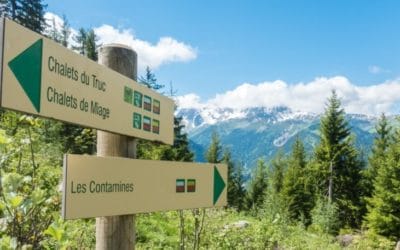
How to read the Tour du Mont Blanc markers and signs in France, Italy and Switerland
by Trekking Mont Blanc | 29 November 2022 | Tour du Mont Blanc: itineraries , Tour du Mont Blanc: tips
The Tour du Mont Blanc was first marked between 1950 and 1952, making it the first truly international GR®. Indeed, it was in 1947 that the Comité National des Sentiers de Grande Randonnée (CNSGR) was born. Three years later, the CNSGR...
- Bici da Strada Aero
- Bici da Strada Endurance
- Freni a Disco

TEST – Bryton Rider 460: costo ragionevole, tutte (o quasi) le…
Test – ruote 9th wave avalon 454: alto profilo per tutti,…, test – specialized s-works tarmac sl8: la prova di lunga durata, test – sella smp evo: la forma a s per i…, scarpe trek rsl road: si adattano davvero alla forma del piede, mondraker dusty: due nuove versioni per la e-gravel spagnola, idropulitrice portatile muc-off: specifica per la bici con funzione “schiuma”, nuova look 785 huez: pensata per l’amatore più che per il…, nuovo sram red i pro’ lo stanno già usando…, nuova felt vr: endurance con telaio da 900 gr e sistema…, offerte specialized in corso: fino a 3.000 euro in meno su…, bilancio colnago 2023: l’azienda italiana vola nonostante la crisi del settore, campionato italiano gravel 2024: percorso e info utili, richiamo fsa: problemi su alcune guarniture gossamer agx+, giro next gen 2024: svelato il percorso con tre arrivi in…, omar di felice ha vinto la indian pacific wheel ride: numeri…, i numeri sono tutto, ma valgono più delle emozioni sentite cipollini…, la bici e quella tecnologia “buona” che ci fa sentire umani, le bici costano parola a chi guida il mercato….
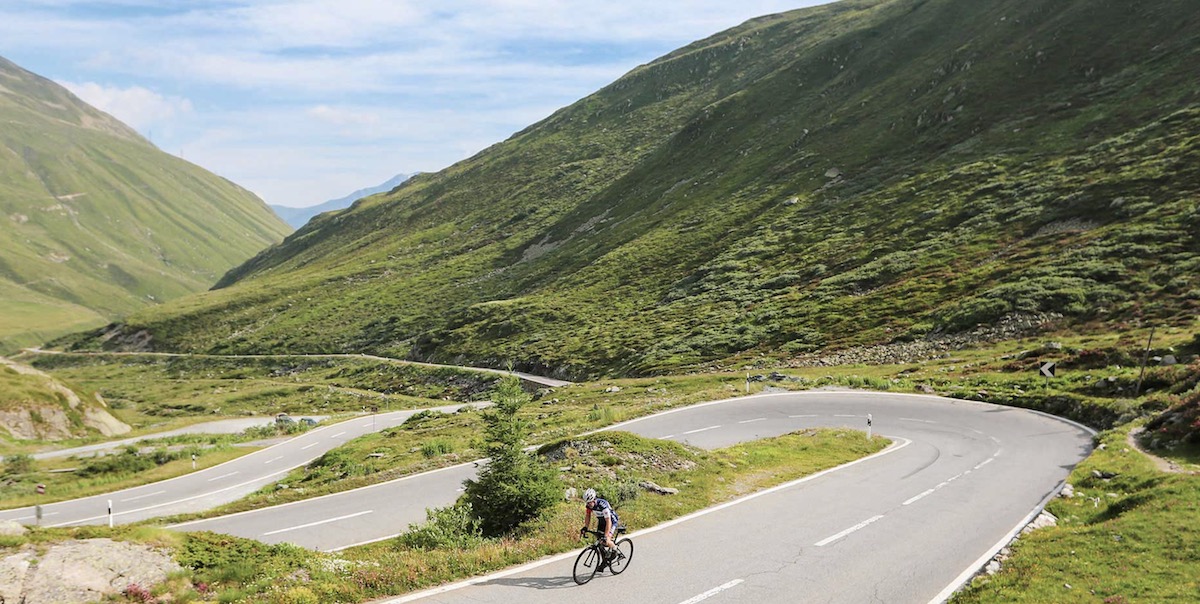
Alla scoperta del Tour du Mont Blanc con Komoot e Omar Di Felice
Il Tour du Mont Blanc è un percorso di circa 330 km e 8.900 metri di dislivello che si snoda attorno al massiccio del Monte Bianco. Un itinerario esigente, ma al tempo stesso in grado di offrire emozioni indimenticabili. Ne esiste anche una versione pensata per il gravel e un’altra che ripercorre, attraverso impervi sentieri da Mtb, il trail della gara di corsa a piedi “ UTMB ”.
In questo articolo, però, affidandoci all’esperienza di Omar Di Felice , parleremo della traccia su strada asfaltata, che ben si presta a un viaggio in assetto da bikepacking leggero. Ovviamente non lo faremo in chiave Ultracycling, ma più cicloturistica. Lasciamo quindi la parola a lui…
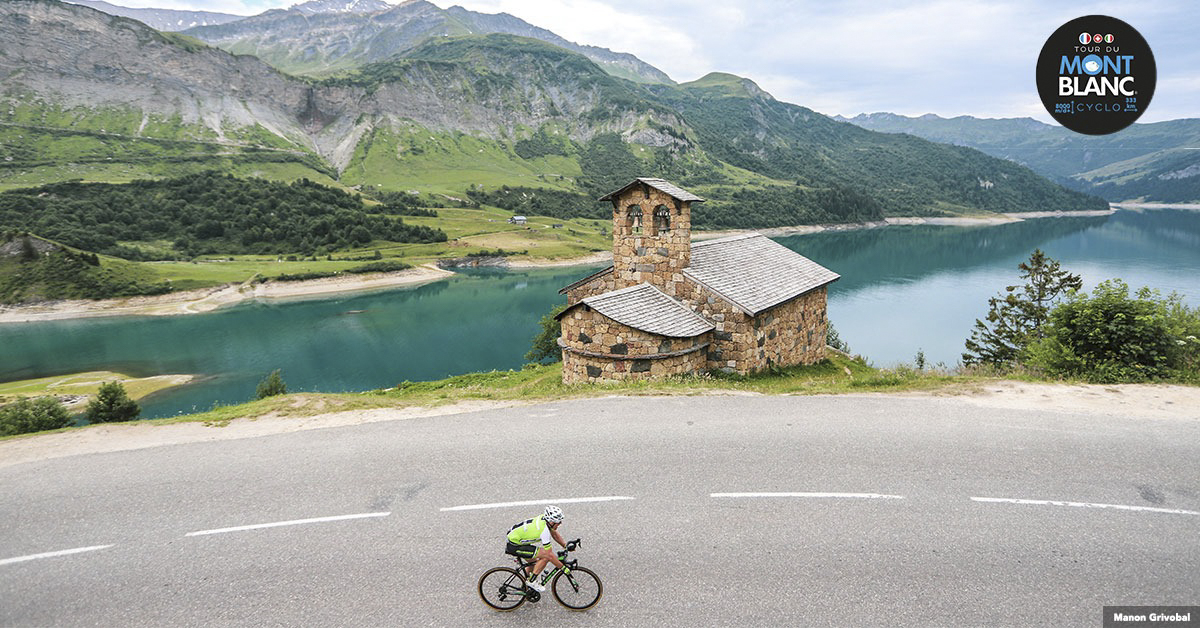
googletag.cmd.push(function() { googletag.display('div-gpt-ad-1601612700269-0'); });
Le tour du mont blanc in due giorni.
Nella celebre e partecipatissima gara di ultracycling, che ogni anno si svolge intorno alla metà di luglio, i concorrenti percorrono il giro in autonomia e in modalità nostop, partendo all’alba e arrivando nel cuore della notte.
Un percorso esigente e affascinante al tempo stesso, che incarna l’essenza della mia passione per il ciclismo e l’ultra endurance: da sempre amo pedalare affrontando grandi dislivelli e prediligendo le lunghe salite alpine.
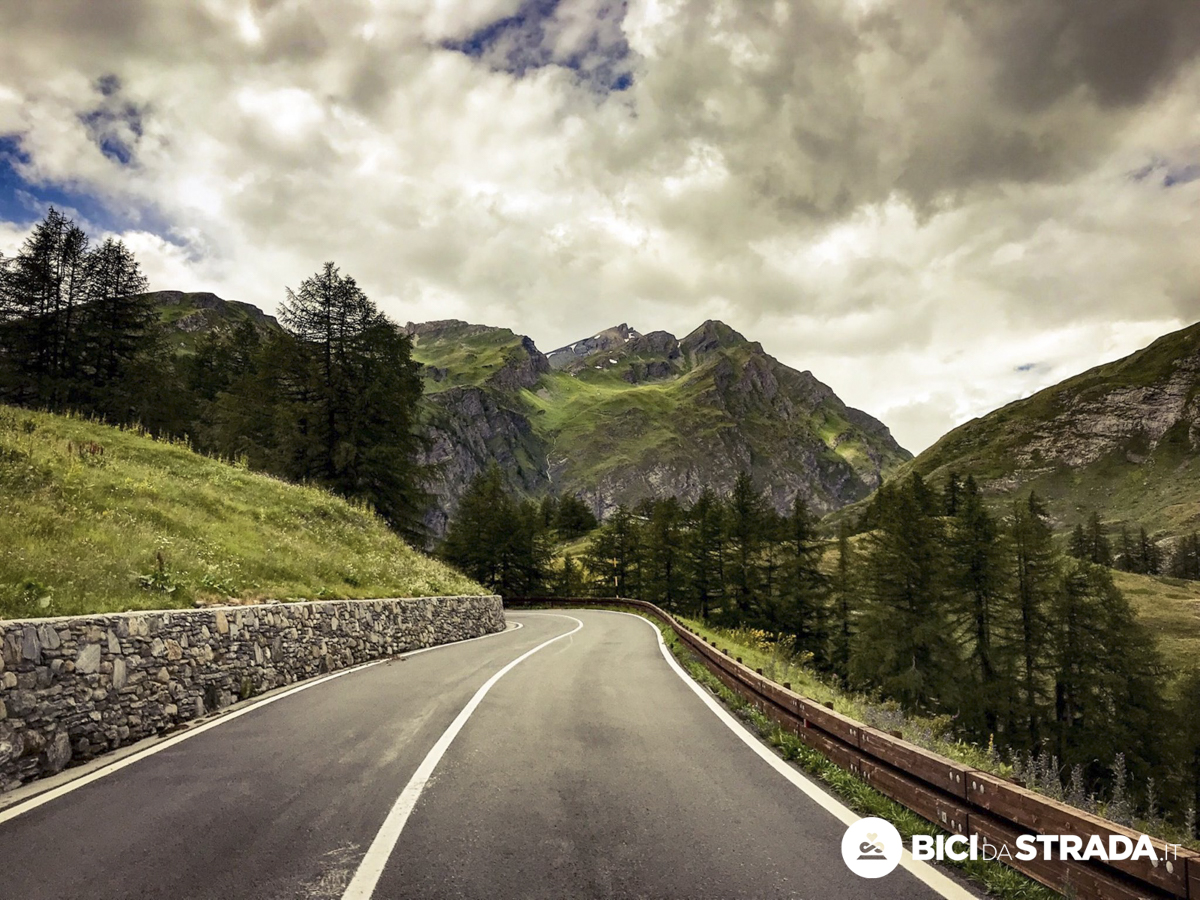
Questo percorso, però, offre anche altre chiavi di lettura : può essere diviso in due o più parti per godere a pieno non soltanto della bellezza delle strade francesi e svizzere (su quelle italiane, ahimè, dobbiamo ancora registrare il primato “negativo” circa le condizioni dell’asfalto e, soprattutto, il grado di rispetto degli automobilisti) lanciandosi in un viaggio da bikepacking della durata di un weekend.
Cercherò di presentare la versione “Tour du Mont Blanc in due giorni” con la specifica che, nel caso lo vogliate, è possibile dividere a sua volta ogni tappa in altre due porzioni.
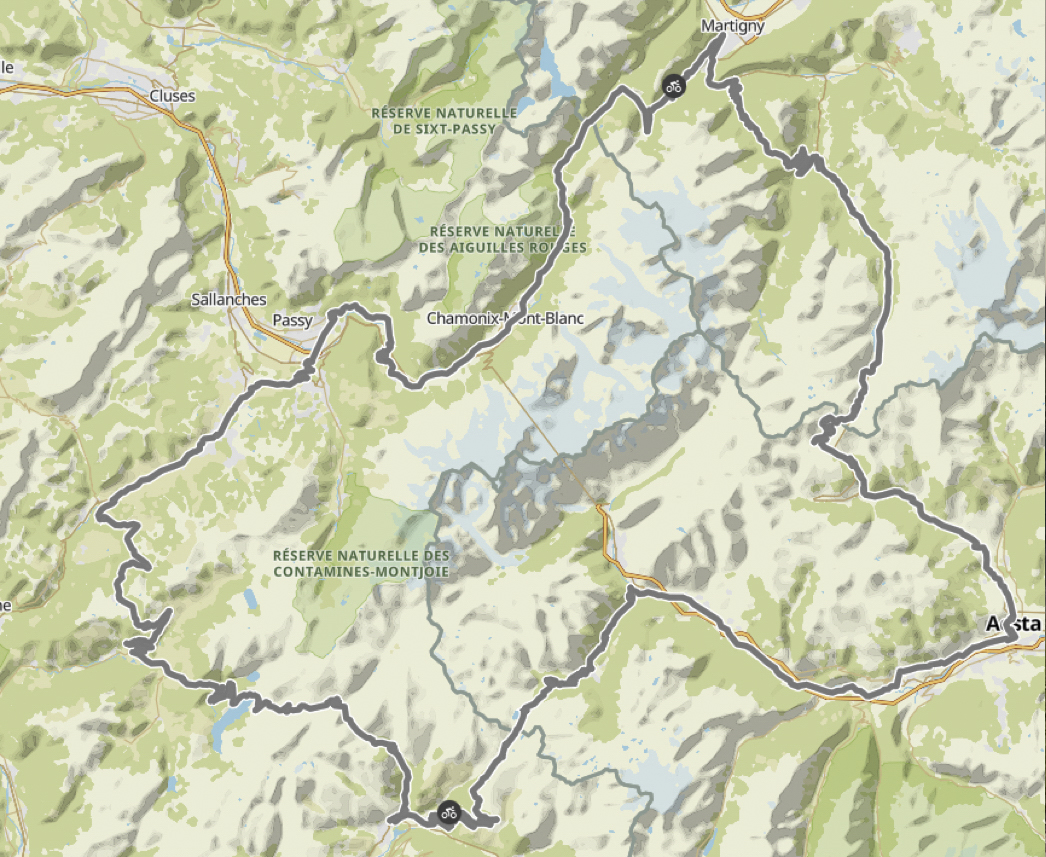
googletag.cmd.push(function() { googletag.display('div-gpt-ad-1530678044541-0'); });
Il percorso.
Per tracciare il percorso mi sono affidato a Komoot , strumento immancabile per pianificare una traccia. Alle funzioni di tracciamento per punti, ormai proprie pure di altre piattaforme, ne associa altre per me imprescindibili.
Inoltre, con l’aggiunta del livello Trail View è ora possibile vedere punto per punto, laddove inserite anche da altri utenti, le condizioni della strada che si andrà a percorrere riuscendo ad avere informazioni utili a definire il tipo di setup migliore per affrontare il giro.
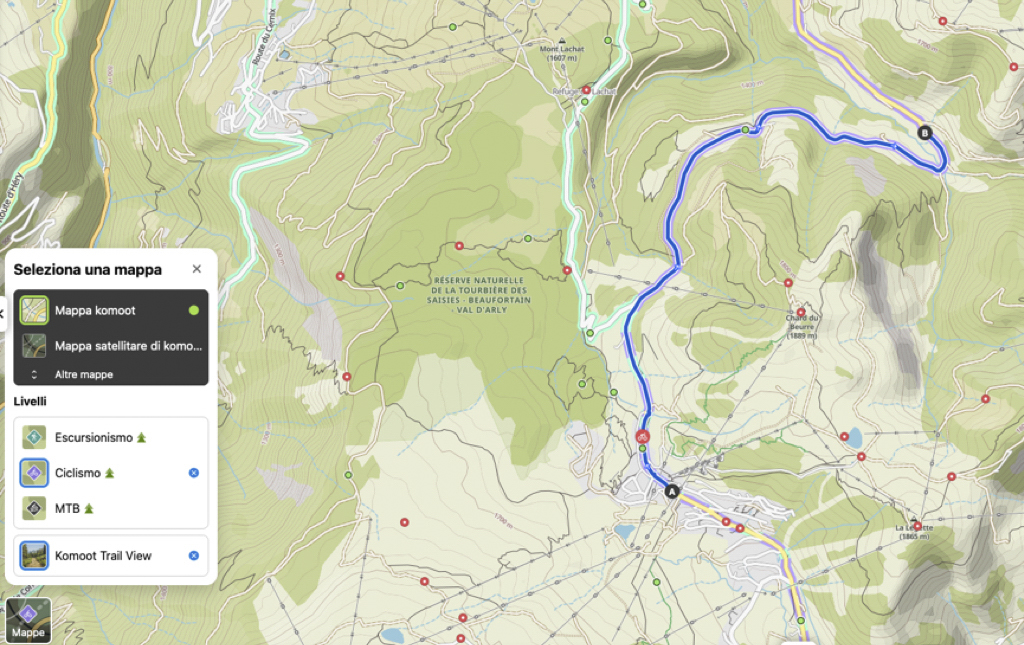
Navigando tra gli Highlights , inoltre, si può curiosare attraverso i punti di interesse, trovare fontane, scorci con spunti attrattivi, località in cui fermarsi a dormire, descrizione di salite e passaggi salienti del giro, nonchè tutto ciò che può esserci utile a rendere ancor più ricca l’esperienza di un viaggio in bicicletta.
In più potrete decidere, come anticipato, di dividere la traccia in più parti affrontando il viaggio in un numero di giorni congruo al livello di allenamento e al numero di ore che volete dedicare alla parte in sella. (Il giro si snoda attraverso borghi di montagna, alpeggi e passi alpini che meritano soste approfondite e tutta la calma per essere vissuti).
Passate in rassegna le modalità con cui ho realizzato le tracce (in calce all’articolo tutti i link utili per ottenerle e scaricarle sul vostro dispositivo di navigazione o consultandole dallo smartphone) per entrare maggiormente nel dettaglio del percorso e di come affrontarlo.
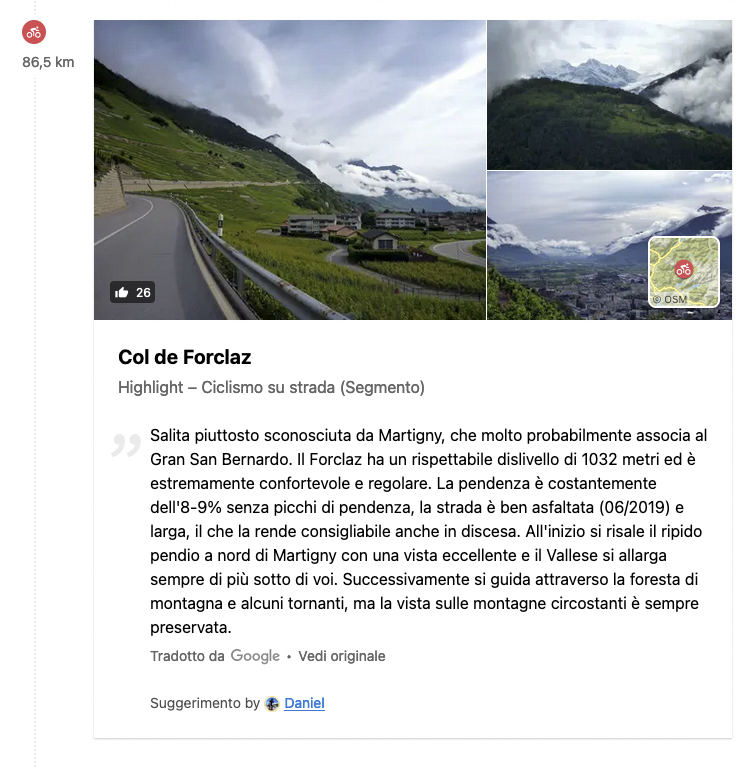
googletag.cmd.push(function() { googletag.display('div-gpt-ad-1554388164850-0'); });
Giorno 1 – les saisies – aosta .
184 km – 4.450 m D+
Les Saisies , punto di partenza del giro, è una graziosa località sciistica nel cuore delle Alpi francesi. In estate si trasforma in un paradiso per biker, ciclisti e chiunque voglia vivere la montagna in maniera “slow”.
Presa d’assalto da biker che sfruttano il bel bike park presente, offre un’ottima ricettività alberghiera. Il mio consiglio è quello di arrivare con calma almeno 24 ore prima (o fermarsi le successive una volta ultimato il tour) per una piacevole passeggiata quassù e respirarne l’atmosfera.
La partenza è in discesa e introduce alla parte che tra dolci saliscendi, percorrendo il fondovalle di Megève, ci porta a Chamonix Mont-Blanc, la celebre località francese alle pendici del Monte Bianco. Vale la pena una sosta prima di affrontare la prima vera asperità di giornata, il Col de la Forclaz con cui si entra ufficialmente in Svizzera lungo la discesa verso Martigny.
Da qui il percorso disegnato ricalca quello della gara di ultracycling, pertanto si accede alla salita del Gran San Bernardo attraverso le dure rampe che portano al lago di Champex. Chi non vuole affaticare troppo le gambe può decidere di saltare le dure rampe della salita svizzera affrontando subito il Colle del Gran San Bernardo. Ascesa lunga e a tratti interminabile, è anche il punto di accesso verso Aosta . Siamo ufficialmente in Italia! Il consiglio, per chi sceglie di dividere il percorso in due giorni, è quello di fermarsi a dormire nel capoluogo aostano.
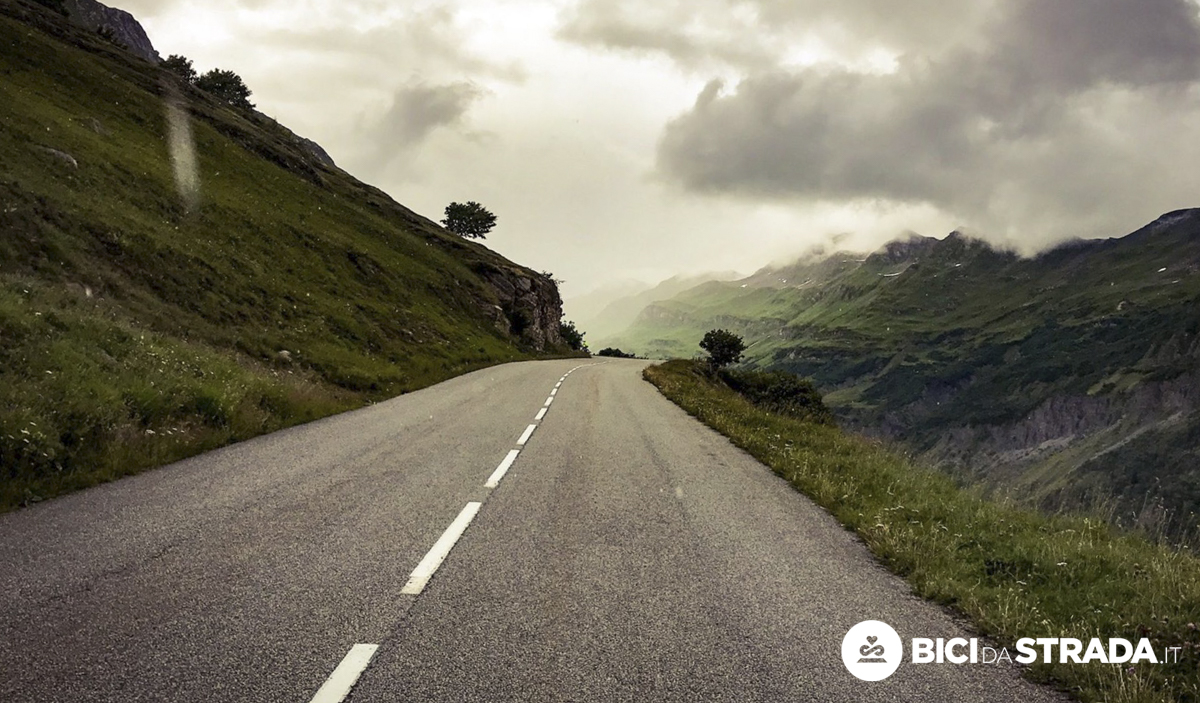
Giorno 2 – Aosta – Les Saisies
142 km – 4.490 m D+
Dopo una buona colazione ad Aosta la prima parte di risalita lungo la vallata che ci porta a Pre-Saint Didier è ottima per riscaldare i muscoli.
Da qui inizia la lunga ascesa al Colle del Piccolo San Bernardo (tramite cui faremo rientro in Francia). In cima è doverosa una fermata e una foto ricordo con la statua gigante del celebre cane protagonista di molti soccorsi in alta quota.
La discesa verso Bourg Saint Maurice (consiglio qui un’altra sosta per rifornimento di acqua e cibo poiché la strada verso la Cormet des Roselend è scenografica, ma priva di fontane e punti di ristoro) è il preludio alla salita più bella e dura, secondo il mio parere, di tutto l’itinerario. La Cormet des Roselend sale tra alpeggi e viste mozzafiato. Una volta in cima la sua discesa non sarà da meno e costituirà il preludio all’ultimo valico, ossia il Col des Saisies , che ci riporta al punto di partenza ed è il termine di questo anello.
Equipaggiamento consigliato
Ho affrontato il Tour sempre in gara e mi sono affidato a un equipaggiamento molto leggero: impiegando un tempo complessivo tra le 12 e le 13 ore e potendo fare affidamento sui ristori messi a disposizione dall’organizzazione, non ho mai avuto bisogno di borse da bikepacking o zaini al seguito.
Affrontando l’itinerario come un viaggio, però, bisogna ragionare bene sul materiale da portare con sé. Consiglio, comunque, un assetto da bikepacking leggero , soprattutto se si deciderà di dormire affidandosi alle strutture ricettive dei paesi attraversati (a meno che non siate dei patiti del campeggio, tenda e sacco a pelo saranno superflui).
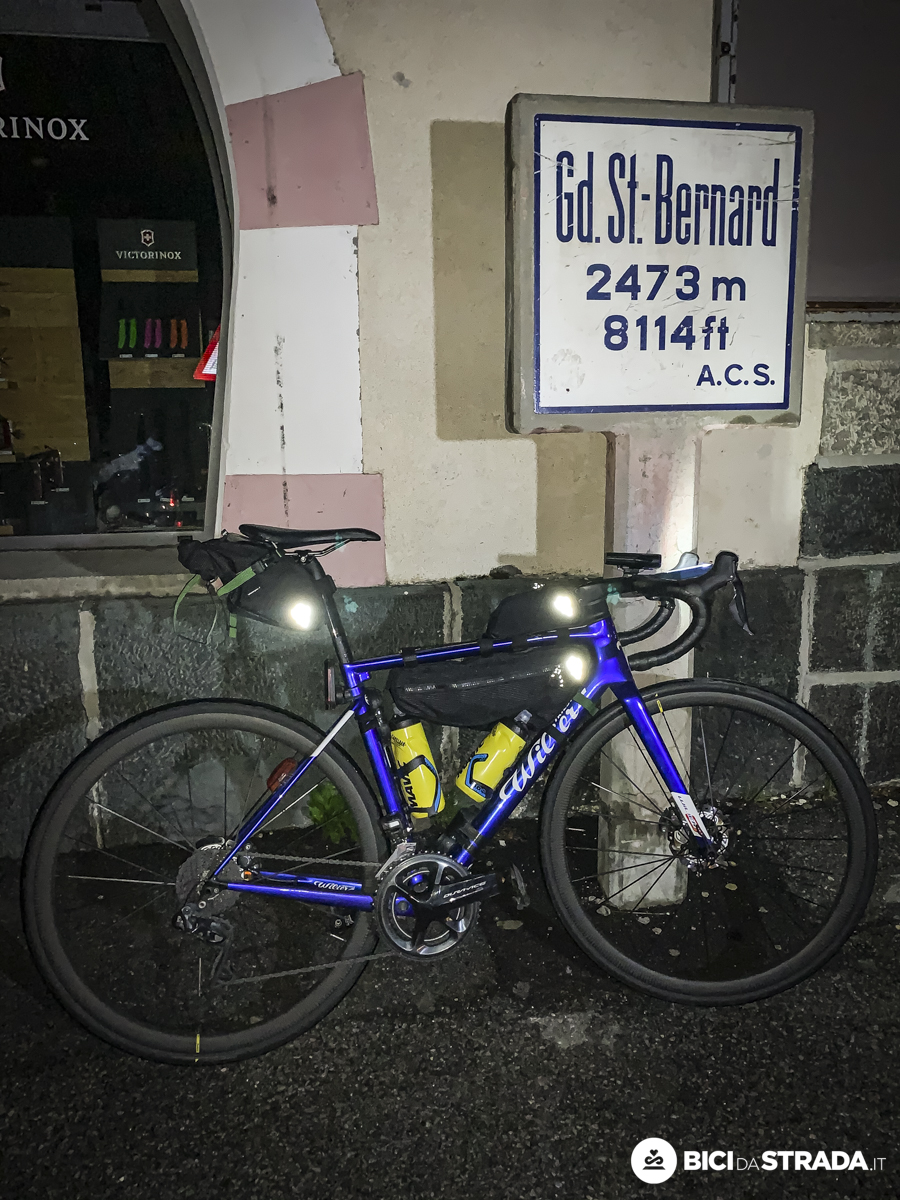
Ricordatevi sempre di portare un kit per affrontare eventuali acquazzoni che, in alta montagna, sono sempre più frequenti e non fatevi ingannare dal grande caldo che ormai affligge anche le aree alpine a quote elevate: spesso è proprio qui che si nasconde il rischio di eventi meteo estremi. Fermarsi a fare il punto della situazione consultando il meteo alla base di ogni salita è sempre una buona idea, in modo da evitare di trovarsi nel bel mezzo di un temporale mentre si sta scalando un passo ad alta quota.
Per quanto riguarda l’abbigliamento giù dalla bici tutto è demandato a come deciderete di trascorrere la serata e alle vostre abitudini. Personalmente una tuta, un paio di bermuda e una t-shirt possono essere più che sufficienti dopo una lunga giornata su e giu tra i valichi alpini.
Traccia Komoot giorno 1: komoot.it/tour/910099987 Traccia Komoot giorno 2: komoot.it/tour/910108233 Link alla collection del Tour: komoot.it/collection/le-tour-du-mont-blanc-road
Foto d’apertura letourdumontblanc.fr
ARTICOLI CORRELATI ALTRO DALL'AUTORE
Viaggiare con la bici 2024: cicloturismo a + 35%, in controtendenza sul mercato della bici, omar di felice ha vinto la indian pacific wheel ride: numeri e curiosità…, ultimi articoli, nuova look 785 huez: pensata per l’amatore più che per il pro’, offerte specialized in corso: fino a 3.000 euro in meno su alcune bici.

ARTICOLI POPOLARI
Come calcolare l’altezza sella della bici da corsa in modo corretto, bici gravel per iniziare: 20 modelli validi con prezzo contenuto, 25 bici con buon prezzo e alta qualità: ecco i nostri..., categorie popolari.
- Tecnica 2873
- Interviste 73
- Cicloturismo 36
- Diretta streaming 21
- In evidenza 20
Sellaronda Bike Day 2021: si avvicina la data di settembre
- Where to stay – Chamonix
- Geneva Airport to Chamonix
- Itineraries
- Tour du Mont Blanc Refuges
- Refuges ebook

The Tour du Mont Blanc’s 11 stages
This page will help you get a grip on the route of the Tour du Mont Blanc. There are 11 Tour du Mont Blanc étapes (stages). If you’re planning to trek self guided independently, then you need to get acquainted really well with the trail route and understand it as much as you can before trying to plan your days and where you will stay.
The Tour starts traditionally in Les Houches, a village at the beginning of the Chamonix Valley and it’s actually possible to hike either way around the loop – clockwise or anti-clockwise. Most hikers hike anti-clockwise so that the views of Mont Blanc are always in front of you, but there are actually advantages of hiking clockwise, namely less traffic on the trail in the mornings.
There are several alternative start points to the TMB if you don’t want to start at Les Houches. You could start at any of the main towns along the trail – Les Contamines (France), Courmayeur (Italy) or Champex-Lac (Switzerland).
It’s also possible to start your hike a couple of stages earlier in the Chamonix Valley so instead of starting at Stage 1, you could for example start at Stage 11 and do Stage 1 as your day 2. I often suggest this when I help trekkers plan their itinerary (I offer private consultations via zoom). This is a great option as accommodation is limited between stages 10 and 11 so by starting off on Stage 11 (you can get the Brévent cable car up from Chamonix town centre) you can either do this as a day hike and return to your Chamonix hotel, or you can book somewhere to stay in Les Houches if you want to be moving each day. This means you would finish at the end of Stage 10. Bear in mind that Stage 11 has a long, brutal descent – in fact if you took the Brévent cable car up and then the summit cable car after – you would be whizzed to the top of Brévent (and that spectacular views! ) within minutes – you would ONLY have descent for the remainder of the day (around 5 hours). If you have delicate knees then you might want to re-consider turning this into your first day!
Its also a great idea to do Stages 10 and 11 as day hikes. This allows you to get some ‘training’ hikes in before with just a day pack before you set off into the wilderness!
If you aim to camp along the trail (and are not therefore tied to refuge bookings) and bad weather is predicted for the end of your trek. Instead of missing stage 10 and 11’s outrageously incredible views of Mont Blanc due to closed in weather, you could start at stage 10 and lap up the views before continuing onto ‘Stage 1’.
For now though let’s talk through each stage.

What is a ‘stage’ on the TMB?
The Tour du Mont Blanc hiking route has been divided into 11 sections which can be hiked in a day. Each section is called a ‘stage’.
If you are hiking independently and do not plan to book onto a guided tour, you do not have to follow the recommended 11 stages – you can easily create your own daily hiking plan to fit to your own schedule or level of fitness.
However, all the Tour du Mont Blanc guide books refer to these stages so it’s a good place to start to get to know the trail and is invaluable during your planning phase. If you are planning your trek yourself and going down the self guided route, expect it to take a while to read up, get to know the trail and then plan your days meticulously. There’s plenty of posts here that can help you. Read our Planning – First Steps article.

How long is each stage?
It’s worth noting that each ‘stage’ is LONG averaging between 13-20km per day over challenging terrain, expect between 700m up to 1000m elevation gain each day! Covering the entire Tour du Mont Blanc in 11 days is no walk in the park – expect to be on the trail between 7-9 hours per day.
Some of you may want to walk at a more leisurely pace and cover a shorter distance each day. In this case trekking the entire circuit of the Tour du Mont Blanc could take you nearer 14 days to complete.
Many hikers choose to hike the trek over two summers dividing the Tour du Mont Blanc in half which is a very sensible option. I’ve done this when hiking with my 10 year old. Most hikers split the trek and hike (in which ever order they like):
➳ Les Houches (Chamonix Valley- FRANCE) to Courmayeur (ITALY)
➳ Courmayeur (ITALY) – Les Houches (Chamonix Valley – FRANCE)
Other superhuman hikers fast pack the trail in a week whilst hundreds of hardcore athletes run the trail every August in the ultra endurance race, the UTMB arriving back in Chamonix with 21 -46.5 hours! The choice is yours.

Stage breakdown and overview
Below is a brief breakdown of each stage which will help you get a feel for the route of the Tour du Mont Blanc. The Tour starts traditionally in Les Houches, a village at the end of the Chamonix Valley.
If you want to make a shorter itinerary, for example you only have limited time of say a week, or you want to make shorter days because you don’t want to hike 7-9 hours every day (I hear you), then go on over to our Itineraries page where we have ready made suggested itineraries to shorten sections or to only hike the most stunning stages.
And of course if you have the time and want to hike shorter distances each day (because even the 11 day itinerary has some serious kilometres and elevation each day!) then know that there are refuges every 5km along the Tour du Mont Blanc trail so you can make your own itinerary to suit your needs. Just be sure to book early (Oct-Nov for the following summer) so that you can have your choice of refuges.
Tour du Mont Blanc distances & countries
LES HOUCHES (CHAMONIX) – LES CONTAMINES
- height gain 646m
- height loss 633m
Stage 1 starts from the village of Les Houches at the end of the Chamonix Valley, works its way over to the village of Bionnassay then down into the Montjoie Valley to the town of Les Contamines.
Faced at the beginning of trail with a brutal 600m climb from Les Houches to the Col du Voza (1653m), trekkers can opt out of this and choose to take the Bellevue cable car and be whizzed to more of less the same elevation in less than 5 minutes. Read our post on TMB short cuts .
From the Col du Voza see spectacular views of the Dome du Gouter and Aiguille de Bionnassay. The trail now meanders down through pleasant hamlets and verdant woodland. It’s still a long day but undemanding in terms of exposure and almost completely downhill if you take the cable car up.
It’s a good introduction to the trail to warm up the legs and soak up the French ambiance but nothing in terms of sheer rugged wild beauty which is yet to come.
VARIANT TRAIL – COL DU TRICOT – There is an alternative route for Stage 1 (18km) that passes the Col du Tricot (2120m) which offers much more spectacular views than the traditional route. It’s classed as a more challenging route, which it is compared to the traditional Stage 1, however in my opinion it is not ‘difficult’ and it’s certainly worth the extra effort for the highlights of crossing a Himalayan suspension bridge (crossing the rushing glacial water over this bridge is a highlight of mine), the spectacular views of Glacier Bionassay and the fantastic view of Dômes du Miage. I would say that more trekkers actually take this route than the traditional stage 1 route now and in fact in Kingsley Jones’s guidebook THIS IS simply stage 1. If you take the Bellevue cable car short cut from Les Houches (which I would ALWAYS recommend as it cuts 2 hours of unspectacular up) then it’s only a couple of minutes before you will reach the variant stage 1 trail (see map below). If you want to hike the traditional trail it takes approximately 20 minutes to reach the trail from the top of the Bellevue cable car. It takes me 2 hours to reach the top of the Col du Tricot from the Bellevue cable car. You then have a very steep descent down to Refuge Miage. It takes me 1 hour to descend the steep zig zag trail. DO NOT rush this – an injury here would be terribly disappointing. So in total it takes me 3 hours to get to Refuge Miage which I would highly suggest for lunch – they have a lovely garden overlooking the Dôme du Miage – book ahead in peak season. This variant should NEVER be considered in bad weather. You would not want to be on the top of the Col du Tricot in a lightening storm, plus the descent to Refuge Miage would be hazardous in rain. However look at the weather forecast – if it is predicting thunderstorms in the afternoon (which is common around 4pm in July and August) then this route would be perfectly okay if you were setting off at 8am in the morning – remember it only takes 3 hours to get to Refuge Miage and after this point the route is not a problem in bad weather. Accommodation options are at Refuge de Miage (private refuge – they have one large dorm or lovely private tiny chalets in the garden) or Auberge du Truc (very authentic basic stay available to book on the TMB website) both before Les Contamines. If you’re after a much more adventurous bed for the night consider taking the ‘smuggler’s trail ‘ from the top of Col du Tricot to the tiny 18 bed Refuge Plan Glacier. If you’re looking for more information on the refuges of the TMB I’ve written an ebook on them – click here to find out more .

If you’re looking to shorten your Tour du Mont Blanc trek into less days, then the traditional route through Bionassay is one of the recommended stages to skip. However I would never recommend skipping variant stage 1 – it’s one of my favourites! However if you simply don’t have time and for example want to do the half TMB to Courmayeur but only have 3 days and don’t want to hike longer than the standard stages each day then it would make sense to start in Les Contamines and skip this stage. This can be done by taking the bus from Chamonix to Les Contamines and starting your trail there. Or if you’re coming direct from Geneva Airport you can get an airport transfer direct to Les Contamines (which is easier than catching the bus from Chamonix to Les Contamines because you need to change bus in St Gervais and often the wait time is frustratingly long). Depending on the timetable schedule it can take between 2-4 hours to reach Les Contamines on public transport. Consider a private transfer if there’s a group of you.
If you’re looking how to make stage 2 slightly easier, consider taking the Bellevue cable car to cut 2 hrs off your trail & push on through Les Contamines to stay at the first refuge on the trail after the town. Nant Borrant is a gorgeous chalet refuge 1 hr up the trail (up a very steep hill!) which will give you a head start the following day

Planning – the first steps

Tour du Mont Blanc Tips – good advice before you begin

What is the ‘Tour du Mont Blanc’? 15 quick facts
37 comments.
Ashish Shukla
This is Ashish from New York. I stumbled upon your website and I must thank you for a really well written account of all the stages. I have not found such a detailed and succinct explanation for each stage anywhere else and I have done a fair bit of research. Thank you Thank you Thank you!! After reading this blog and your public transportation write up, I feel way more confident to tackle this hike starting on September 01-2021. I am planning to do it in 6 nights/7days.
tourdumontblanchike
Hi Ashish, you’re welcome. Have a great trek!
I totally agree with Ashish’s comments, above. We’ve done the full TMB (in 2015) and yet I still find I’m thoroughly entranced by all of the information, pictures, and tips for good planning that you share. Well done!! This is an excellent resource. I love its down-to-earth, friendly, honest tone. It’s so helpful to get real-life perspectives and details. You present them all in a very reader-friendly manner. The entries about the various refuges, and the descriptions of the traditional TMB stages, are particularly helpful… although, really, *everything* here provides great information. (My only suggestion (humbly offered) would be to proof-read the Casermetta Museum / Col de la Seigne history paragraphs, which seem of very different quality than the rest). Andrew McCluggage has put out a recent and very good book on the TMB, to add to the classic guides by Kev Reynolds and Jim Manthorpe; have you seen it? Your photographs and the attractive arrangement of each page/screen on your site really captures the allure and the magnificence of the TMB. It is an epic experience, from start to finish. Bravo, Mags!!! We will be keeping your work bookmarked for our next trip back!! I wish I could say we were heading out on the trail *today*!
Hi Caroline, thanks for getting in touch and for your kind words. I have re-read the Casermetta post and oh my gosh – why was that not proof read! I think some of it had been translated from Italian and not checked! Apologies! I’ve taken it offline as it needs to be updated anyhow – I hiked over the Col de la Seigne a couple of weeks ago and had the pleasure of interviewing one of the staff at the Casermetta so I have that interview on film which will be uploaded to the post. Hiked the variant stage 9 a couple of days ago which is a real favourite – stunning views of the Trient Glacier! I haven’t yet read Andrew’s book but I shall – will be hiking the tour again fully in September so I’ll aim to take that one with me this time and add it to our post on guidebooks. Thanks again for letting me know about the Casermetta post – glad you did 🙂 Best wishes. Mags
Thanks, Caroline! Hi, Mags – I am starting my hike from Le Brevent. So, the last day of my hike, I am planning to go from Trient to Le Brevent (via Lac Blanc) in one day. I think that’s approximately 19 miles. I was wondering if you have completed that section and your thoughts on whether it can be done in one day? The one constraint I am running into is that the last cable car (descent) from Le Brevent to Chamonix is at 4:30pm. So, I will probably have to start super early from Trient. Not sure if this is do-able in one day. I welcome your thoughts/suggestions.
Hi Ashish this would be an incredibly long day. Do you want to take public transport? One way to cut some time would be to take the chairlift down from Col de Balme then the bubble to the village of Le Tour. Then catch a bus (or walk) down the straight road to Montroc. Cross the train tracks at Montroc and walk behind the station where there is a trail that takes you up to Tré-le-Champ (10-15 mins up). This cuts out the up to Aiguillette des Posettes and the long long descent into Tré-le-Champ. It’s the only way you could cut the trail. Cutting out the Posettes would gain you possibly 2-2.5 hours although it would take at least 45 mins to get to there via public transport but at least saving your legs for the 3 hours up to Lac Blanc from Tré-le-Champ. It would be a long long day and I have to say I would never consider it but if you are a super fast trekker and aim to set off at 6am then its possible. You could always see how you are going when you get to Flégère and if you think you’re running behind take the cable car down into the valley from Flegere instead of continuing to Brevent (2-2.5 hours further). Good luck. Let me know how you get on.
This is a great resource bar none ! If I do stages 10 and 11 in consequtive days and want to stay at a hotel each night, would a stay in the same one both nights ? How do shuttles work at the end of each stage or what other tranportation modes are needed to return the the hotel in the evening ? Thank you
Hi Bob thanks for your kind words. I’m glad our website has helped you! Yes you can stay in the same hotel. It’s a good idea and actually I’ve recommended it before to hikers who want to see a bit of Chamonix first before setting off on the trek as it’s a good way to get a few days training hikes before leaving. Of course it sounds like you’d do this at the end of the trek so you would be arriving down from Col du Balme, to Tre-le-Champ. You will need to stay either in Argentiere, Les Praz or Chamonix. Les Praz would be more convenient as the Flegere cable car arrives here at the end of your next day but there are only a few hotels here (Hotel Eden is nice). Once you arrive in Tre-le-Champ the best way to head down the valley for the night is to walk down to the train station. To get here pass the Easter Island heads in the village (you can’t miss them!) and bear on the lower left hand trail – you will pop out at the train station in around 15 minutes. You will be able to catch the train to Argentiere, Les Praz or Chamonix. You will need to repeat this journey to get to the start of the trail again the following morning. What will be nice is that you won’t need to bring your heavy pack with you!! Stage 10 ends at Flegere – it’s a very short day even with the Lac Blanc detour so you may decide to hike on to Brevent to cut a bit of your trail time the next day. At Brevent you can also take the cable car down to the valley floor (Chamonix) so in this case it would make sense to stay overnight in Chamonix instead of Les Praz. Stage 11 ends in Chamonix Les Houches. There are frequent buses and the train that would bring you back to your hotel.If you followed this plan you could spend the 3 nights in the same hotel.
Merci beaucoup for this information, it is much appreciated. It has helped me so much in planning. The information is succinct and the web design in phenomenal!
I would like to start at Champex, go anti-clockwise, hike the TMB back around to Champex then continue on to hike the Walkers Haute Route to Zermatt. I plan on getting to Champex early to mid September after hiking a long trail in the USA June-Sept, so will have my “trail legs” then hopefully. It looks like the UTMB race will be over at the end of August so this will not be an issue. I also want to camp in a tent for the majority of the trail, sleeping in Refuges only infrequently and when I do I would not need a private room. I have ultra light gear and have experience through hiking in the USA.
Is this an unwise plan, given the start date I have chosen? It looks like the weather will still be reasonable. I do not want to miss too many beautiful views due to bad weather (but do not want to wait another year for TMB and Haute)! In September do I still need reserve Refuge bunk beds far in advance? Could I just see what’s available on the trail as I hike? I was planning on the Refuges just for a little food and a shower mostly. Last thing, what is your opinion on using my Zpacks Duplex tent for this time of year? I’m thinking I might need my NEMO Hornet tent instead but it’s heavy. Thank you!
Hi, the weather is normally still very good in September and indeed has rarely any thunder storms compared to August! I had one day of rain in 8 days last year but of course it can vary. I hiked the trail solo in September last year and didn’t book refuges in advance. I only got caught out on one night but managed to find somewhere in the end. I would suggest starting early September if you are planning on continuing onto the Haute Route after. Some refuges ask you to book a meal the day before but most would allow you to eat if there is enough food by just turning up – a few might not so always have a back up handy in the form of expedition food etc just in case. Take the lightweight tent. Bear in mind that wild camping in Italy and Switzerland is tricky. Italy it is legal after 2500m! and Switzerland is not allowed at all so you need to camp at campsites. Courmayeur has no campsites but there are several in the Val Veny – unfortunately it means that you need to miss out stage 4 or hike it & come back round but that’s quite a mission. Hobo Camping is good https://www.campinghobo.com/en/ . I will be camping the trail in July! Have a great hike. All the best. Mags
Hi We’re planning on doing the TMB clockwise and starting at the Brevent. This gives us two opportunities to see some of the best views if the weather is not good. Telepherique up, then head down and stay at Lac Blanc, then normal days for a 10 day trip. Last day would be Les Houches to the Brevent and ride down. Both times up will be in the morning so it increases the chances of clear viewing. We live in Colorado, so we’ll be acclimatized and relatively fit. Any thoughts, advice? ..
Hi Tom the problem with hiking the tour clockwise, especially in Chamonix is that you will have your back to Mont Blanc all the way. I would suggest if you want to start in the Chamonix Valley and take in the magnificent views of Mont Blanc on the first few days that you start from Tre-le-Champ (get the train to Montroc and then hike up 15 minutes on the trail behind the train station up to Tre-Le-Champ) hike up to Lac Blanc and then you would continue TOWARDS Mont Blanc with the views ahead of you the whole time. You can then walk via La Flégère to Le Brévent and down to Les Houches.
Hi, great site and thank you so much for all the information. Where can I find GPX a route file?
Hi Ori FatMaps has a great map of the TMB and you can download the GPX file
https://fatmap.com/routeid/2721627/tour-du-mont-blanc/@46.0001773,6.9058586,3170.4236129,-82.5128444,0,2243.4477193,satellite
Hi! LOVE your website, thank you so much for all the information! I am planning to do the hike in july but I must ask, is stage 7 the only part with exposure? I love hiking in the alps but would really have a probelm walking next to sheer drops (a bit traumatised from hiking in Madeira hehe)
Hi Caroline stage 7 doesn’t have any exposure and is actually the most gentle section of the trail. Do you mean stage 10 with the ladders?
Thanks a LOT for the great site and all the valuable info here ! Is there a Smartphone (iPhone) navigation application with detailed maps for TMB ?
Hi Mark I use the GAIA GPS app – see my article here https://tourdumontblanchike.com/tour-du-mont-blanc-gps-gaia/
Some trekkers also use Trail Trails.
Christopher Legg
Wow, I have also just stumbled across this, whilst I know some of the area, I shall certainly use this to plan my trip. I haven’t read it all yet but I will. Thankyou. very much. Chris from Cornwall
You’re welcome. I’m glad it’s helped you plan your trip. Happy hiking.
hi, thanks for sharing all details about TMB. Would like to know your location for wild camping, those pictures are awesome.
Hi Ivan wild camping is only permitted in one of the three countries the trek goes through – France. Here you are allowed to bivvy from sunset to sunrise. Therefore this gives plenty of scope on the first and last stages. One of the best places is Lac du Cheserys just under Lac Blanc. Camping at Lac Blanc is not permitted. In Italy wild camping is only permitted above 2500m which doesn’t leave much options and in Switzerland camping is only permitted in campsites. I am due to camp the trail in the next two weeks for my first time so I look forward to being able to share more tips about camping the TMB soon. Happy hiking!
thank you so much for sharing all this info – it seems to have the most comprehensive explanation of each stage I’ve been able to find! I was wondering if you had suggestions on grouping stages together – I find a lot of 8-9-10 day itineraries out there and I was wondering if you had a suggested 9 day or 10 day with no rest days?
Hi Brittney. It all depends how much you want to walk each day. As there are refuges every 5km along the trail you can chop up the route into 9 or 10 days without a rest day. I’m not sure what you mean about grouping together stages if you didn’t want a rest day? Happy to help you plan your itinerary over a zoom call. You can find out more about what’s included and book here https://tourdumontblanchike.com/tmb-zoom-consultation/ . Best wishes. Mags
Bob Bergner
Great website! Thanks for all the work (and pleasure) that went into creating it. I speed hiked the TMB a few decades ago–minimal gear, sleeping under the stars wherever the day ended for a few hours a night. It was mid June (lots of snow), so I had the trail largely to myself. A tremendous experience! Now, I’d like to take my wife on a few days of the trail at a more relaxed pace. From what I remember, the last section from Champex back to Chamonix has the most dramatic scenery. Is that correct? Thanks for a quick answer here. And I look forward to setting up a consultation if (when, really) I need more detailed information. Cheers, Bob
Hi Bob wow what an experience that must have been! Yes the variant stage 8 from Champex (via Col du Fenetre) is the most technically difficult as you have to navigate the boulder field but you also benefit from the truly incredible view of the Trient Glacier. Then Stage 10 is stunning as you are traversing along the Balcon Sud flank with Mont Blanc to your left. For me (variant) stage 1, stage 2, 3 & 4 are my favourites unless I’m taking the variant 8 then the Chamonix legs of 10 and 11. Hope that helps? Feel free to message me direct via email to set up a zoom if you need. Best. Mags
Kathy Meldrum
Hi Mags! What a GREAT website! This info is so helpful! I have an idea for an itinerary and I’m wondering if you can provide me with any input. Is there a hike from Chamonix to Col de Balme and on to Tre le Champ where we can stay the night at Auberge La Boerne for day 1? Then on to either Lac Blanc refuge or Flegere for day 2. Then on to Bellechat for day 3 and then descend to Les Houches on day 4. We will be hiking with kids and are looking for something doable yet challenging, but I can’t quite figure out the mileage or how long it would take us. Any input would be greatly appreciated! Thank you! -Kathy
Hi Kathy apologies for my delay in responding. Yes this itinerary would work – it’s similar to my 2.5/3 day itinerary here https://tourdumontblanchike.com/3-day-itinerary-lac-blanc/
You can get the train or bus to Montroc and then there is a trail from the back of Montroc train station that takes you up to Tre-Le-Champ. Often it’s easier to do this instead of getting the specific bus from Argentiere to Tre-Le-Champ as it doesn’t go very often but buses go regularly past Montroc up to Le Tour and the train stops there once an hour. It takes between 20-30 minutes to hike up the easy trail.
It only takes around 3 hours to hike from La Boerne to Lac Blanc however you will be hiking with kids so lets say 5 hours so you could have a late start enjoying your breakfast (however all refuges will kick you out around 8 or 9am so La Boerne may do this as well. Its definitely worth staying in Lac Blanc if you can get the reservation though over Refuge Flegere. The kids will love the ladders on the way up from La Boerne!
Bellachat doesn’t have a shower just to let you know but it would be a necessary stop for you with kids. It’s a good itinerary. Go for it!
Excellent article, thanks so much for sharing and wishing you many more hiking adventures. Katie
Thanks Katie. Have a great trek!
Hi! I’ve used this resource while planning over the past year and it’s been a huge help! We’re leaving in 2 weeks to begin half of the TMB, Chamonix – Courmayeur. Time is limited as we plan to travel to see the rest of Italy after. However, I’ve been disappointed to not see the great views everyone talks about in the final stages. Is there a way to take the Brévent cable car to Le Brévent, see the views and continue on to Les Contamines without making the descent down into Les Houches? Any public transportation options we could use to try and combine stage 11 and 1? We’re not scared of a long day, just not sure how doable it all is.
Hi Aysia absolutely you can take the Brevent cable car from the centre of Chamonix (you have to walk up the steep hill from the Gendarmerie to get to the cable car station). Take the first cable car up to the mid station (Plan Praz) then you can get the next cable car up to the summit of Brevent, have a look and then come back down. You can then get the no 1 bus from the Chamonix Centre bus stop (which is just around the corner from the Gendarmerie) to Les Houches. There is a bus stop right outside Bellevue cable car (bus stop Bellevue) or if you want to walk through the official arch to start the trek outside the tourist office you would need to get off at ‘Les Houches Mairie’ stop which is two stops before Bellevue. Its just a 10 minute walk to walk down the main road to Bellevue if you wanted to get a photo at the arch. Hope this helps! Have a great trek!
Would you please provide information on the itinerary and refugios you took? Planning the same over ideally 5 or so days! Thanks
Thank you so much for the helpful site, it has been my go-to reference for planning my trip. We are doing the traditional 11 day itinerary beginning is Les Houches, and would like to spend the last night at Lac Blanc. I understand the last day is rough on the knees and having a bad knee already I am curious if staying at Lac Blanc that night will add to the decent on day 11, and if there is a shortcut option to cut down on some of the intense downhill. Thanks!
Hi Rachelle thanks for the kind words. Yes staying in Lac Blanc will add a little onto the next day however what I would do is descend down from Lac Blanc to Refuge Flegere and continue along the TMB balcony trail towards Brevent (epic views along here of Mont Blanc) then when you get to Plan Praz (the mid station at Brevent) I would take the cable car up to the summit and then maybe finish your trek there. There is a cafe there so you can have a celebratory beer overlooking the viewing platform for Mont Blanc and then get the summit cable car down and then the mid station cable car down to Chamonix. This leaves out the long 1300m descent into Chamonix on stage 11. Or the alternative is to add an extra night at the Bellachat refuge so that you split this day in two. Hope this helps.
I, of course, must add that this site is beyond helpful (so many things that I didn’t even know I needed to know)
I thought I was finished planning a shortened version of the TMB. However, after going through your site, I think I need to make an adjustment.
Because we are time limited, we will be skipping certain portions (taking the bus from Courmayeur to Arnuva, then another from Ferret to Champex; and taking the train from Argentiere to Chamonix).
However, Brevent and Balcon Sud seem like they shouldn’t be missed (I love mountain ladders, and scary, narrow paths with great views). We have one day in Chamonix built in before we start (in case the flight from the US has issues). We could use this day to see those areas.
Do you have a suggestion on a one-day version to/from Chamonix to the Brevent / Balcon Sud area (I have no qualms about taking chair lifts/gondolas to make this work)
Thank you so much for making the TMB do-able for all of us.
Hi Anne. Merry Christmas. Apologies for my late reply. Absolutely you can do stage 10 and some of 11 as a day hike. You would need to get the bus or the train from Chamonix to Montroc. I would choose the train if I were you as its a lovely ride and free with the Chamonix guest card that you can get from your hotel. Read my post https://tourdumontblanchike.com/what-is-a-chamonix-guest-card-carte-dhote/ (note there is a bus stop right outside the train station at Montroc too). Disembark from the train then turn right and keep right until you reach a small car park where you’ll see an unsigned trail head – this is the trail up to Tre-Le-Champ. It won’t take you long to reach the village and you’ll be surprised by a number of carved Easter Island heads on the corner when you arrive in the hamlet. With the heads on your right, carry on straight and up to the main Col des Montets busy road. Cross and see the well signposted trail ahead of you. This is the start of stage 10 and is the traditional ladders route. It takes around 1.5 hours to reach the ladders which start at the L’Aiguillette d’Argentière (a rock spire where you’ll find rock climbers climbing) and end at the Tete dux Vents, the cairn which marks the turn off for Lac Blanc. It takes me 3 hours to get to Lac Blanc from Tre-Le-Champ. It’s nice to have lunch here and admire the view before descending down to Refuge Flegere (around an hour). Then you can walk the balcony between Flegere and Brevent. It takes a couple of hours and the views of Mont Blanc are outstanding. You can then choose to take the summit cable car up to Brevent from Plan Praz (the mid station). It’s a great view up there and there is a cafe. This is a good place to end your trek as it takes a further 4-5 hours to descend from the summit of Brevent down to Les Houches to complete stage 11 so I would take the summit cable back down to Plan Praz and then catch the cable car from Plan Praz back down to the centre of Chamonix. A perfect day! Enjoy! Best wishes. Mags
Leave a Reply Cancel Reply
Save my name, email, and website in this browser for the next time I comment.
This site uses Akismet to reduce spam. Learn how your comment data is processed .
What is the 'Tour du Mont Blanc'? 15 quick facts
5 unmissable refuges on the tour du mont blanc, tour du mont blanc hike, privacy overview.

- Trip Finder
- Newsletter Signup
- Request a call
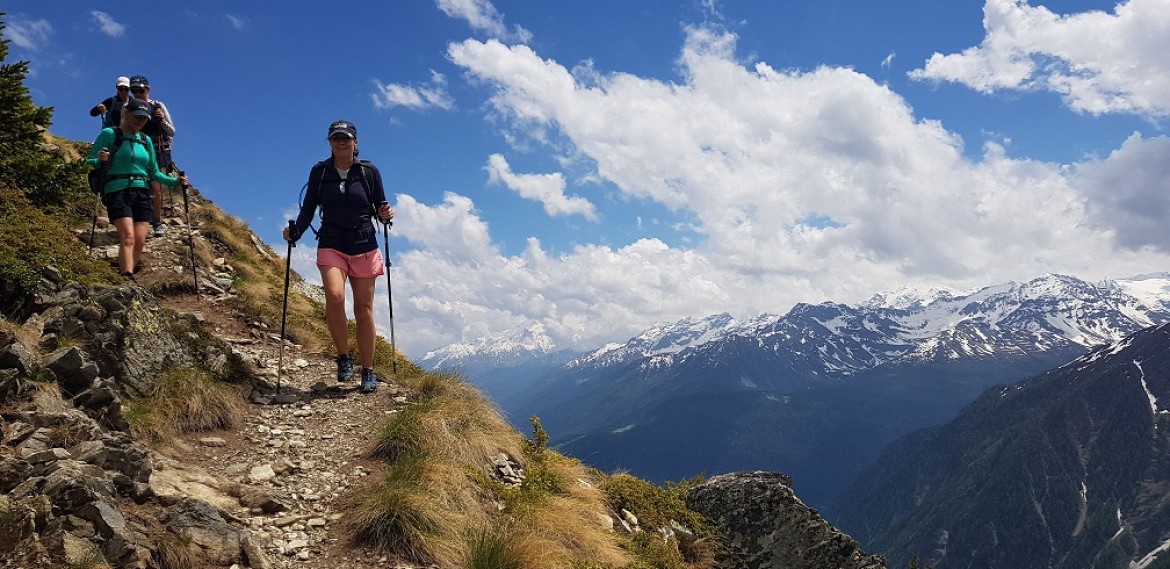
Tour du Mont Blanc - Deluxe, Guided Edition
Europe's most popular trek. Without huts, with luggage transfers and expert guides
Down from Mont Chetif along the Tour du Mont Blanc trail.
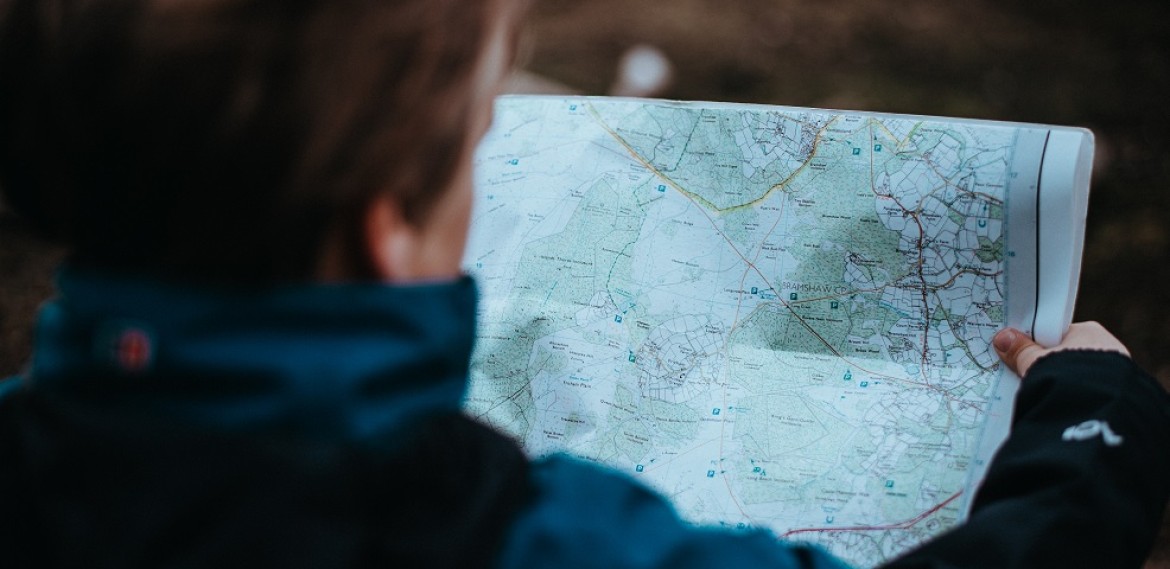
Self-Guided Tour du Mont Blanc
Self-Guided Trekking for the Independent Traveler
Photo by Annie Spratt
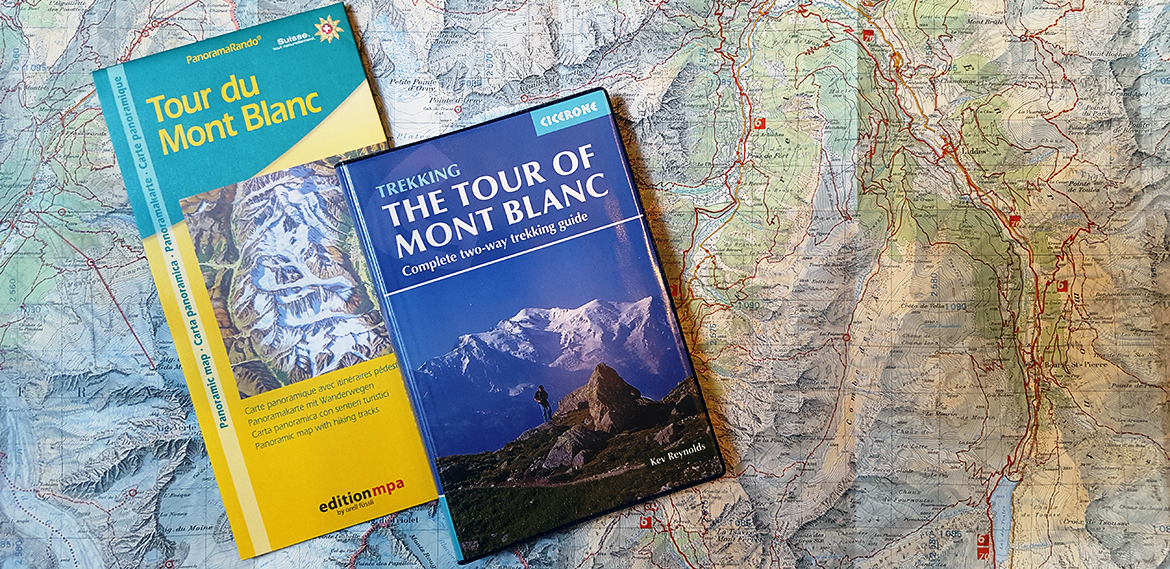
Maps, Books, and Gear
Go prepared with everything you need for a perfect trek
Some of the available maps and books on the Tour du Mont Blanc. Photo by Alpenwild

Tour du Mont Blanc Trekking
Guided and self-guided alpenwild tour options.
Hike and Trek around Mont Blanc, which rises over 15,770 feet (4,808 meters) above sea level, and is the snow-capped queen of the Alps. Its flanks, glaciers, and deep valleys straddle three countries—France, Italy, and Switzerland. Hiking the Tour du Mont Blanc is the trip of a lifetime. As you circle the base of Mont Blanc you’ll experience the immense snowfields, hanging glaciers, wild-flowered meadows, and dense forests that decorate its walls. More than just a single peak, the Mont Blanc Range, which we compass, contains ten other major summits—each over 4,000 meters high. And with all that elevation you’ll find abundant glaciers, including the Mer de Glace and the Miage Glacier—the longest glaciers in France and Italy, respectively.
A classic Alps adventure awaits as you join one our guided or self-guided Deluxe Tour du Mont Blanc treks.
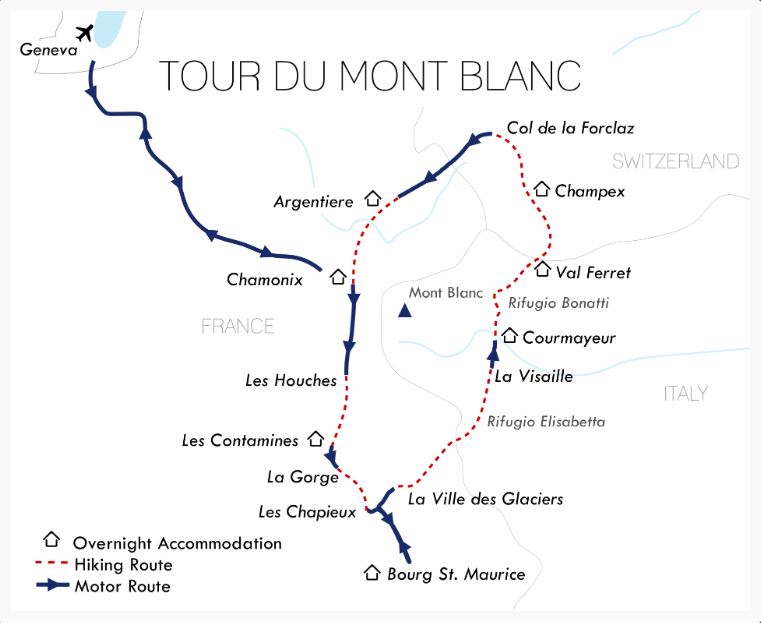
Starting in Chamonix, France, the 12 days and 11 night Deluxe Tour du Mont Blanc Alpenwild trek includes:
- Handpicked inns and hotels (no huts)
- Luggage transfers
- Experienced and qualified guide
- Incredible meals
- Transportation to and from the airport and during the tour
- Les Hauches cable car
- Bioonassay suspension bridge
- Visit the 15th century baroque chapel of Notre Dame de la Gorge
- Courmayer rest day
- Skyway Monte Bianco – cable car
- Courmayer nature gardens
What are you waiting for? Come join us on the Tour du Mont Blanc this summer!
Do you have any questions or concerns? Talk with an expert (who has actually done the tour) email [email protected] or call 801-226-9026.
Tour du Mont Blanc: A Trek of a Lifetime
With nothing to do but book flights and get in shape for this classic trek, prepare to have the adventure of a lifetime. At Alpenwild, we are Tour du Mont Blanc tour experts. You will thoroughly enjoy the trails, accommodations, meals and comradery along the trail.
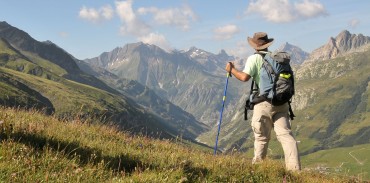
Tour du Mont Blanc Overview
Let’s start planning your Tour du Mont Blanc hike with the basics. Where. When. How.
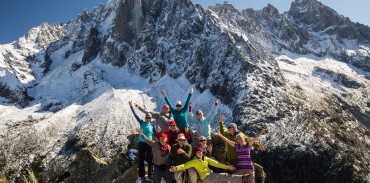
A Mont Blanc Trek Above the Rest
Discover what features make Alpenwild's Tour du Mont Blanc stand out from the rest.
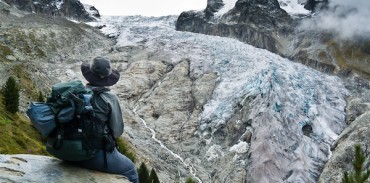
Trek Packing List
We've been there, done that and share our packing list so you can go there, without forgetting that.
The Perfect Way to See the Alps
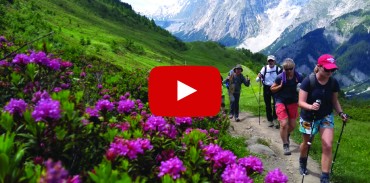
Tour du Mont Blanc
Be a part of the Tour du Mont Blanc for just 4 minutes in this new Alpenwild video
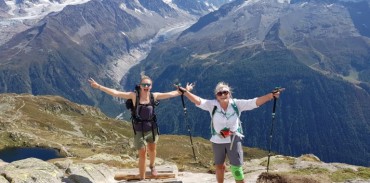
Guides and Trip Leaders
Alpenwild guides are the best in the Alps. Meet them. Read their stories. See what our guests say about them.
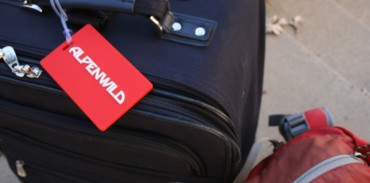
Luggage Transfers and Shuttles
Hike light and enjoy the trek. Luggage transfers make all the difference
The Tour du Mont Blanc is a classic inn-to-inn alpine trek—one which Alpenwild has refined with many creature comforts, exquisite cuisine, and superb accommodations. As you trek the Tour du Mont Blanc, you’ll experience the culture, the rich history of the Alps along with the stories of how this massive mountain has beckoned hikers and mountaineers for over 250 years. Our 12-day guided trip sets a new standard, and on our self-guided treks you can adjust the itinerary to perfectly suit your skills and interests.

See our Privacy Policy.

IMAGES
VIDEO
COMMENTS
Because yes, becoming a hero is the goal of every participant of the Tour du Mont-Blanc. "The world's toughest one day bike race". This is how the cycling press describes the Tour du Mont-Blanc Cyclo. Indeed, riding 330km and face the 8300m of elevation gain that we offer you, in one day, is not an easy task!
The monuments of the conquest of Mont Blanc (1786) in the Chamonix square. The first of 1887 is dedicated to Balmat De Saussure and the second was opened 100 years later to return M.G.Paccard about who was the real soul of the undertaking. The bearded vulture (Gypaetus barbatus) it's one of the biggest vulture which nesting in the old continent.
The Tour du Mont Blanc (TMB) is a 170-km trek that circles the Mont Blanc massif. The route is traditionally walked in the anti-clockwise direction over 11-stages. The TMB starts and finishes in the French village of Les Houches, which sits adjacent to the popular mountain town of Chamonix.
The Tour of Mont Blanc (TMB) is the circumnavigation of the Mont Blanc massif. It's an absolutely spectacular ride passing glaciers, crossing high mountain passes and traversing the frontiers of France, Switzerland and Italy. Originally a walker's route, it is becoming a popular tour for mountain bikers. There are a lot of tracks in each valley ...
This classic Tour du Mont Blanc 11 day itinerary follows the traditional route of the TMB. Trek every step of this glorious 170km trail through France, Italy and Switzerland basking in the magnificent scenery of this once in a life time long distance trek. Our Tour du Mont Blanc 11 day itinerary eases you into the trail with a nice easy first ...
Welcome to the Tour du Mont Blanc (TMB) 3 countries, one identity, 10,000 m in altitude and about 60 hours of walking, 170 km of discovery for a total of 10 days of satisfaction!
The Tour du Mont Blanc is one of the most famous hiking routes in the world. A circular route filled with spectacular glaciers, breathtaking alpine meadows, grand mountain passes and charming valleys. Crossing the borders of three countries; France, Switzerland and Italy. With Covid preventing all long haul travel, but European countries just opening up just enough for EU residents to cross ...
The Tour du Mont Blanc or TMB is one of the most popular long-distance walks in Europe. It circles the Mont Blanc massif, covering a distance of roughly 165 kilometres (103 mi) with 10 kilometres (6.2 mi) of ascent/descent and passing through parts of Switzerland, Italy and France. It is considered one of the classic long-distance hiking trails ...
Three days, three countries, more than 320 km (200 mi) and more than 9,000 metres (30,000 ft) of elevation gain: discover the legend of the Tour du Mont Blanc by bike. Climb several of the Tour de France's legendary passes and follow in the footsteps of iconic riders through impressive descents in the French, Swiss and Italian Alps. This road bike adventure is, in my opinion, one of the most ...
The Tour du Mont Blanc (TMB) is a captivating multi-day hike that circuits the Mont Blanc massif in usually 10-11 days, passing through France, Italy and Switzerland. The main Tour du Mont Blanc route is 170 km (105 miles) long and involves 10,080 meters (33,071 feet) of elevation gain and loss. The Mont Blanc mountain range takes its name from ...
The Tour du Mont Blanc is the most popular long-distance trek in Europe that covers a total distance of approximately 170km depending on which route is taken (some variants can be sorter or longer than the original section). The daily height gain on the Mont Blanc circuit is substantial, and overall the accumulation over the 10 days is in the ...
The Tour du Mont Blanc (TMB), one of the most well-known GR footpaths in Europe, takes you 170 kilometres (105 mi) along magnificent trails between France, Italy and Switzerland. Three countries, seven days of walking, and a succession of breathtaking landscapes. The scenery changes frequently, allowing you to discover the Alp's true variety. You plunge into the heart of glacial valleys ...
The Tour du Mont Blanc is roughly 170 kilometres (110 miles) long with 10,000 metres (6 miles) of ascent/descent as it passes through parts of Switzerland, Italy and France while circling the Mont Blanc massif. As much as some super-hikers like to let everyone know how they raced around it in 7 or 8 days, anyone who says it was easy is either ...
Nothing beats the world-famous Tour du Mont Blanc trek! In just 12 days we'll get to do it all: enjoy views of impressive glaciers, reach some +8,200ft mountain passes, and hike through some screensaver-worthy Alpine meadows, all around the highest peak of Western Europe. Between that morning espresso shot and the evening glass of French wine ...
The Foolproof Tour du Mont Blanc Itinerary: 10-Days. 10 days of hiking in the Alps - the ULTIMATE wellness trip if you ask me. This Tour du Mont Blanc self-guided itinerary follows the traditional TMB route, includes tips, daily trail specs, and accommodation suggestions, and addresses some of the most common questions you might be asking ...
Full Tour du Mont Blanc. One trek, three countries, ten days, 160 kilometres (100 miles), and thousands of steps: even these impressive figures cannot fully reflect the range of emotions you will experience on the TMB! This circuit is the full version of the mythical TMB. It will enable you to discover the extraordinary diversity of landscapes ...
The Tour du Mont Blanc is a 170 km trekking trail through France, Italy and Switzerland. Circumnavigating Western Europe's highest mountain, Mont Blanc, it is one of the world's classic multi day treks and is on every serious hiker's bucket list. Tour du Mont Blanc Hike is a blog dedicated to all aspects of the famous Tour du Mont Blanc ...
To do the Tour du Mont Blanc in 7 days, you follow the same route as for the full Tour du Mont Blanc from Les Houches, with two differences. On the one hand you arrive in Argentière, in the commune of Chamonix-Mont-Blanc. From there you can take the train RERS004 to be in Chamonix in less than 20 minutes. On the other hand you will take the ...
Itinerari MTB a tappe / Tour du Mont Blanc. the.mtb.biker si è rinnovato! Tutti gli itinerari di The.mtb.biker si sono trasferiti su nest.bike, dove troverai i migliori percorsi offroad per le tue escursioni ciclistiche, mountain bike e gravel!
Il Tour du Mont Blanc è un percorso di circa 330 km e 8.900 metri di dislivello che si snoda attorno al massiccio del Monte Bianco. Un itinerario esigente, ma al tempo stesso in grado di offrire emozioni indimenticabili. Ne esiste anche una versione pensata per il gravel e un'altra che ripercorre, attraverso impervi sentieri da Mtb, il trail ...
It's worth noting that each 'stage' is LONG averaging between 13-20km per day over challenging terrain, expect between 700m up to 1000m elevation gain each day! Covering the entire Tour du Mont Blanc in 11 days is no walk in the park - expect to be on the trail between 7-9 hours per day. Some of you may want to walk at a more leisurely ...
Hike and Trek around Mont Blanc, which rises over 15,770 feet (4,808 meters) above sea level, and is the snow-capped queen of the Alps. Its flanks, glaciers, and deep valleys straddle three countries—France, Italy, and Switzerland. Hiking the Tour du Mont Blanc is the trip of a lifetime. As you circle the base of Mont Blanc you'll ...